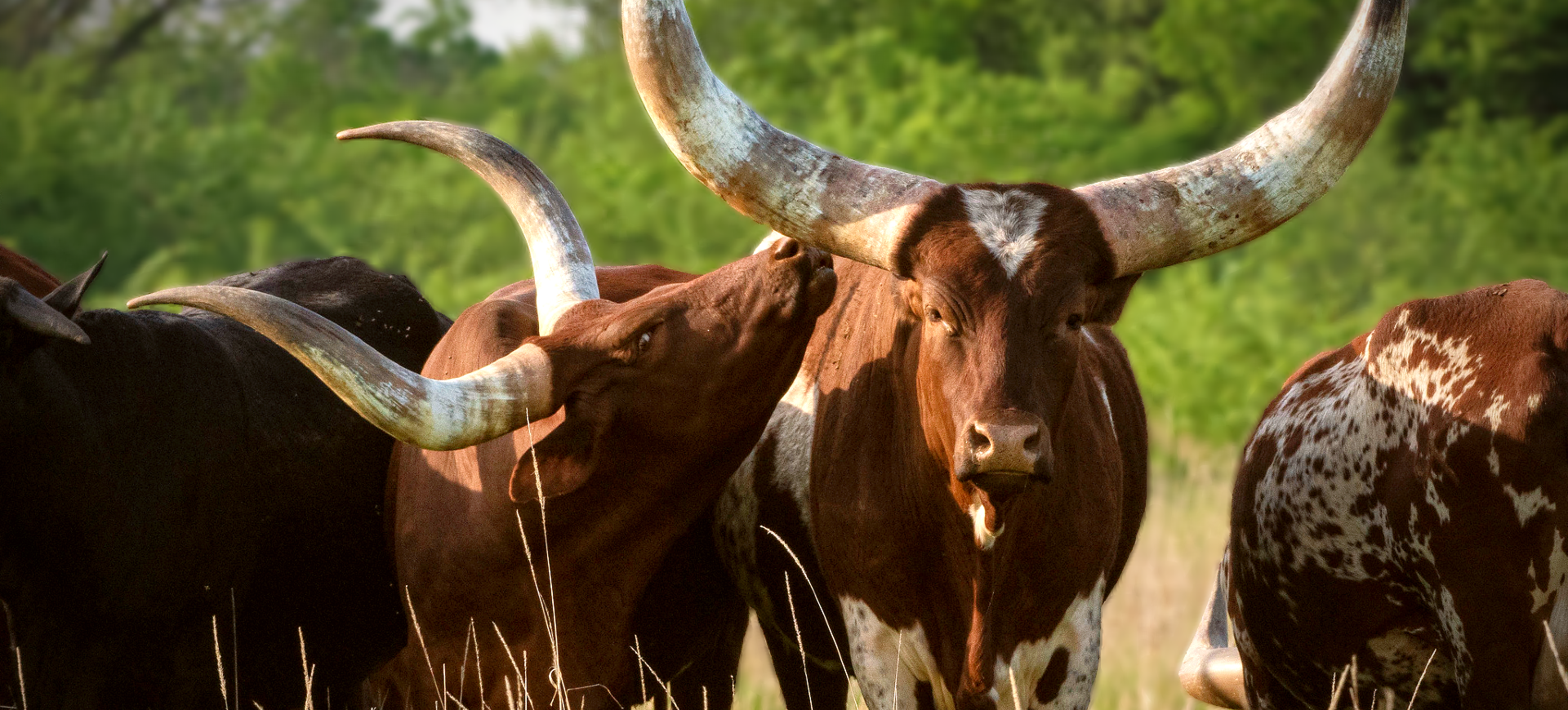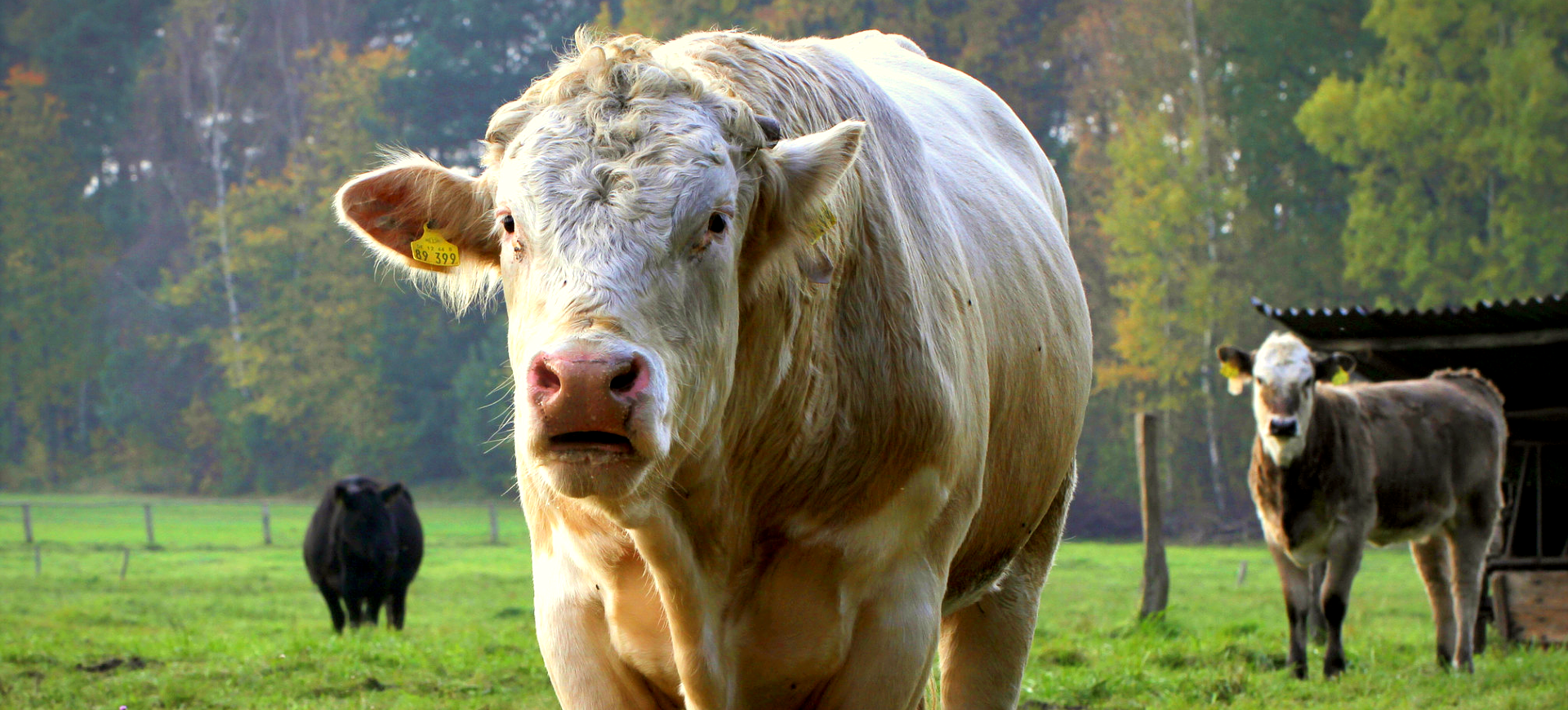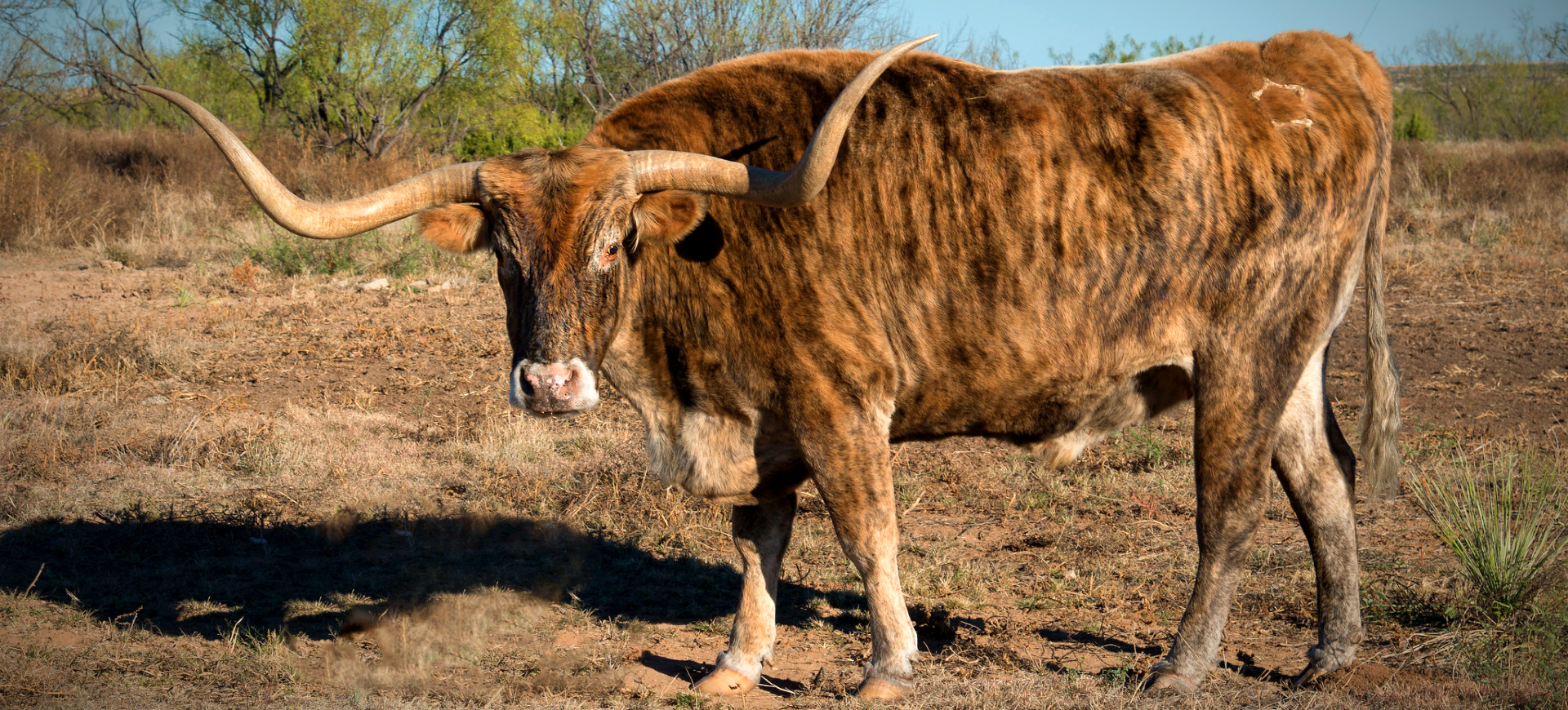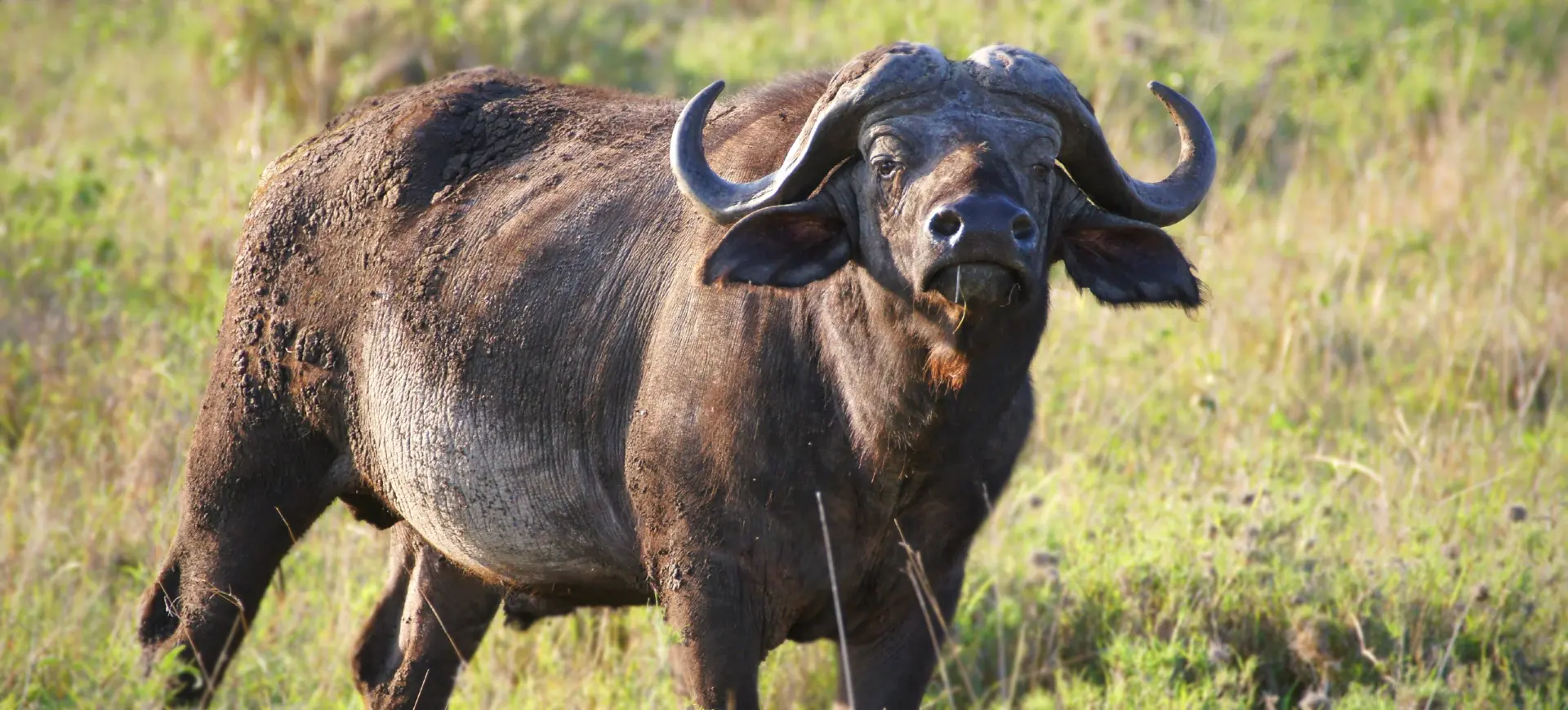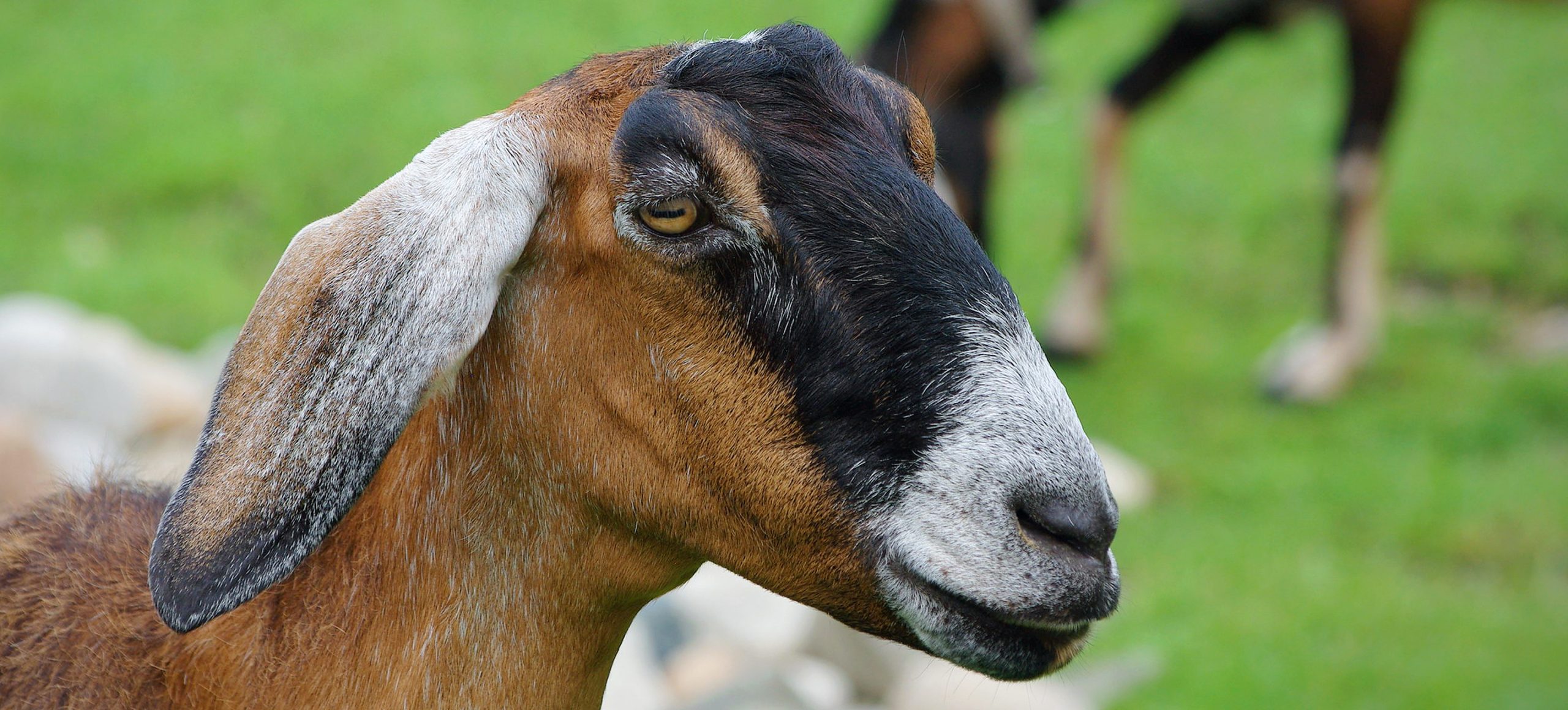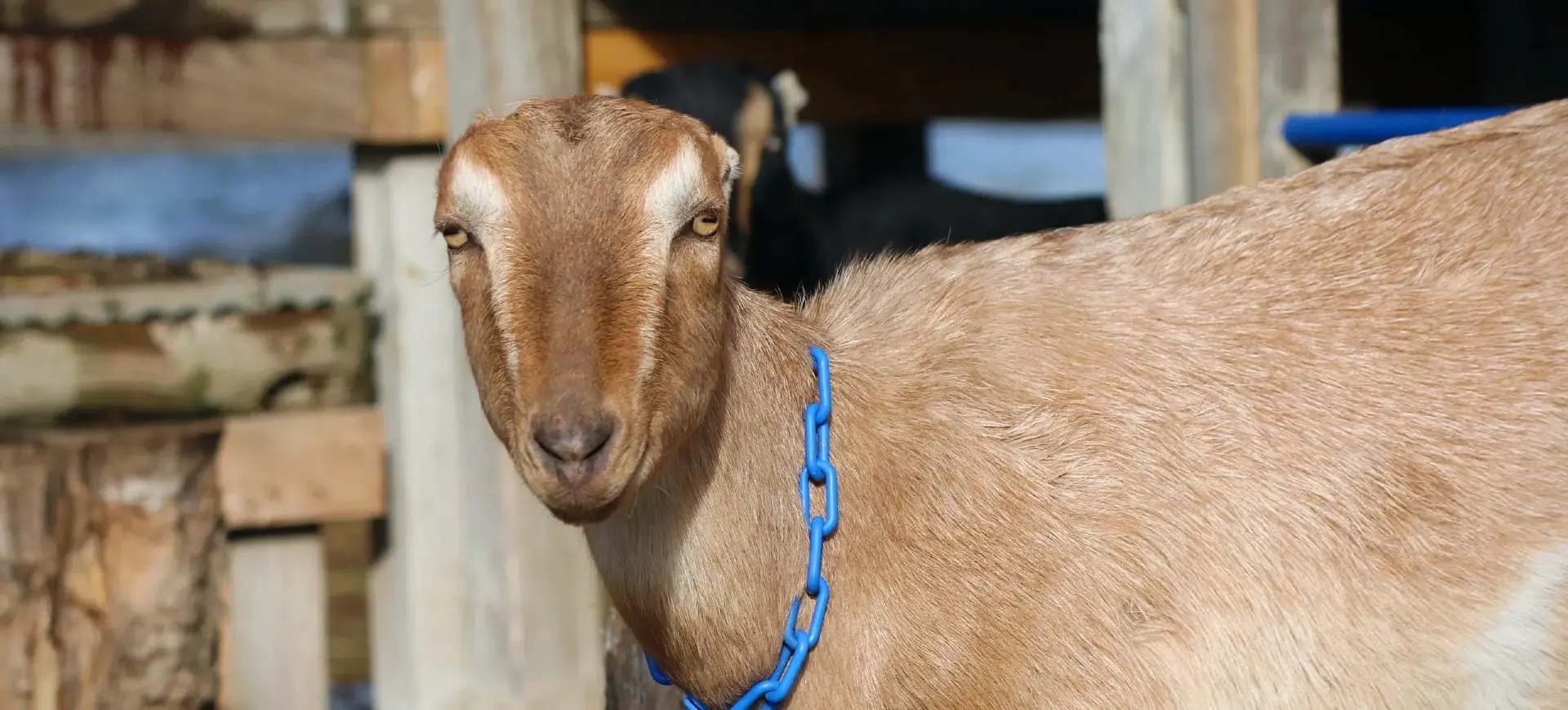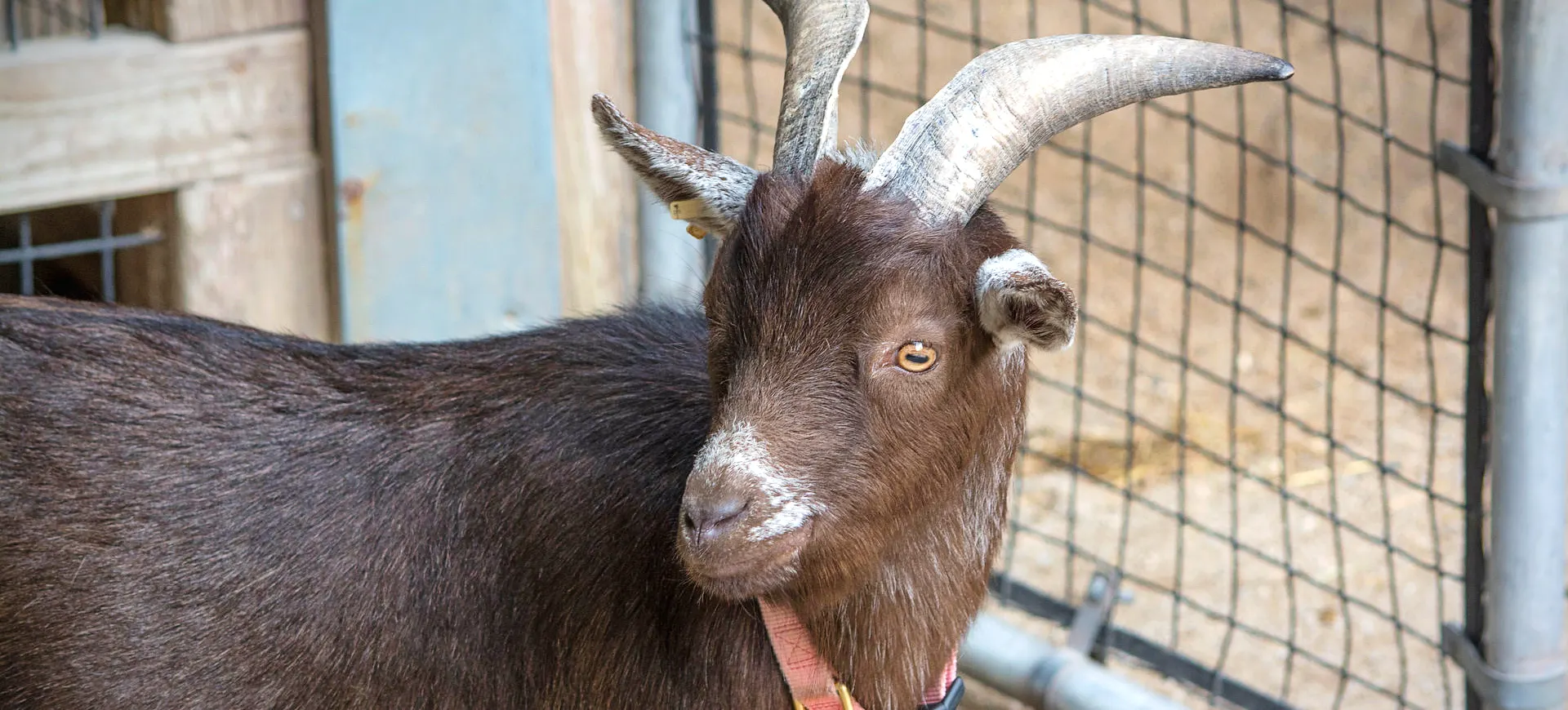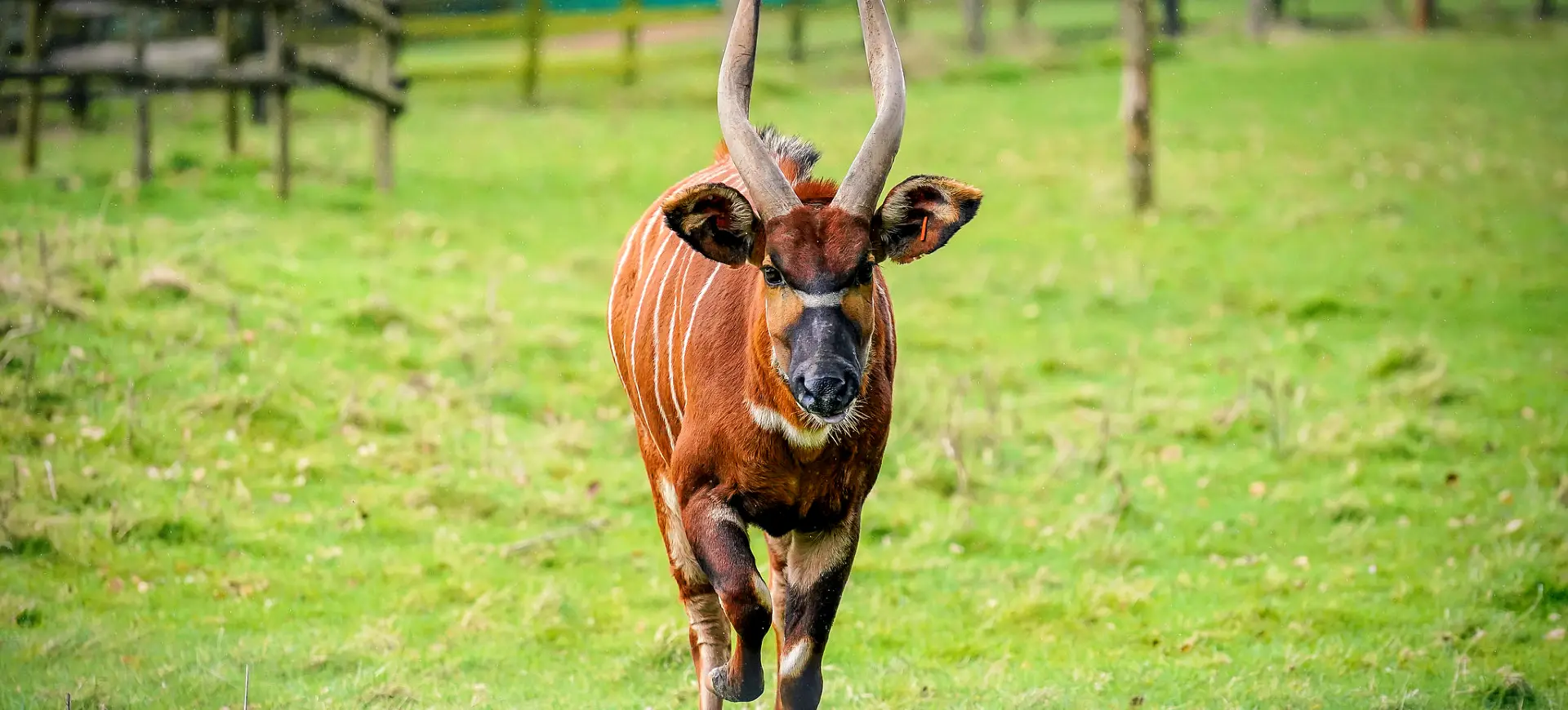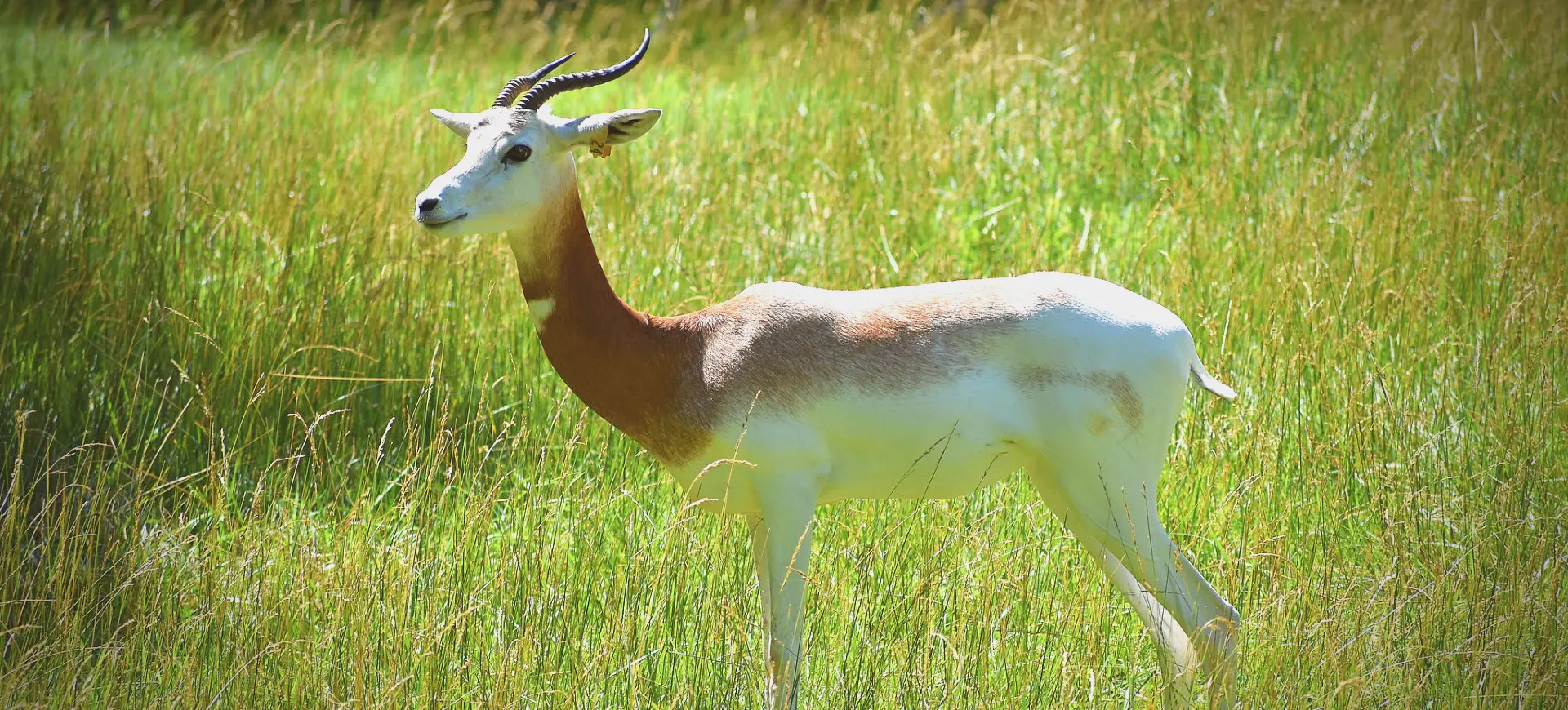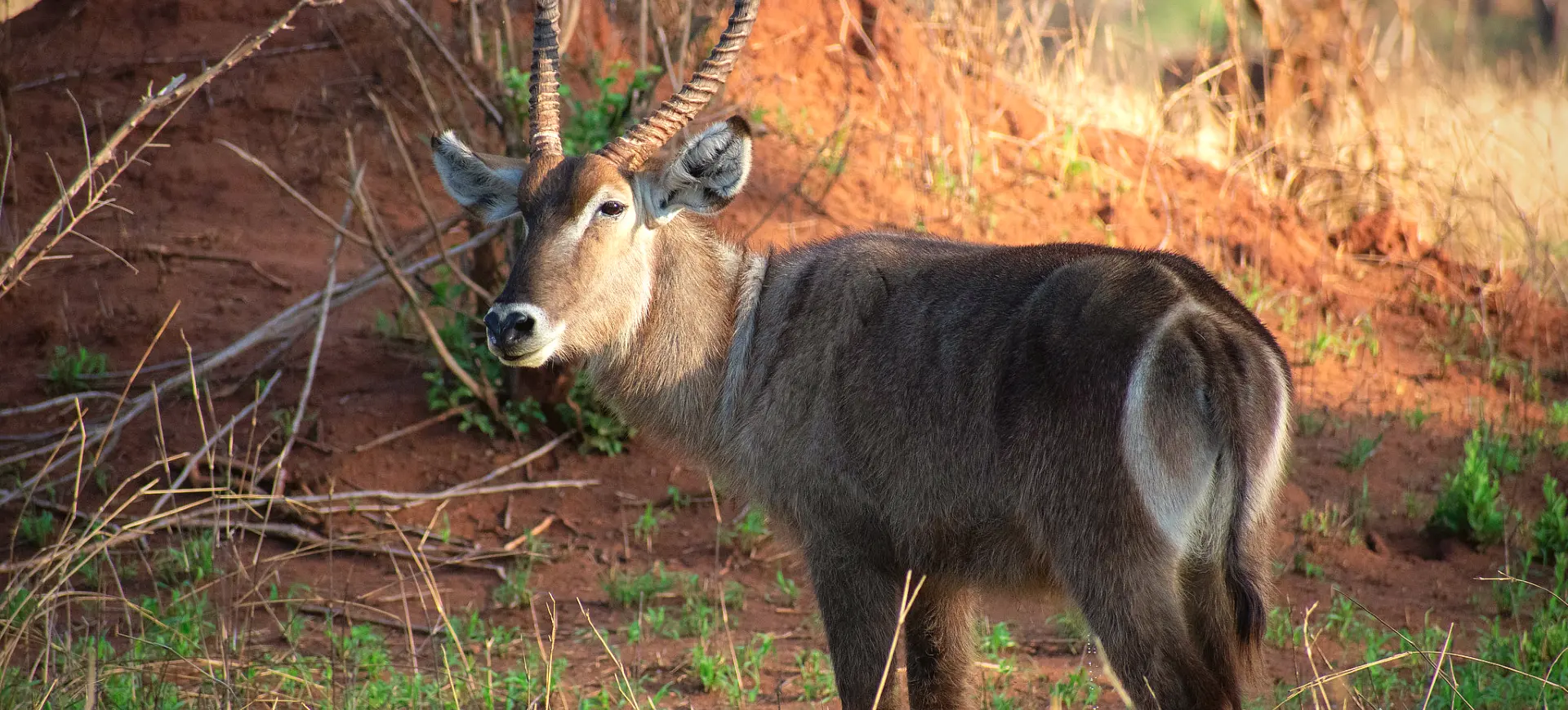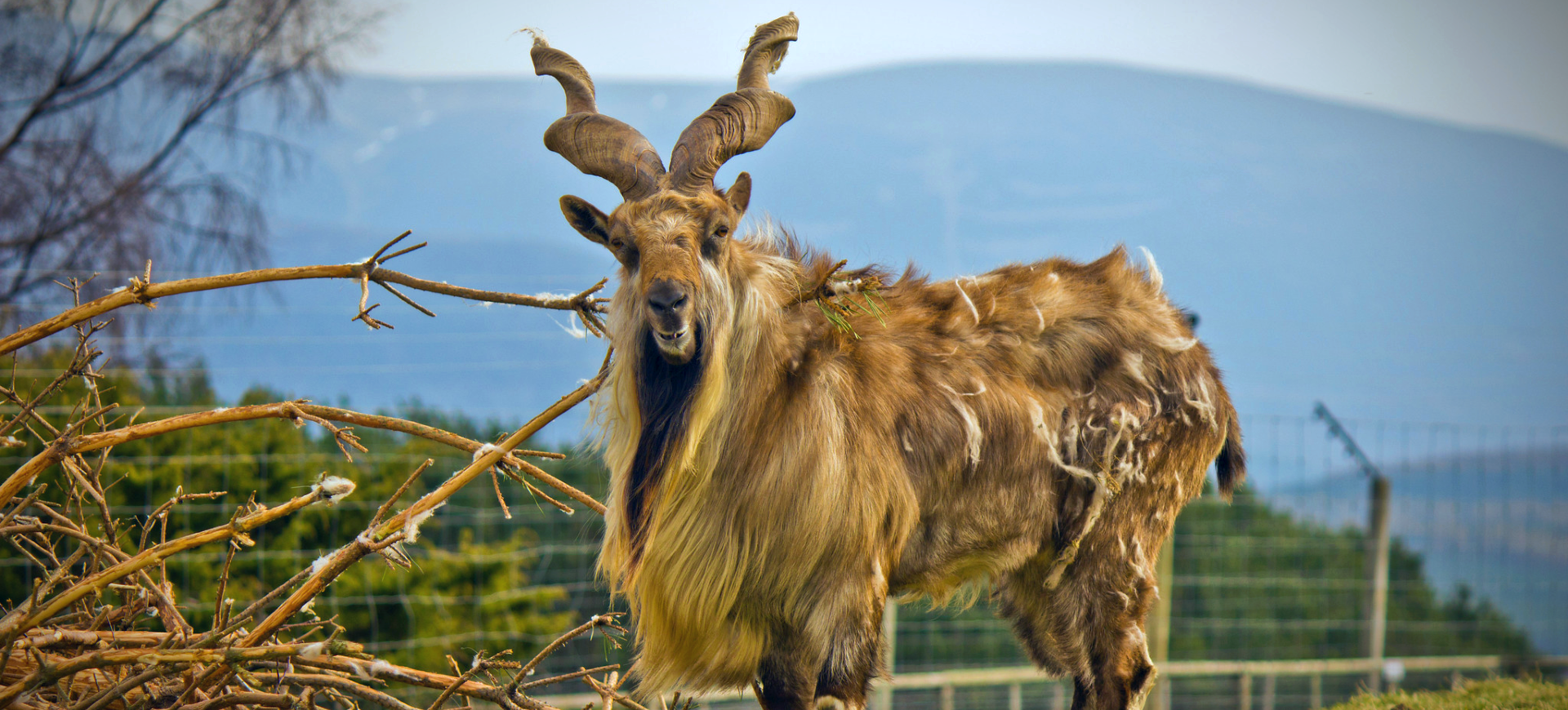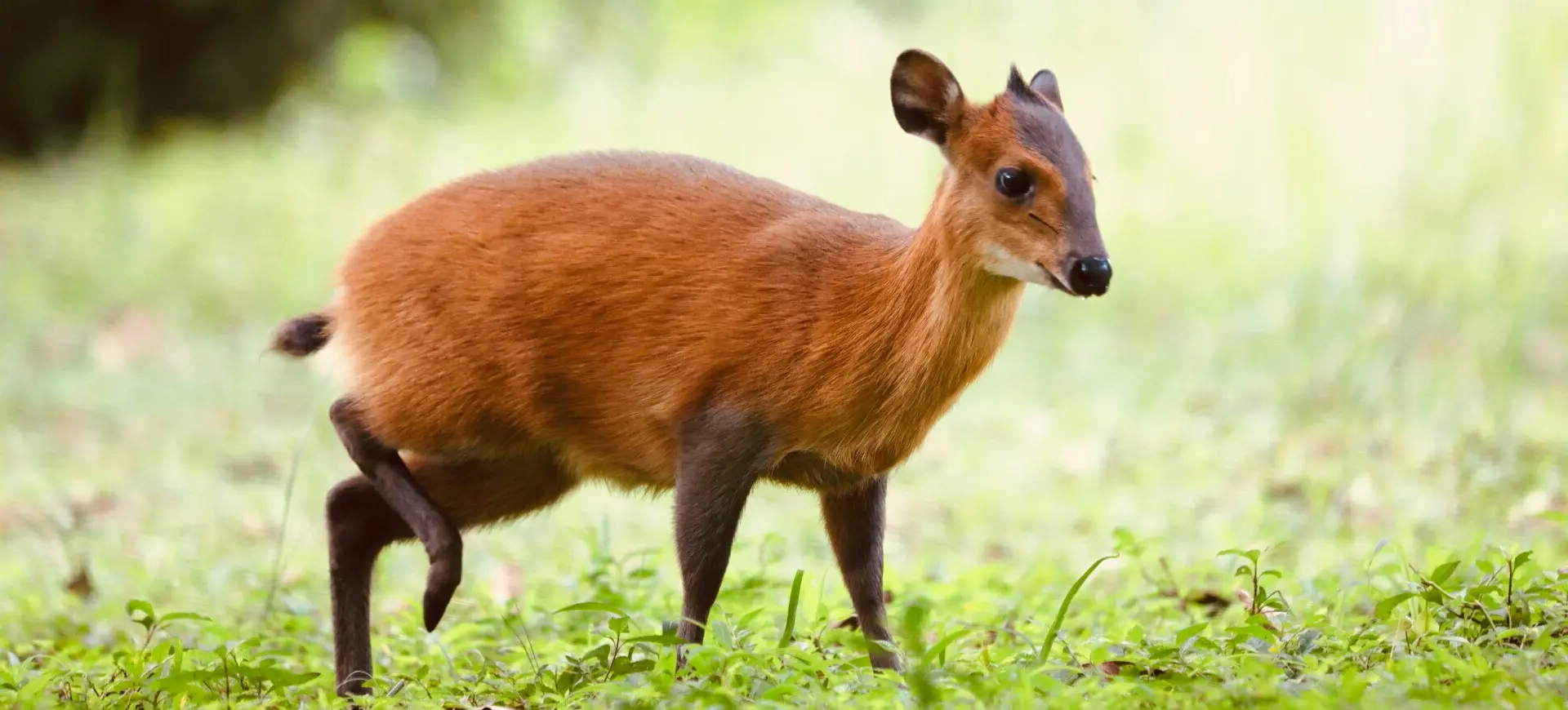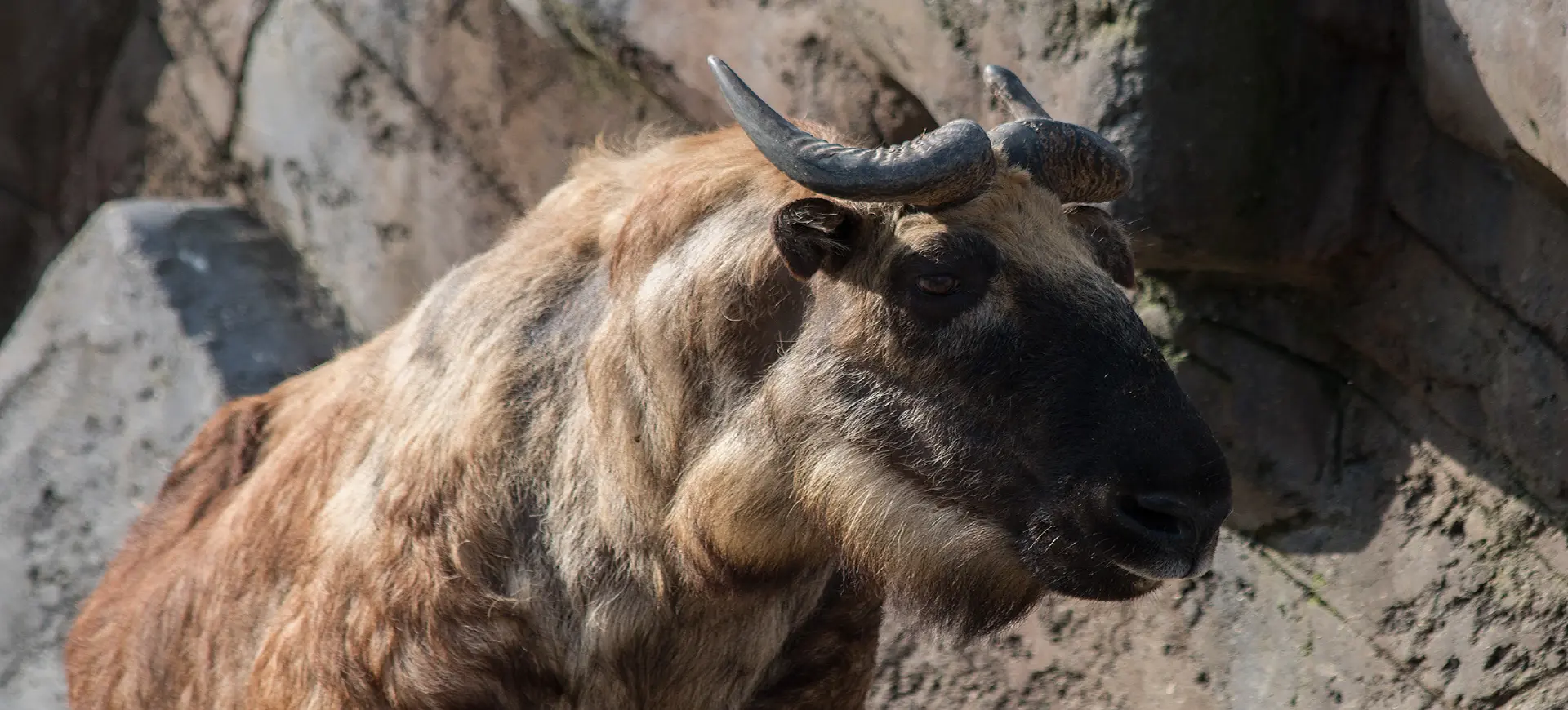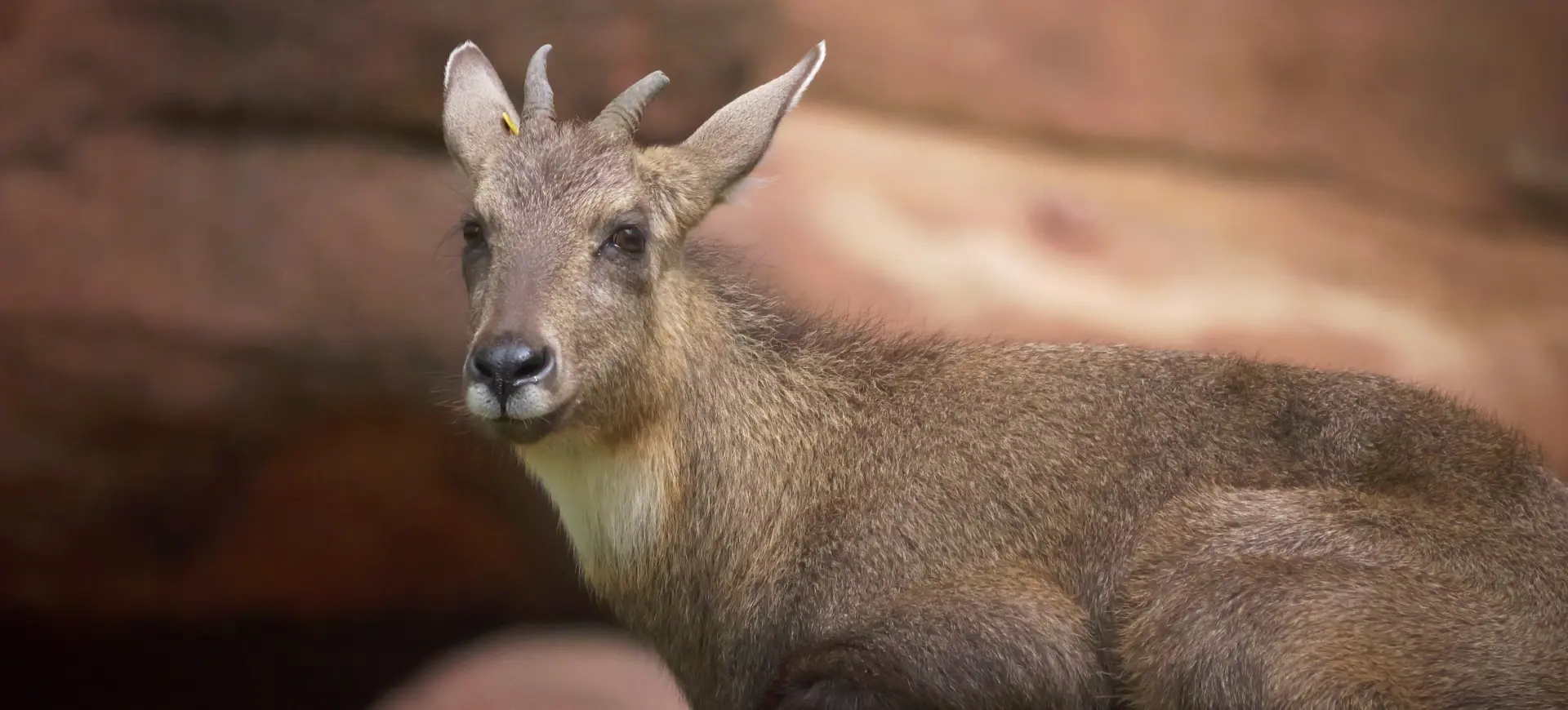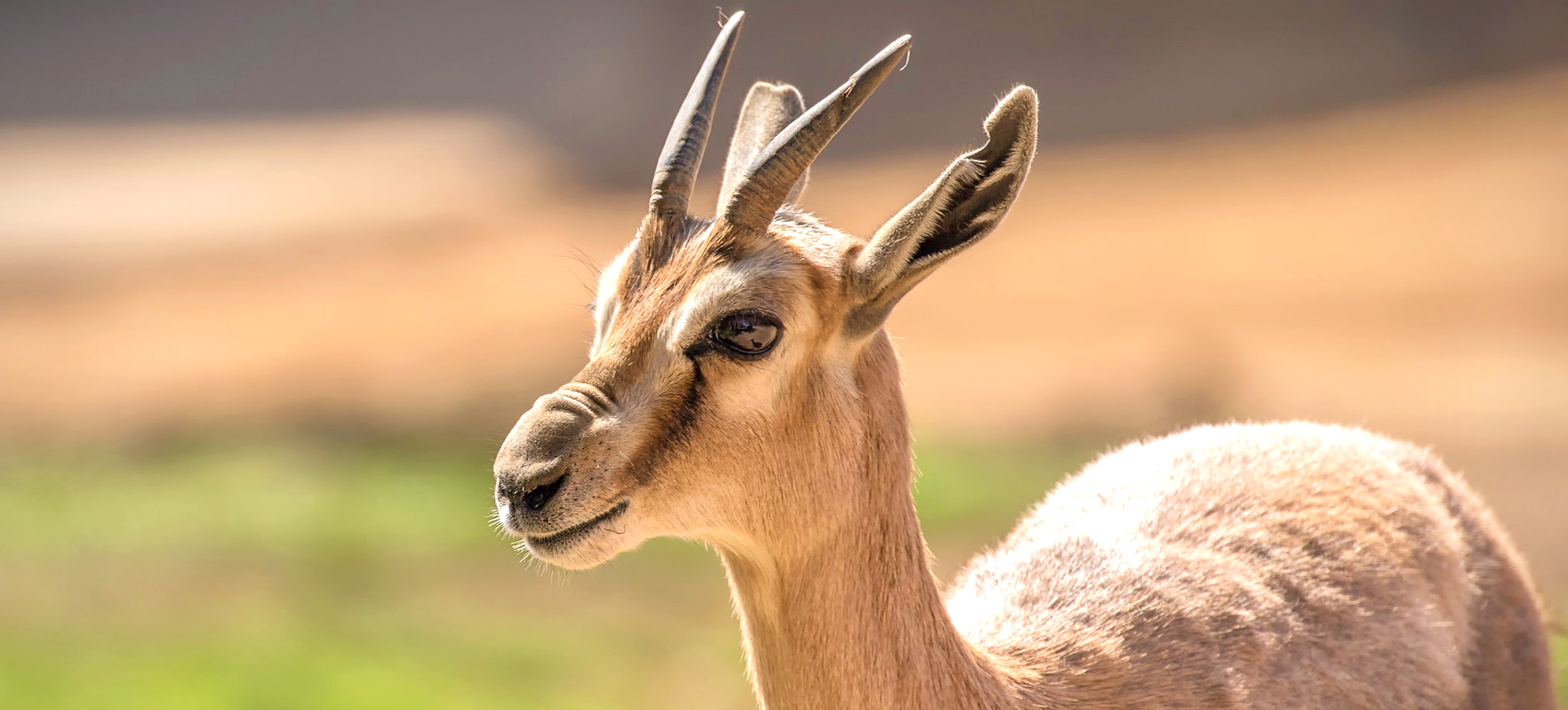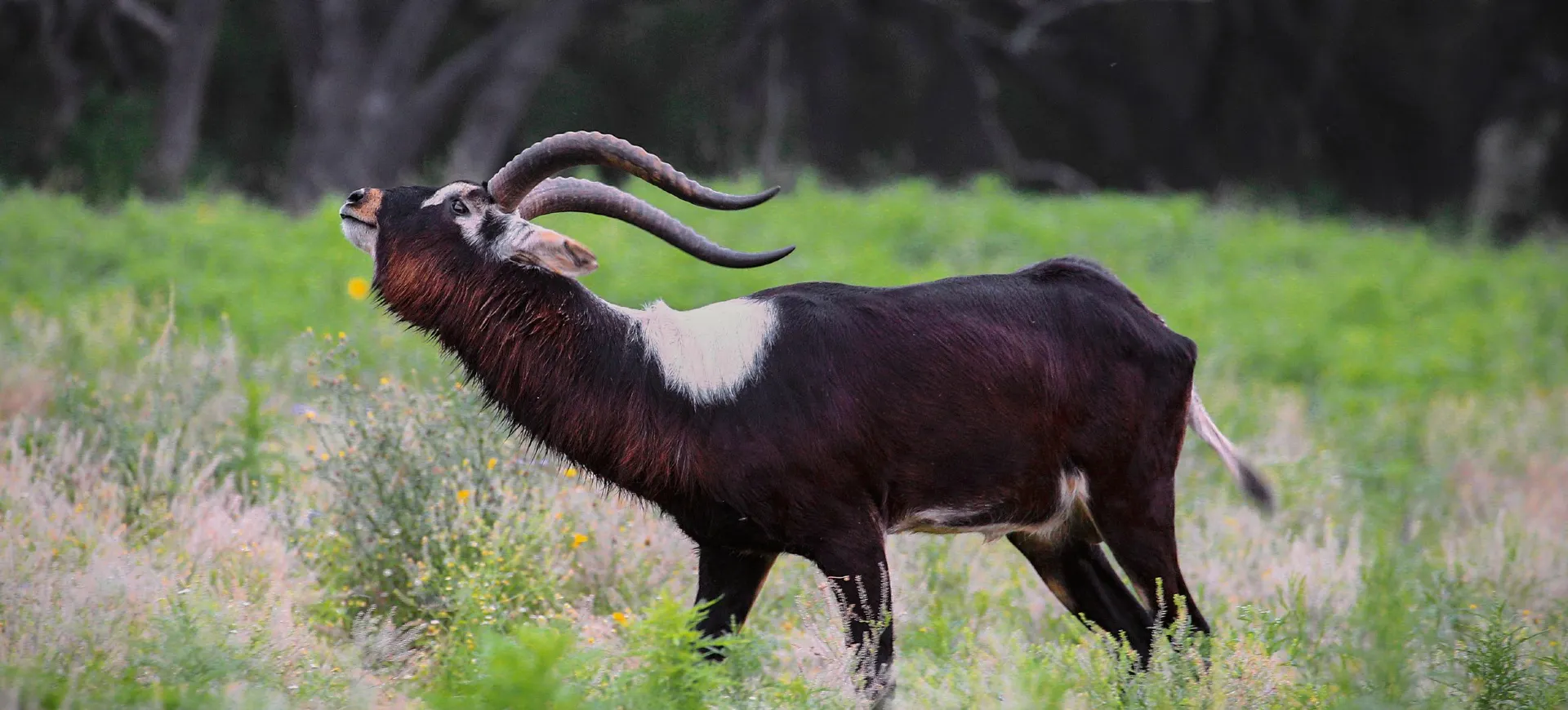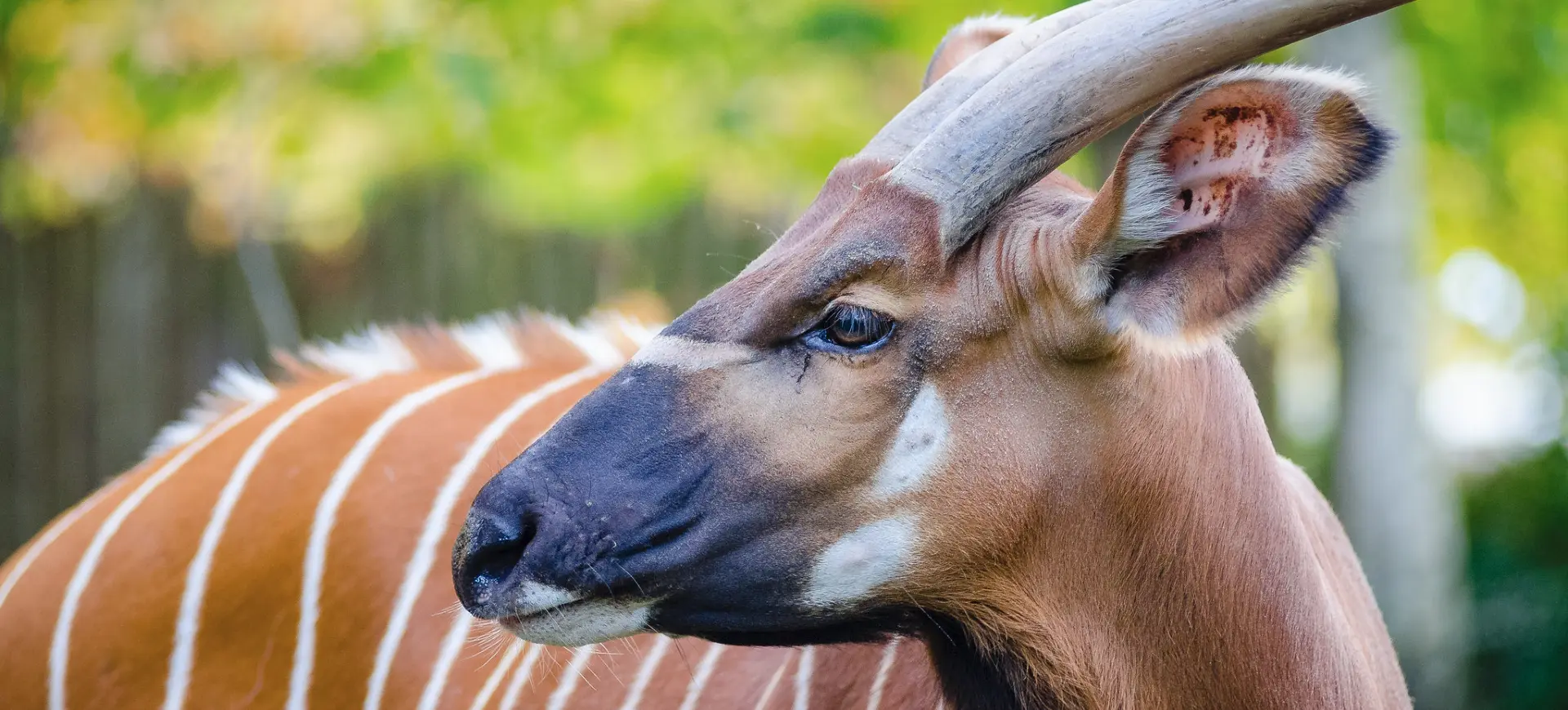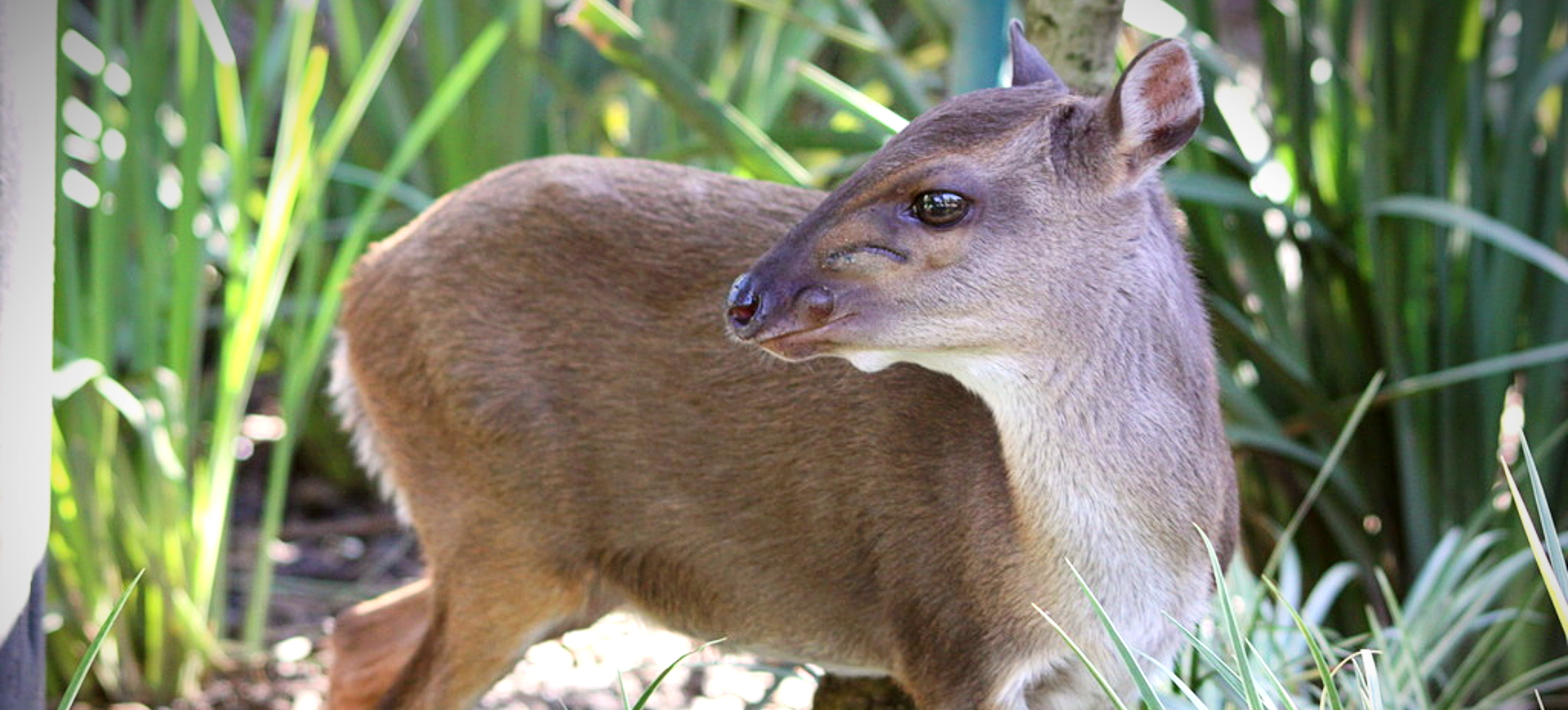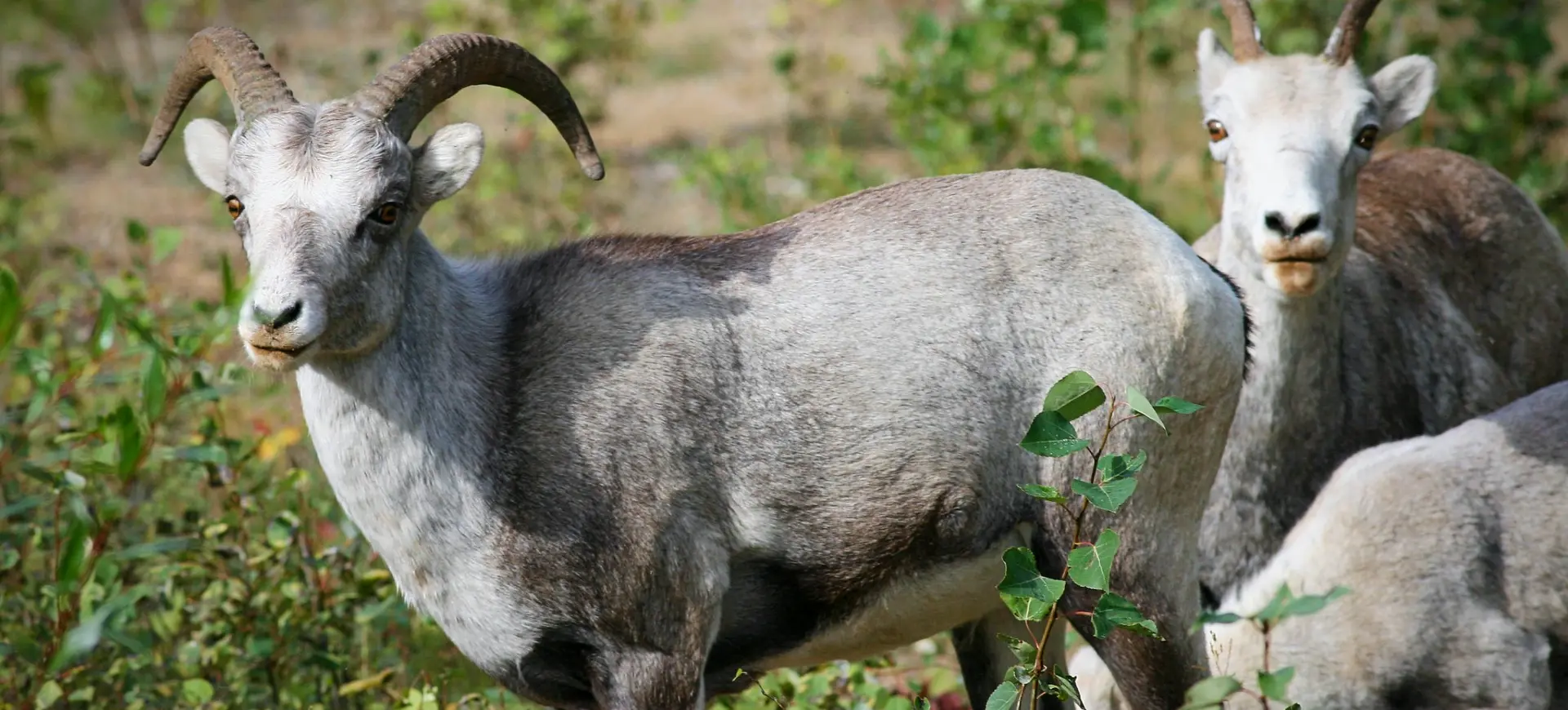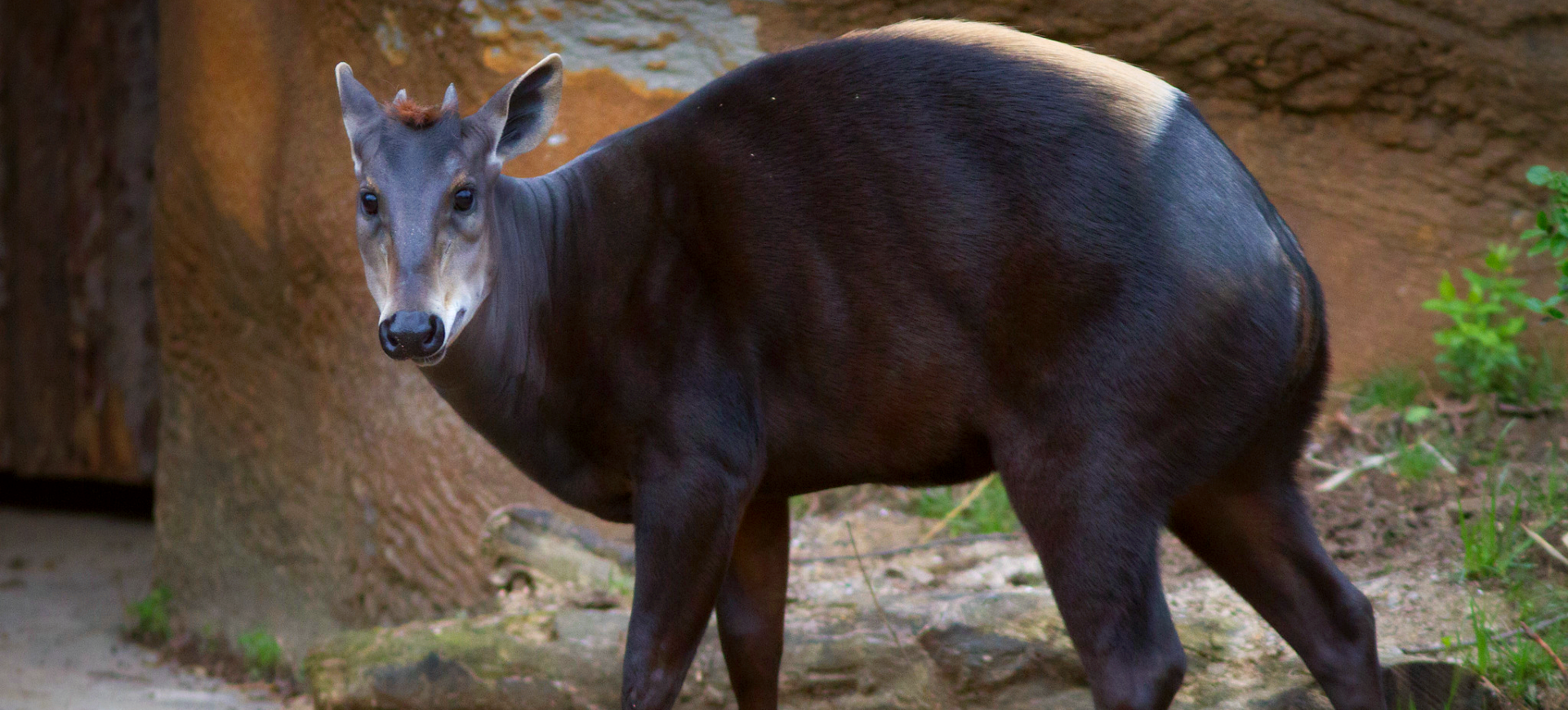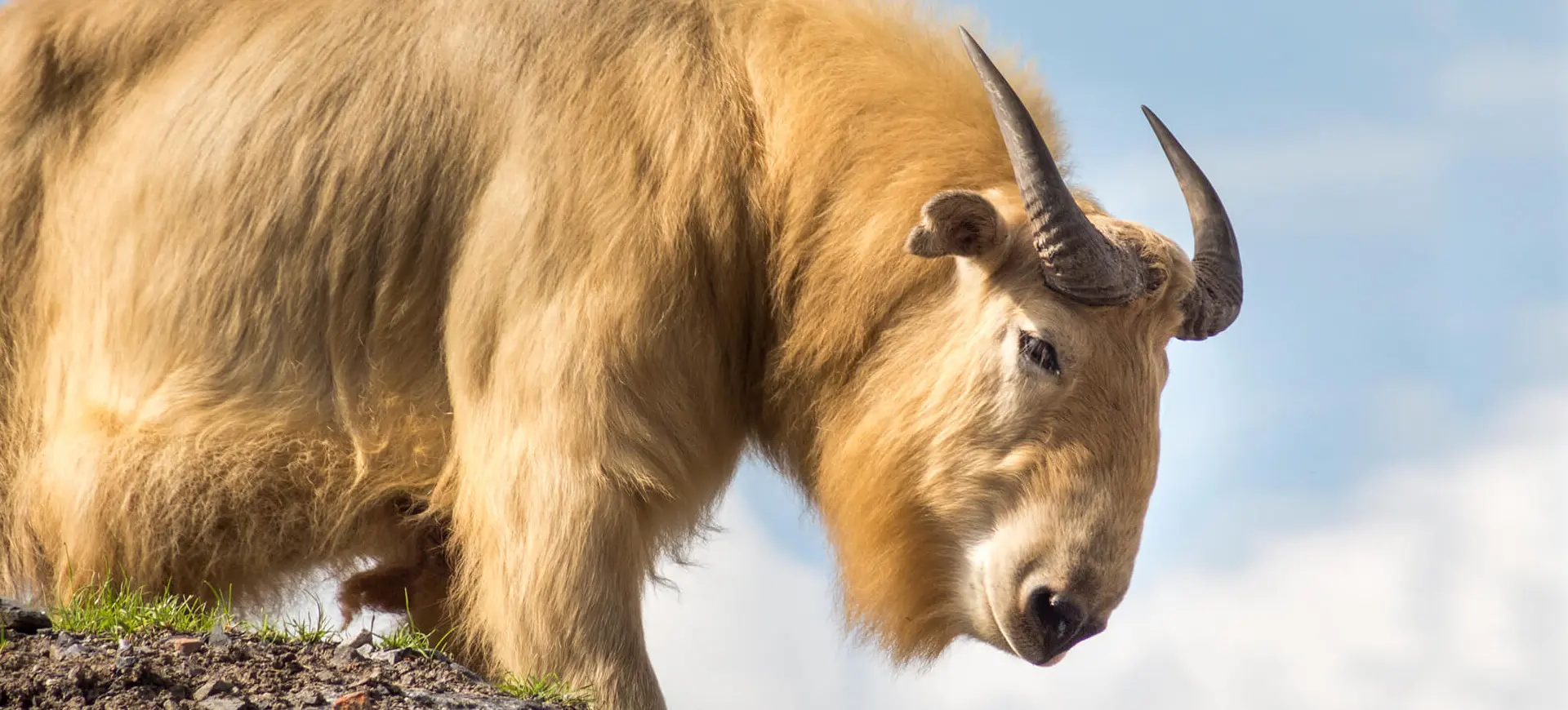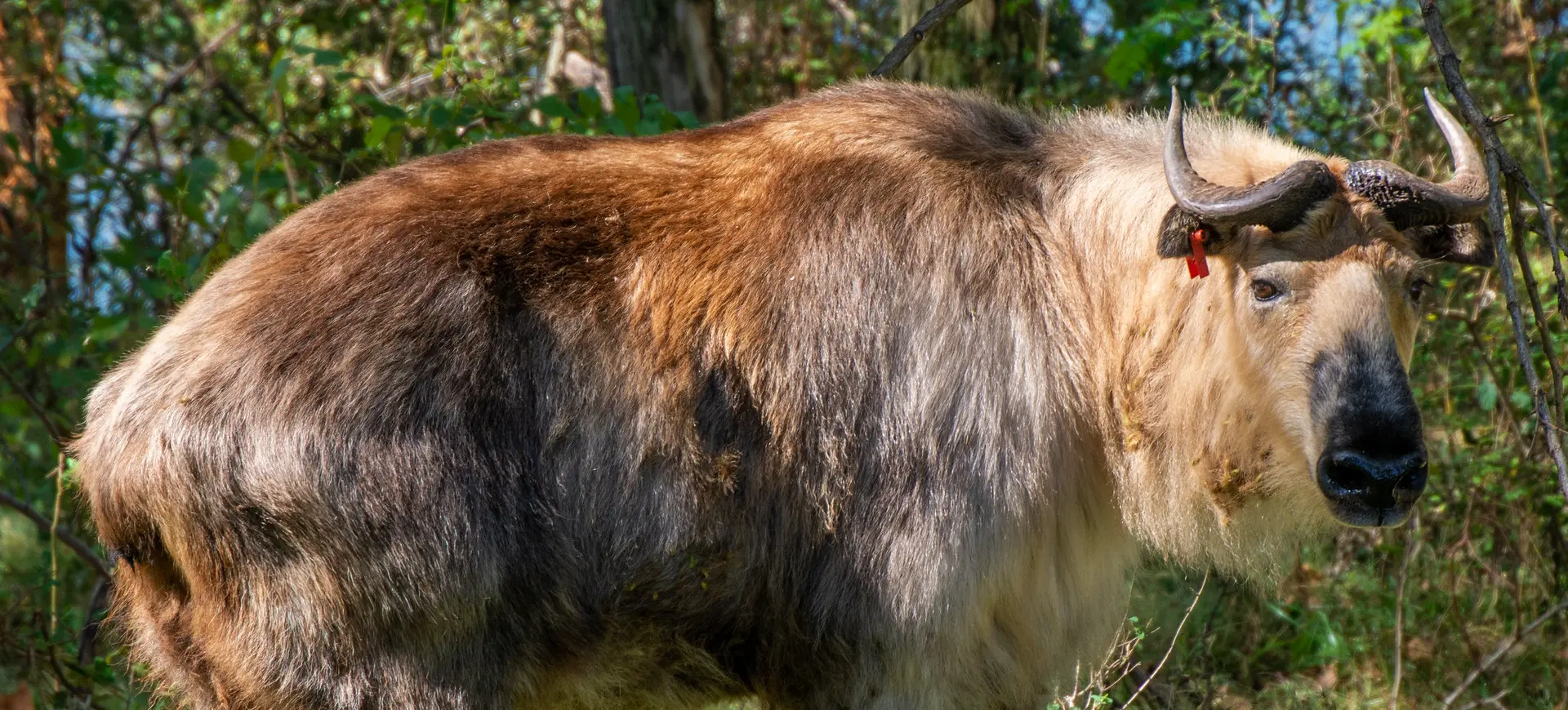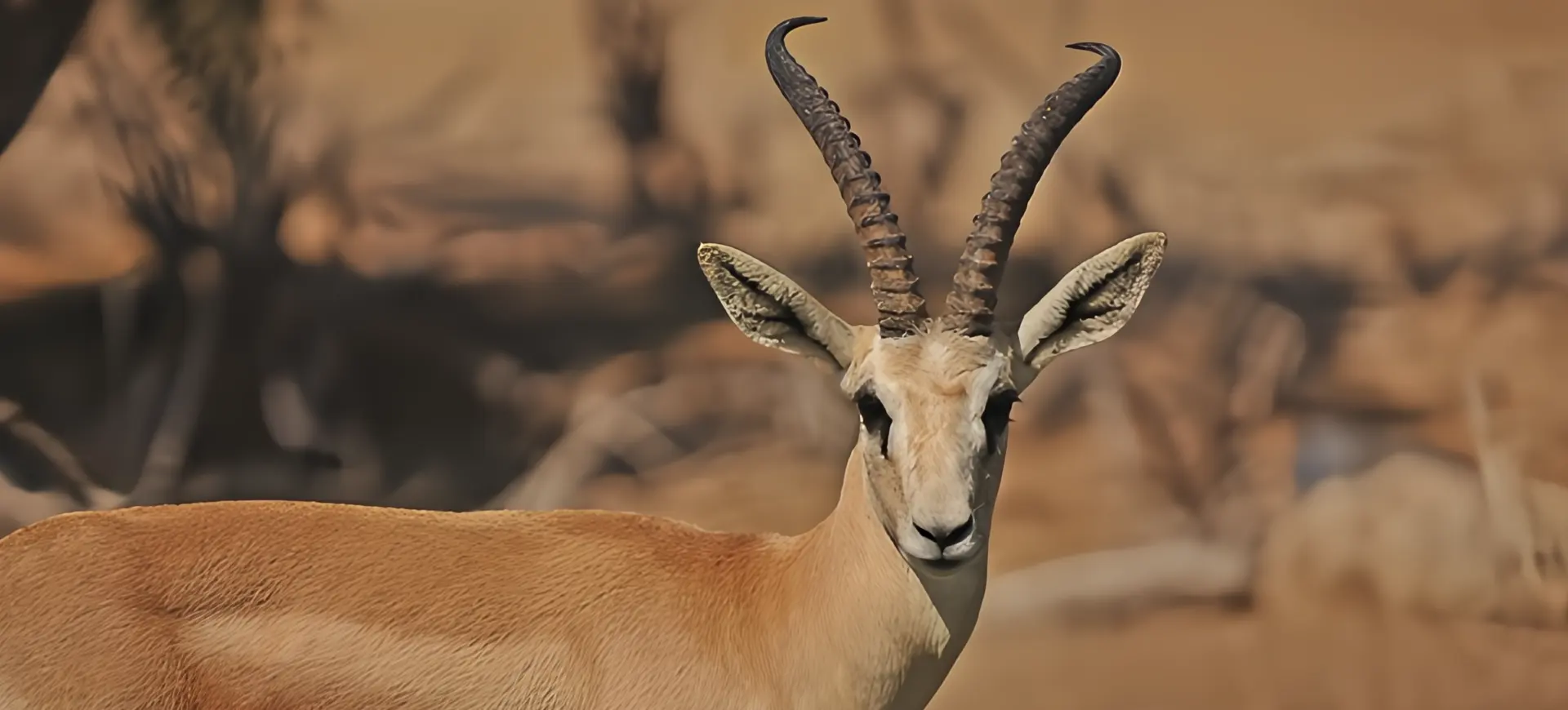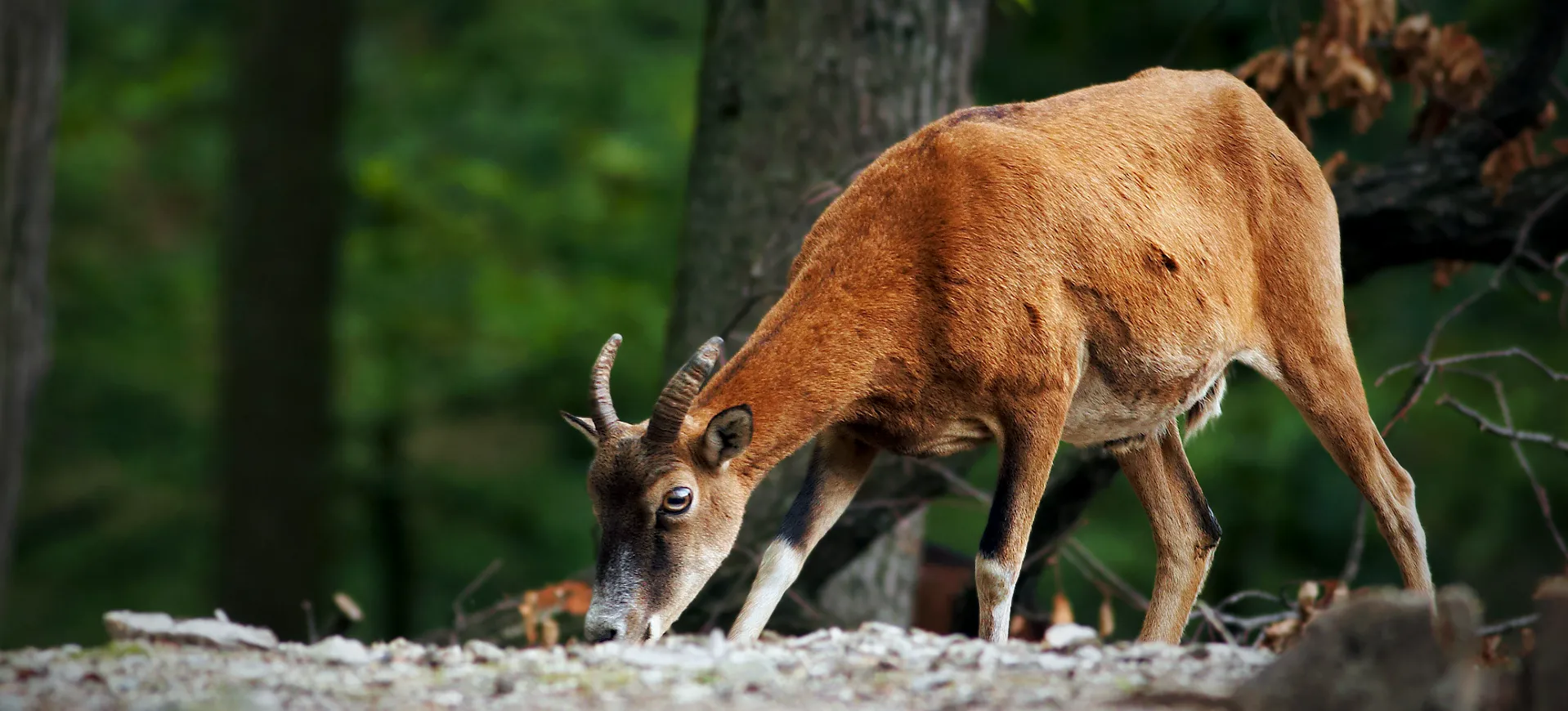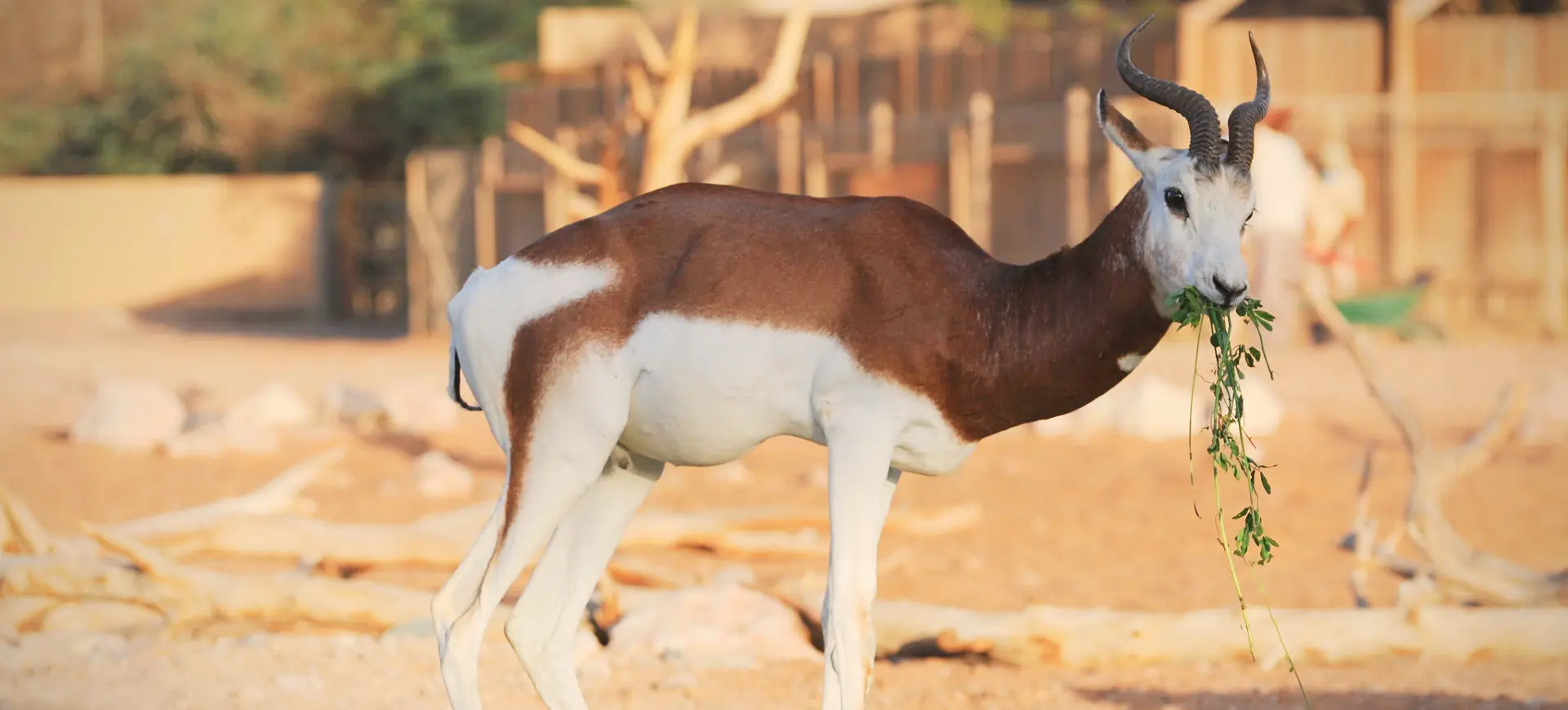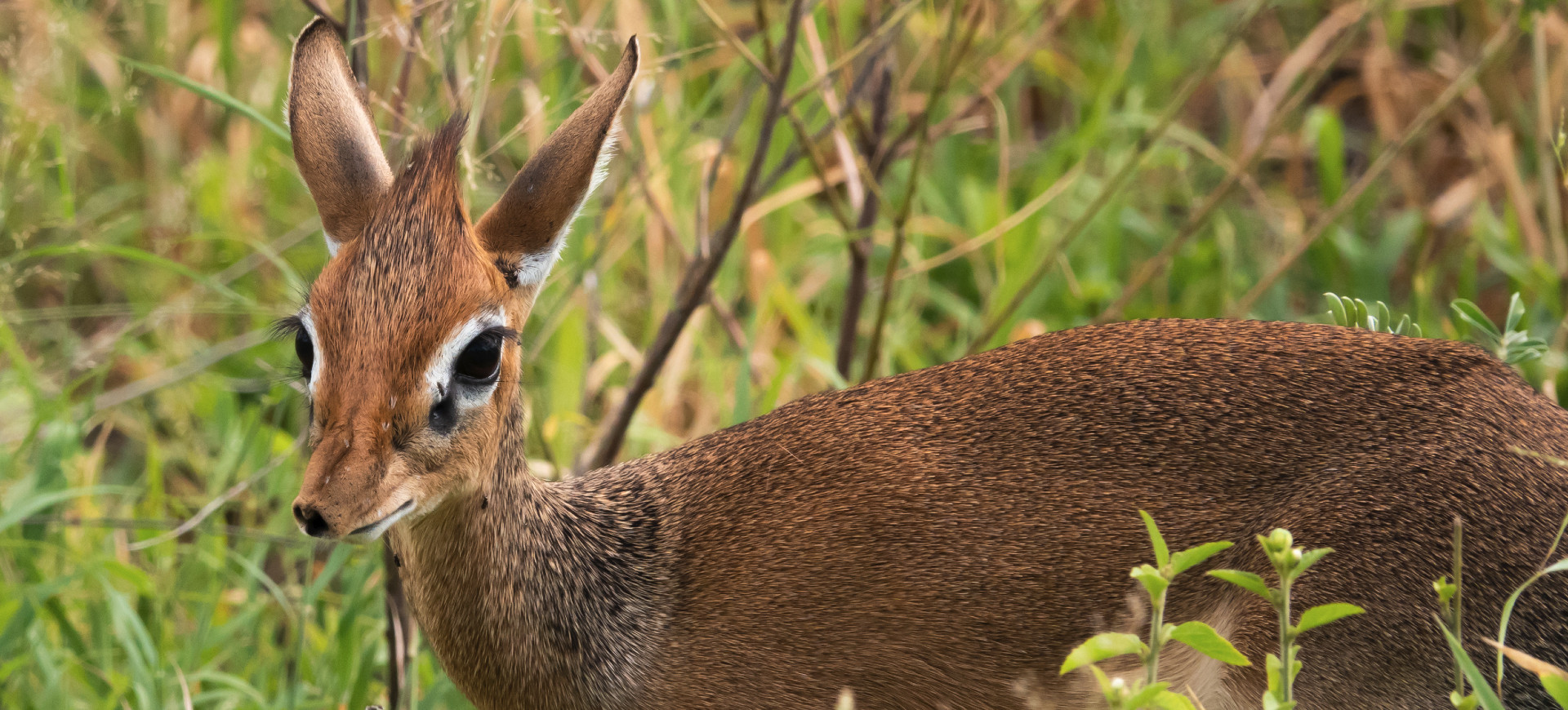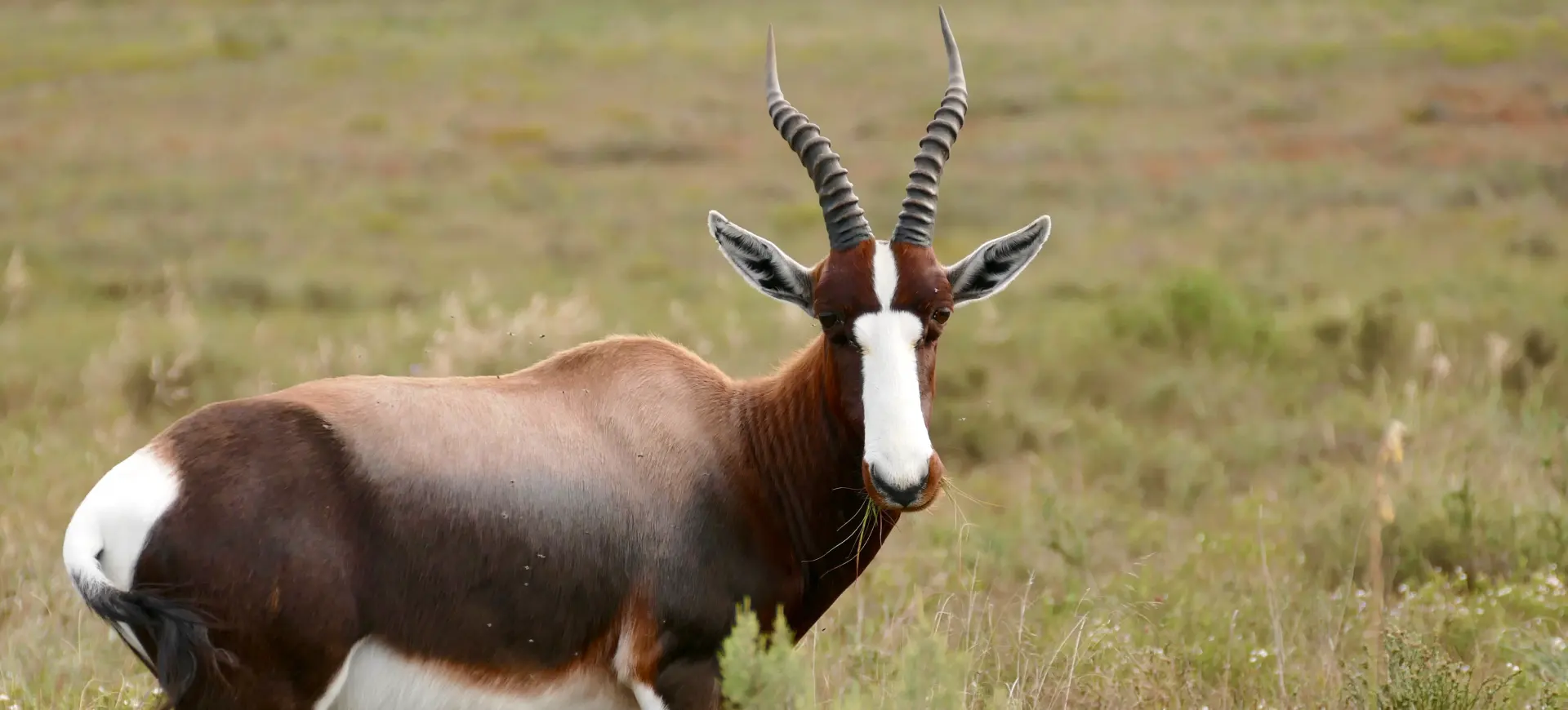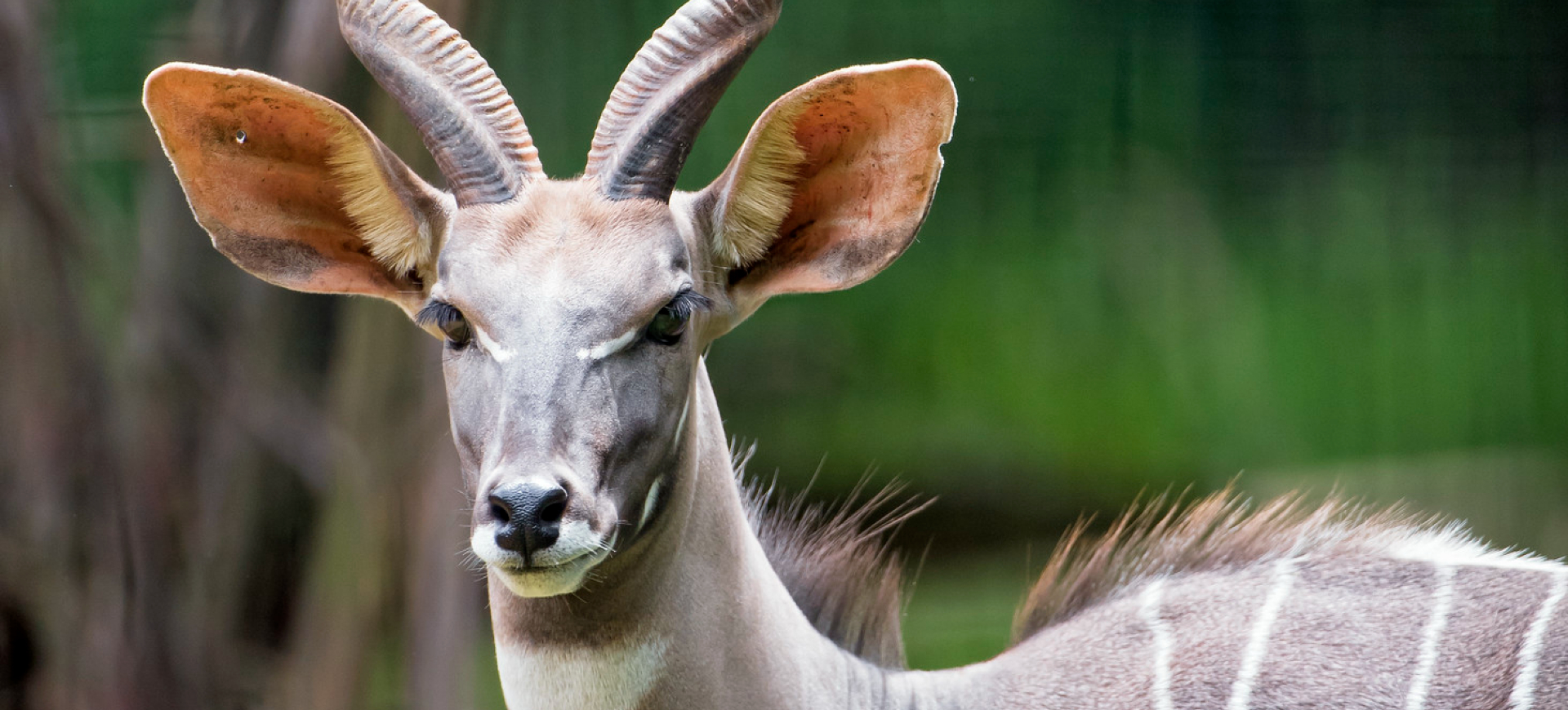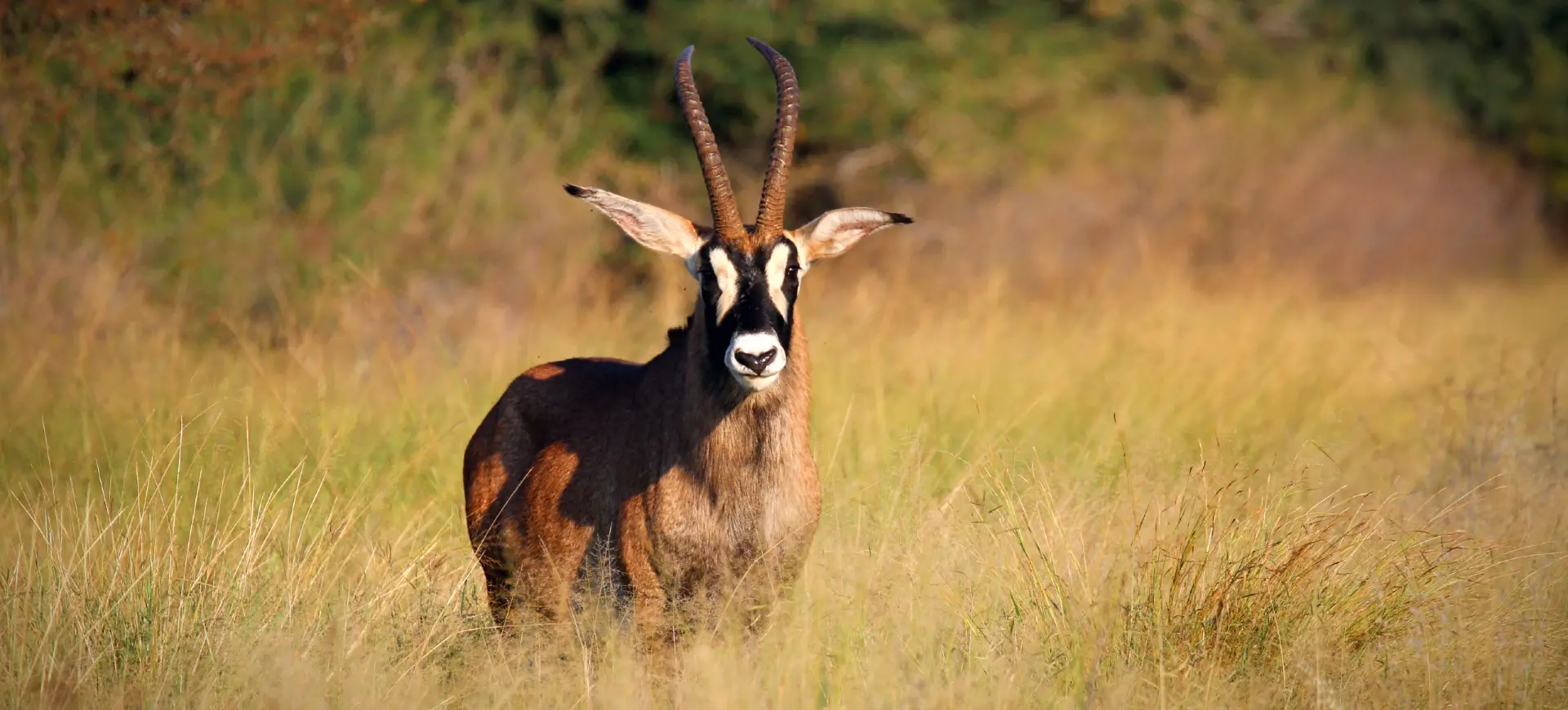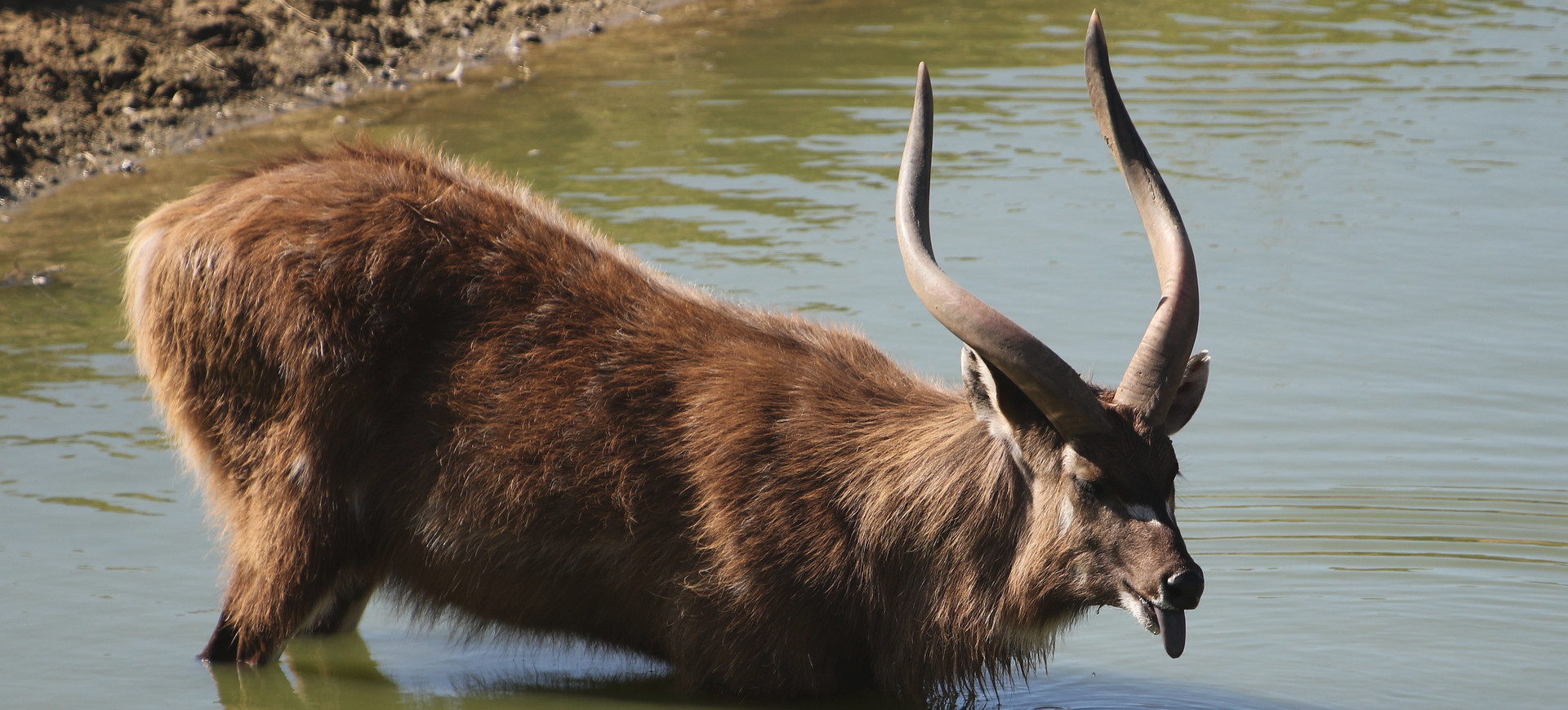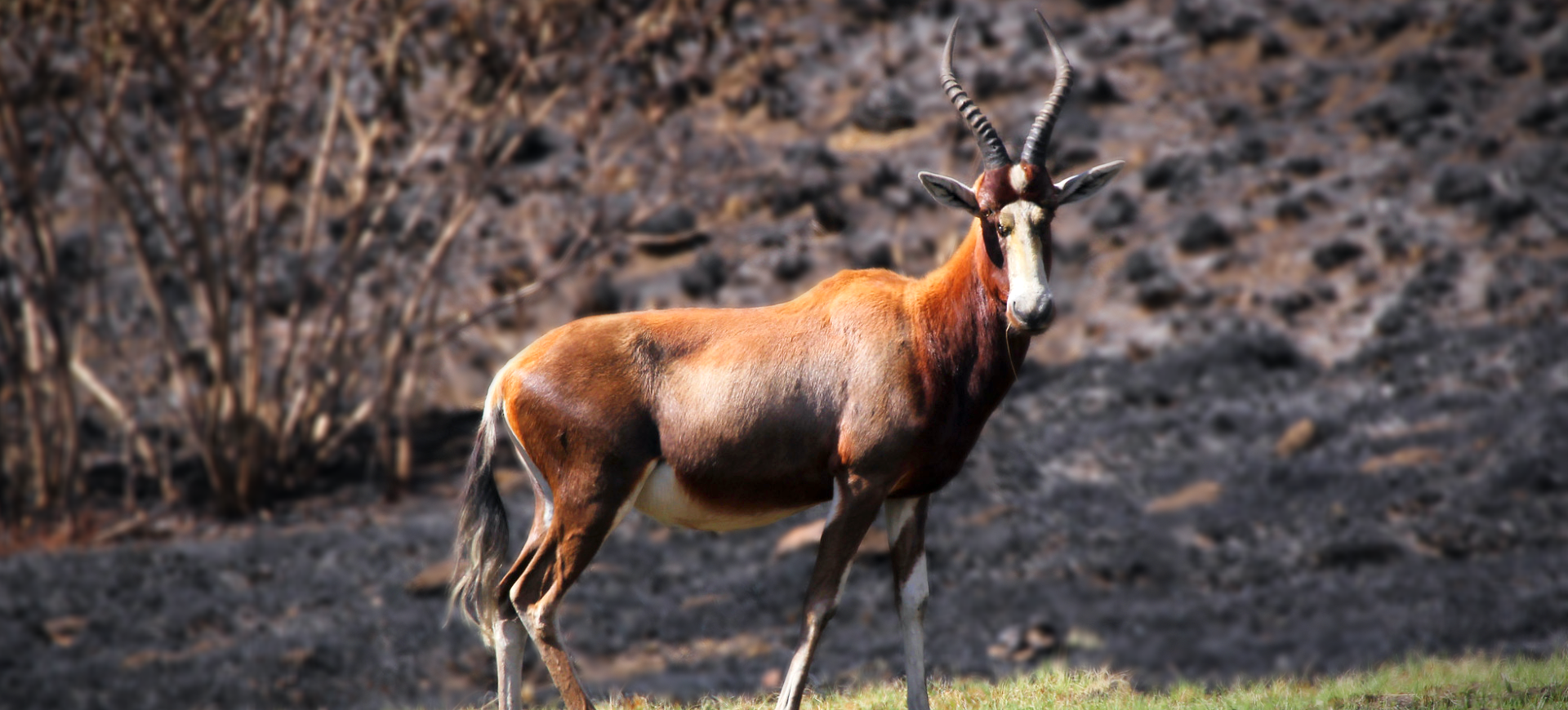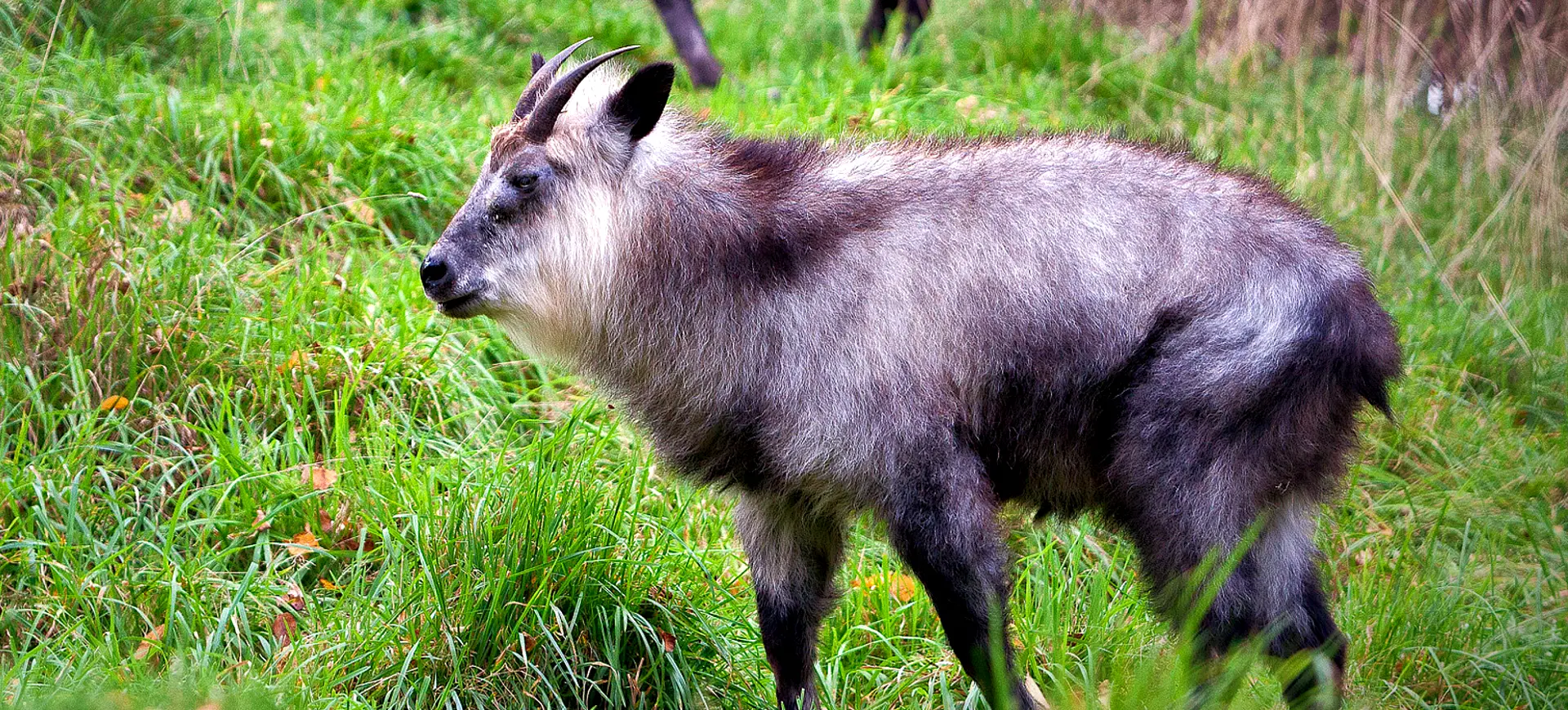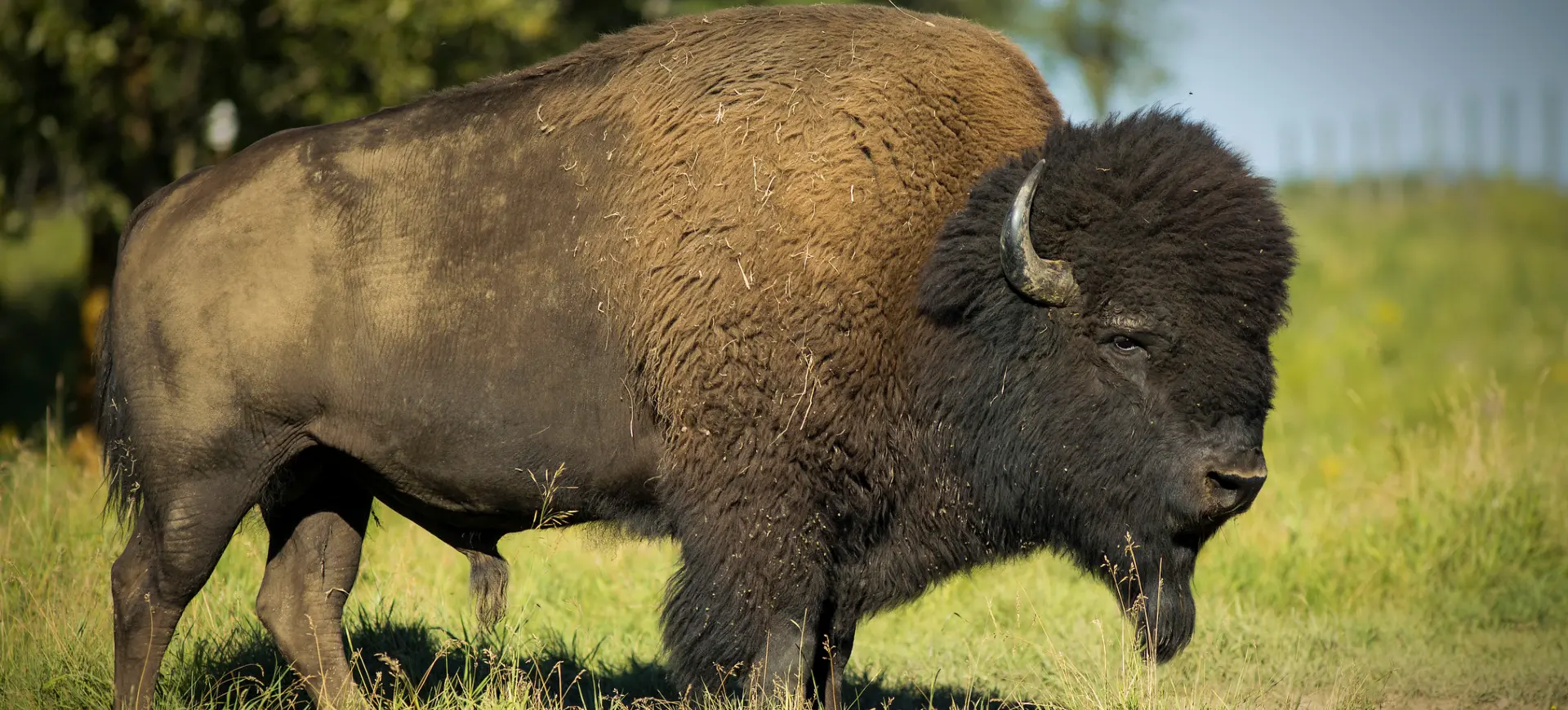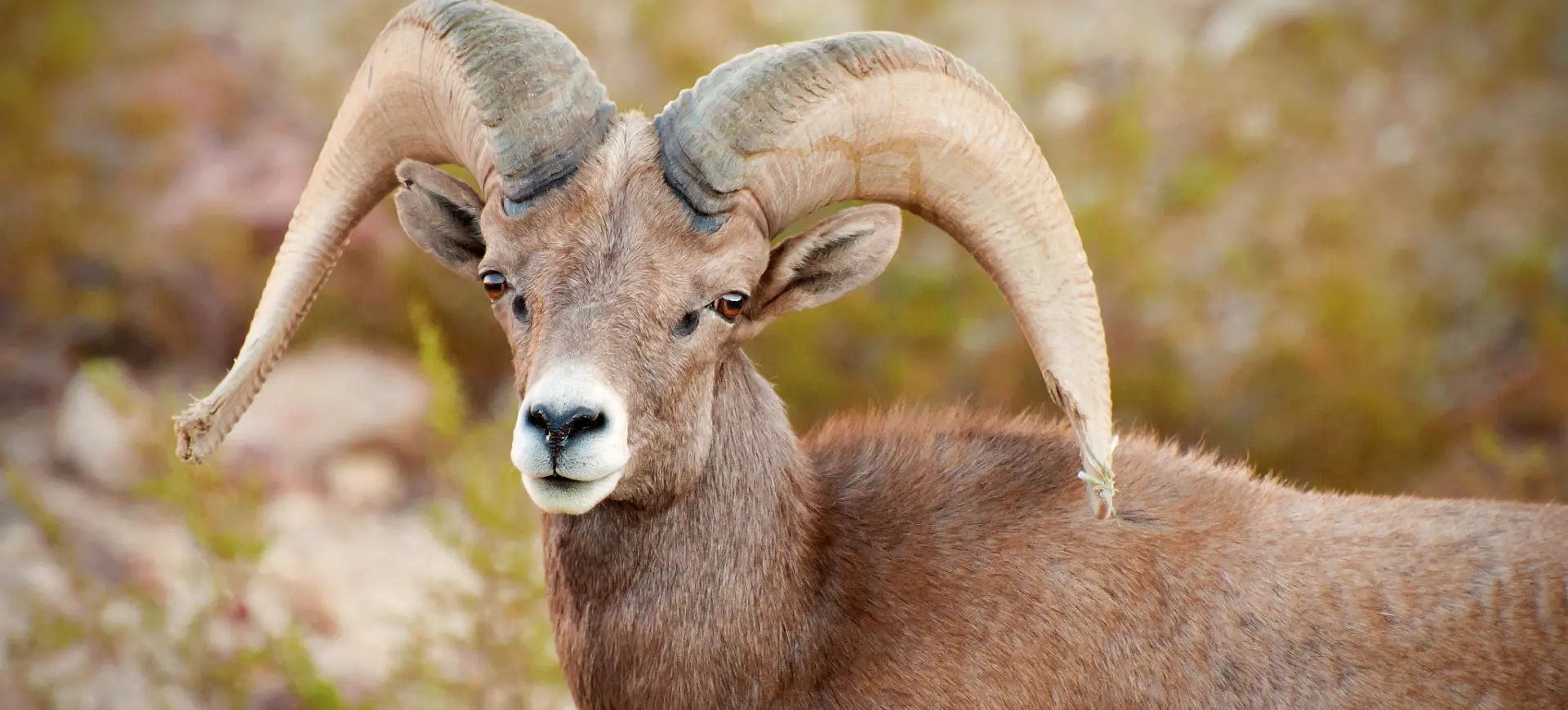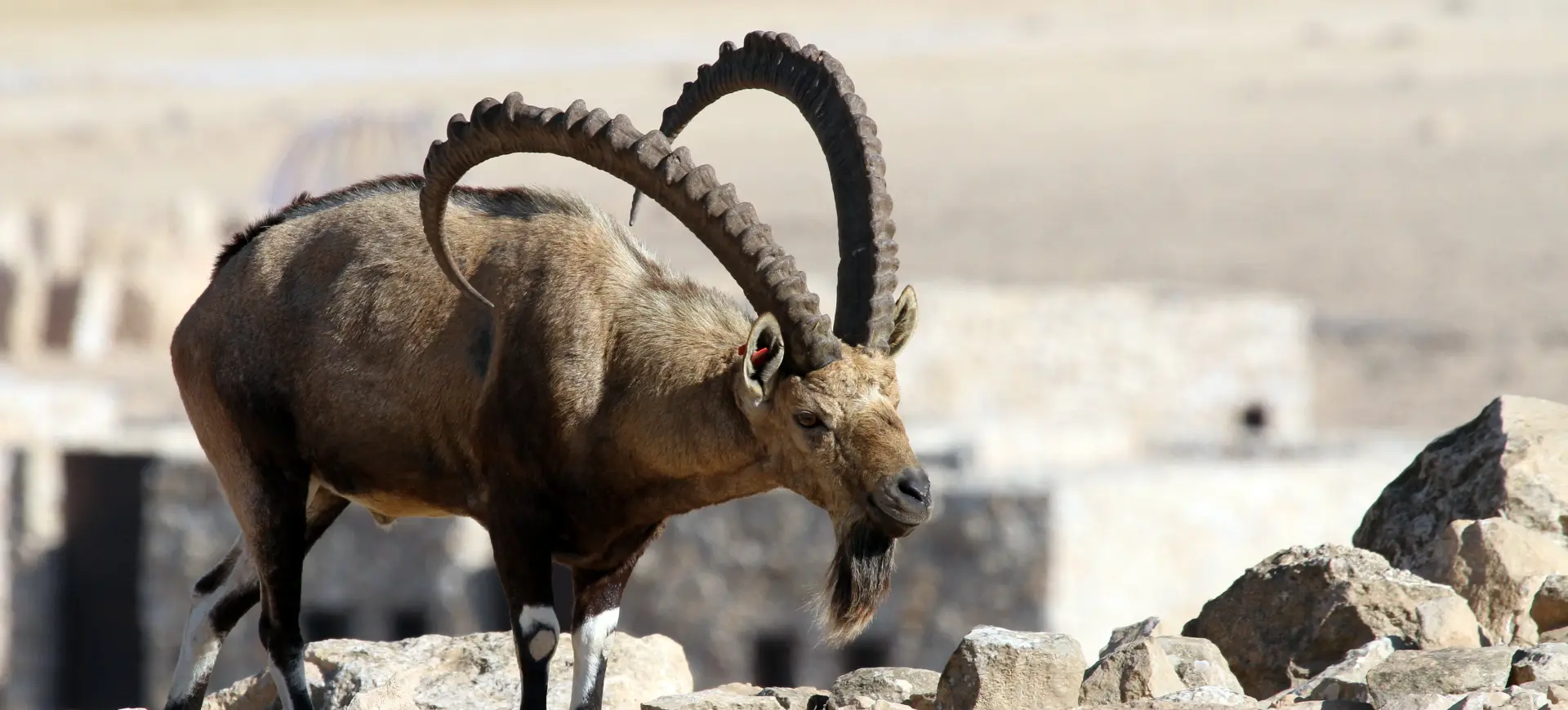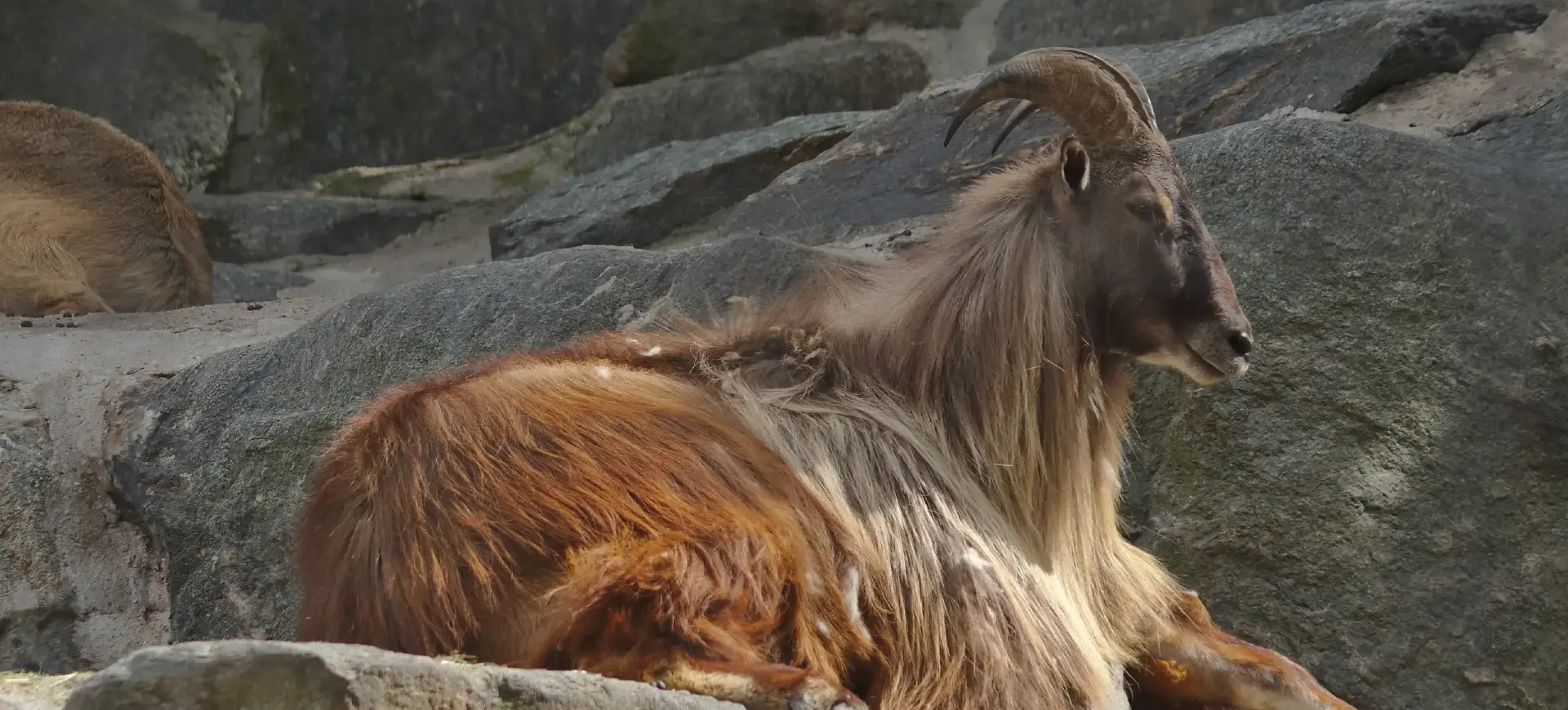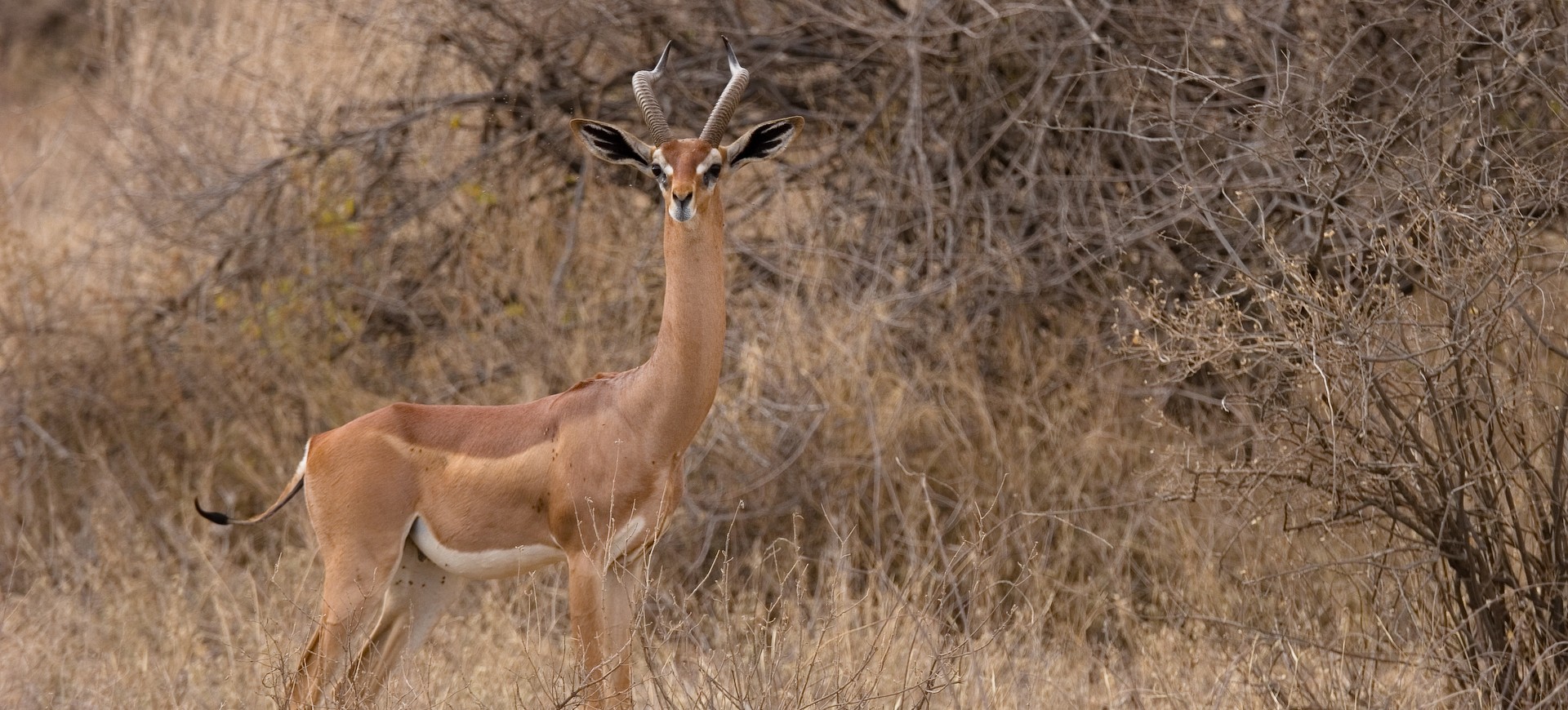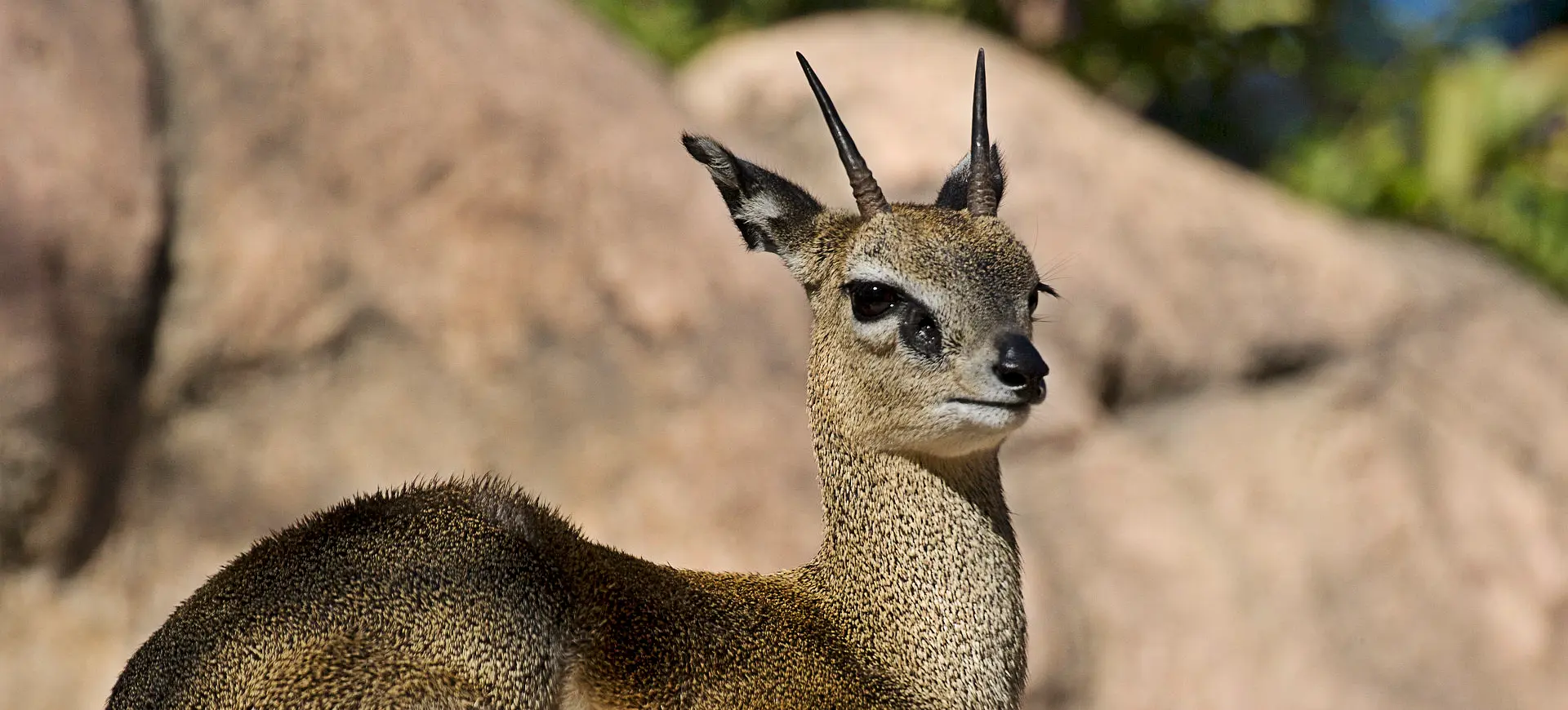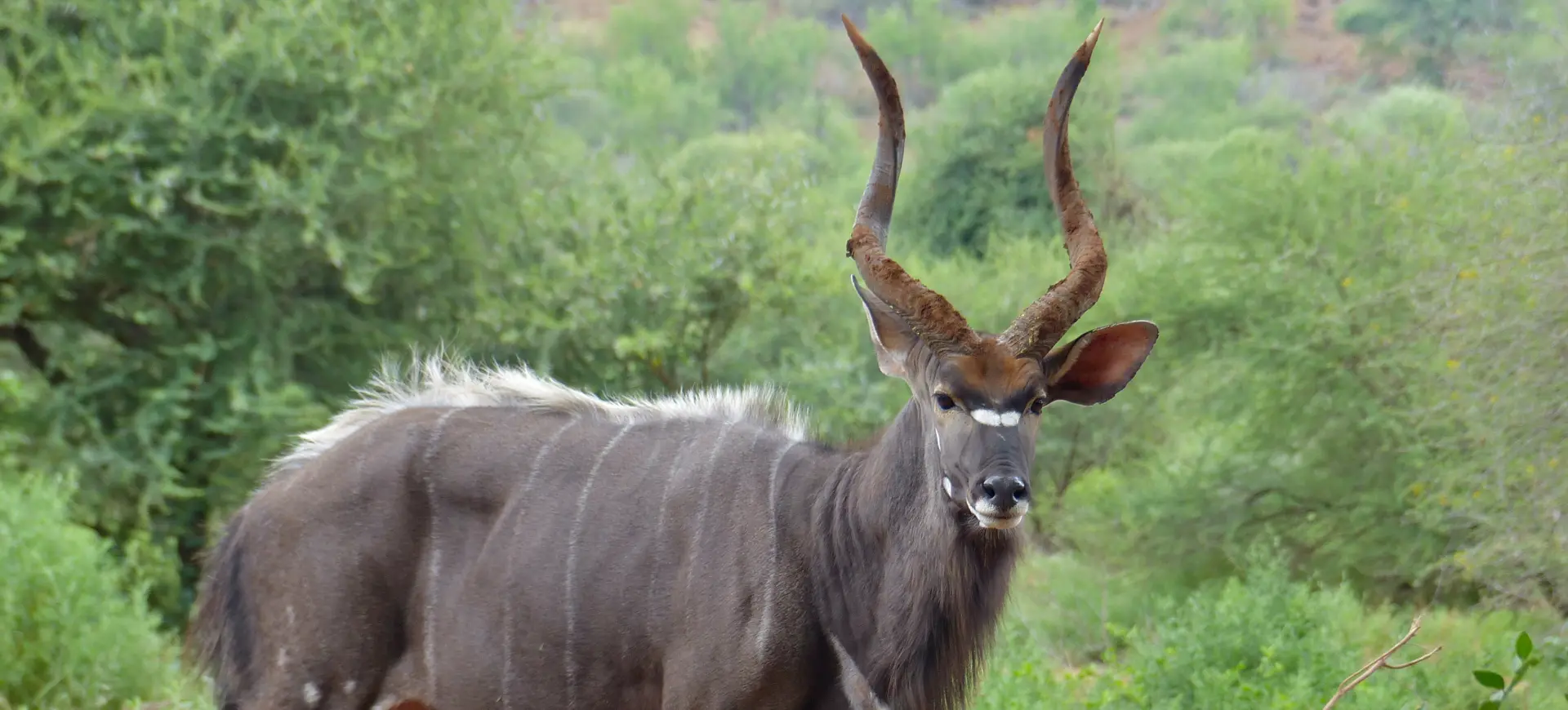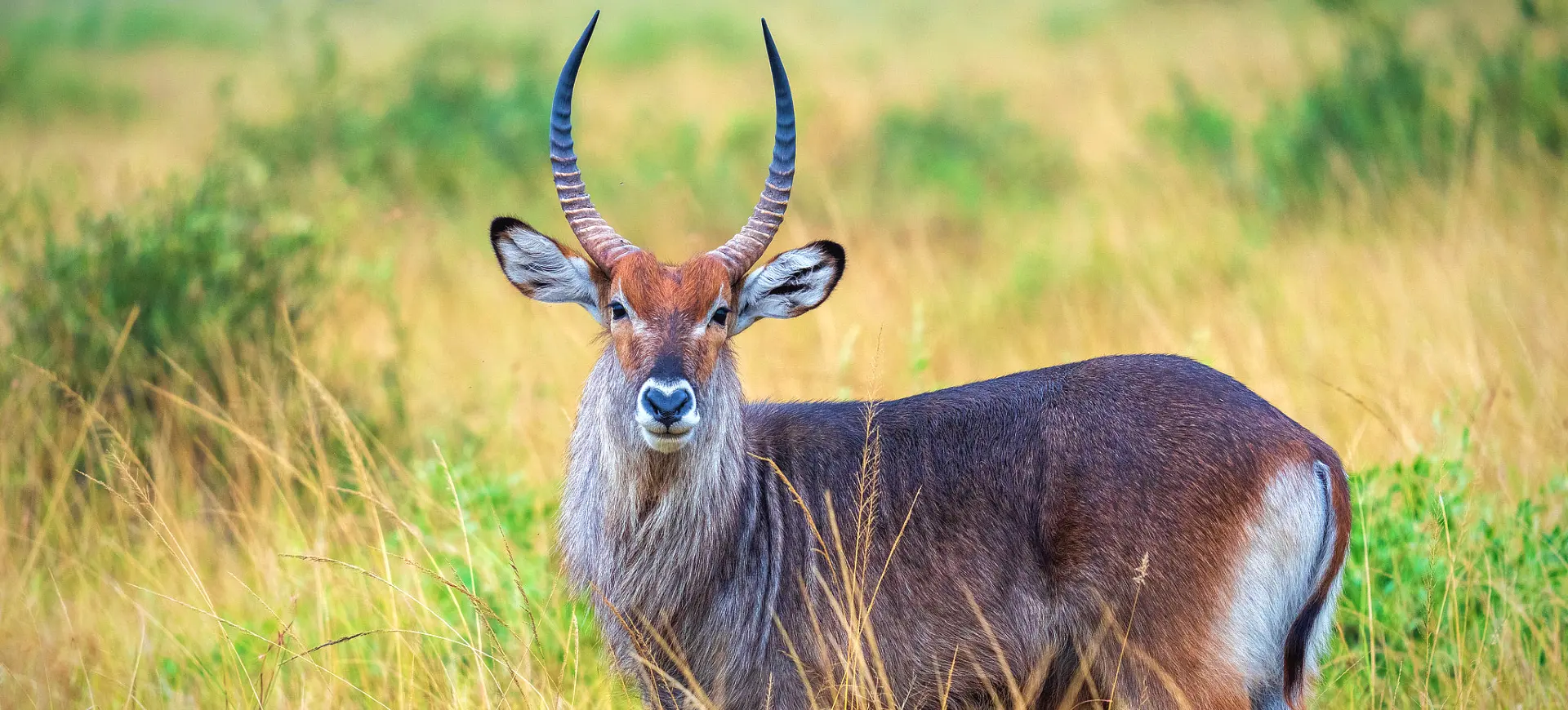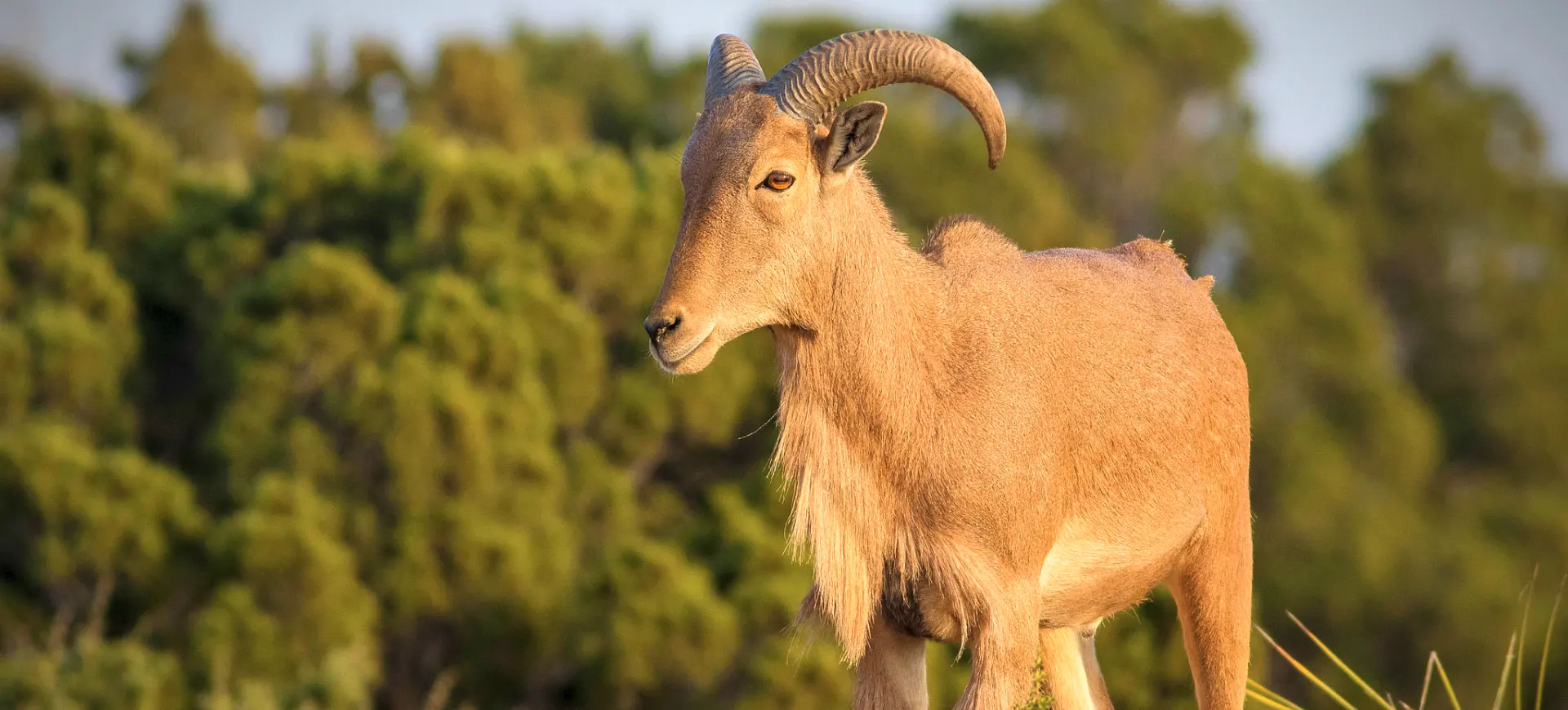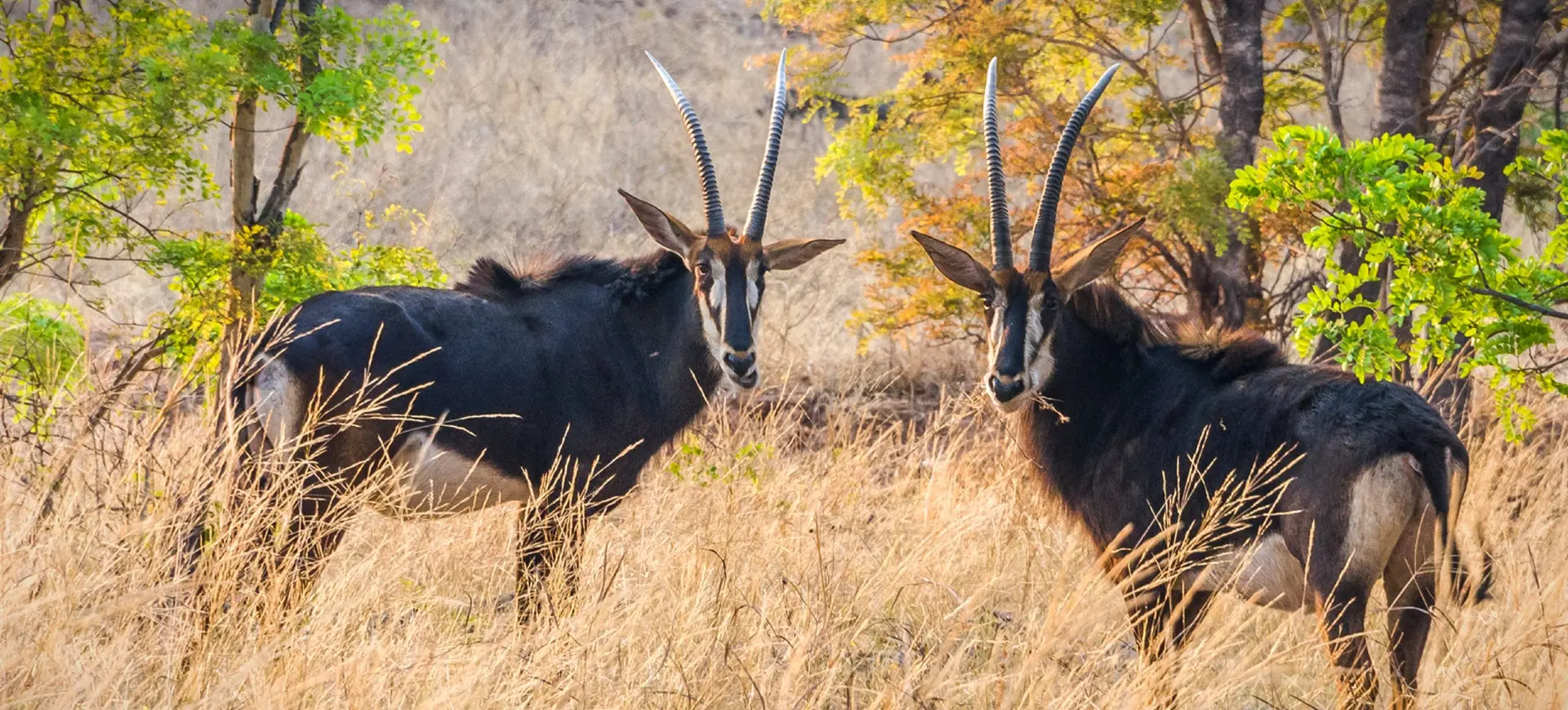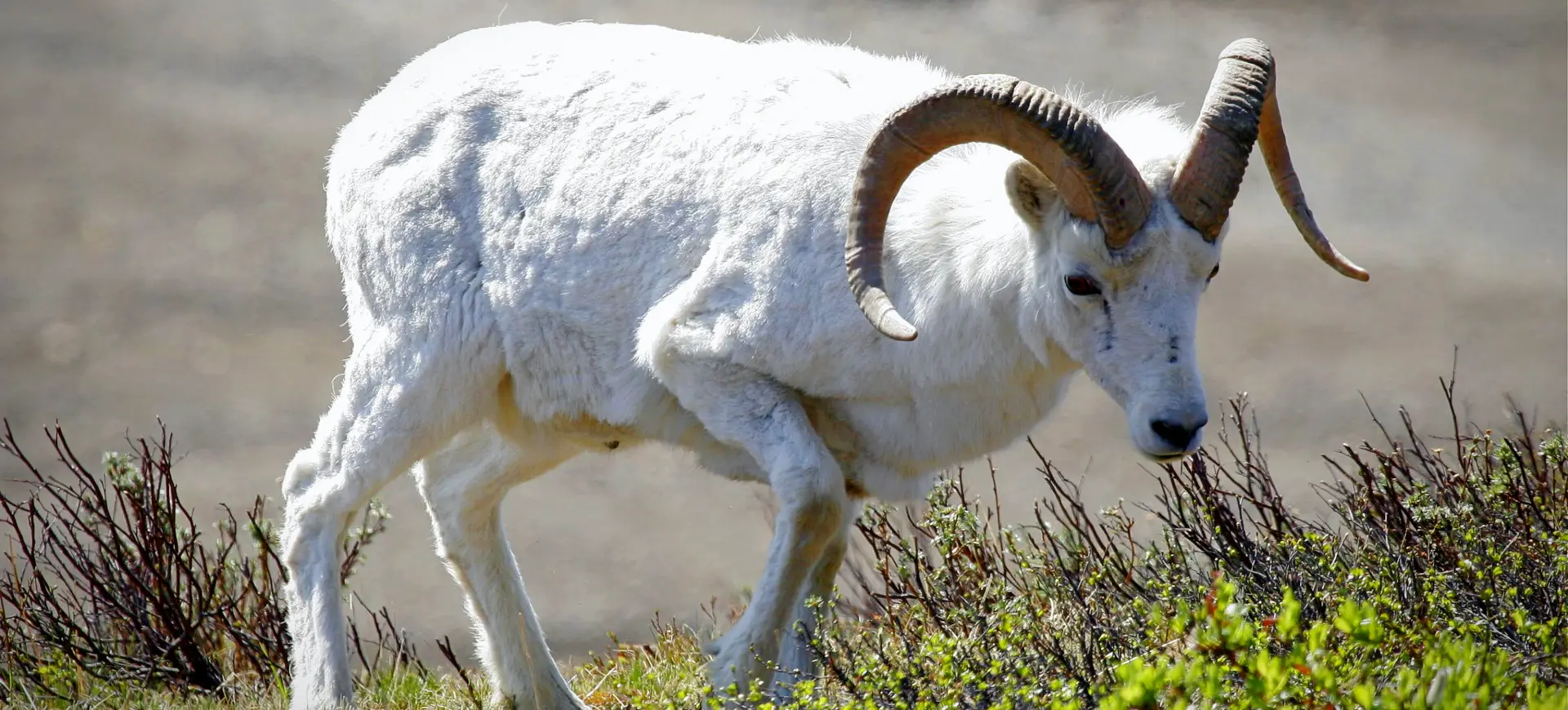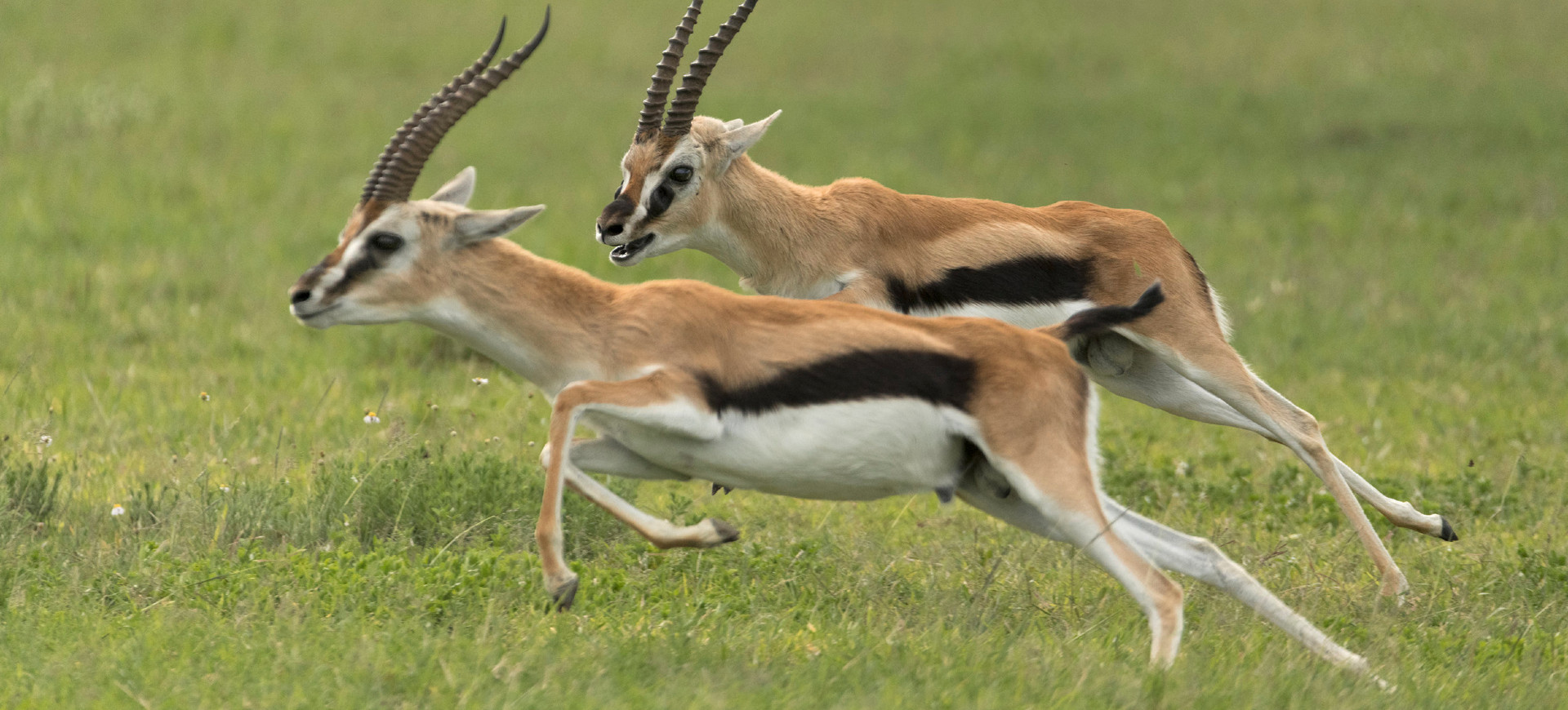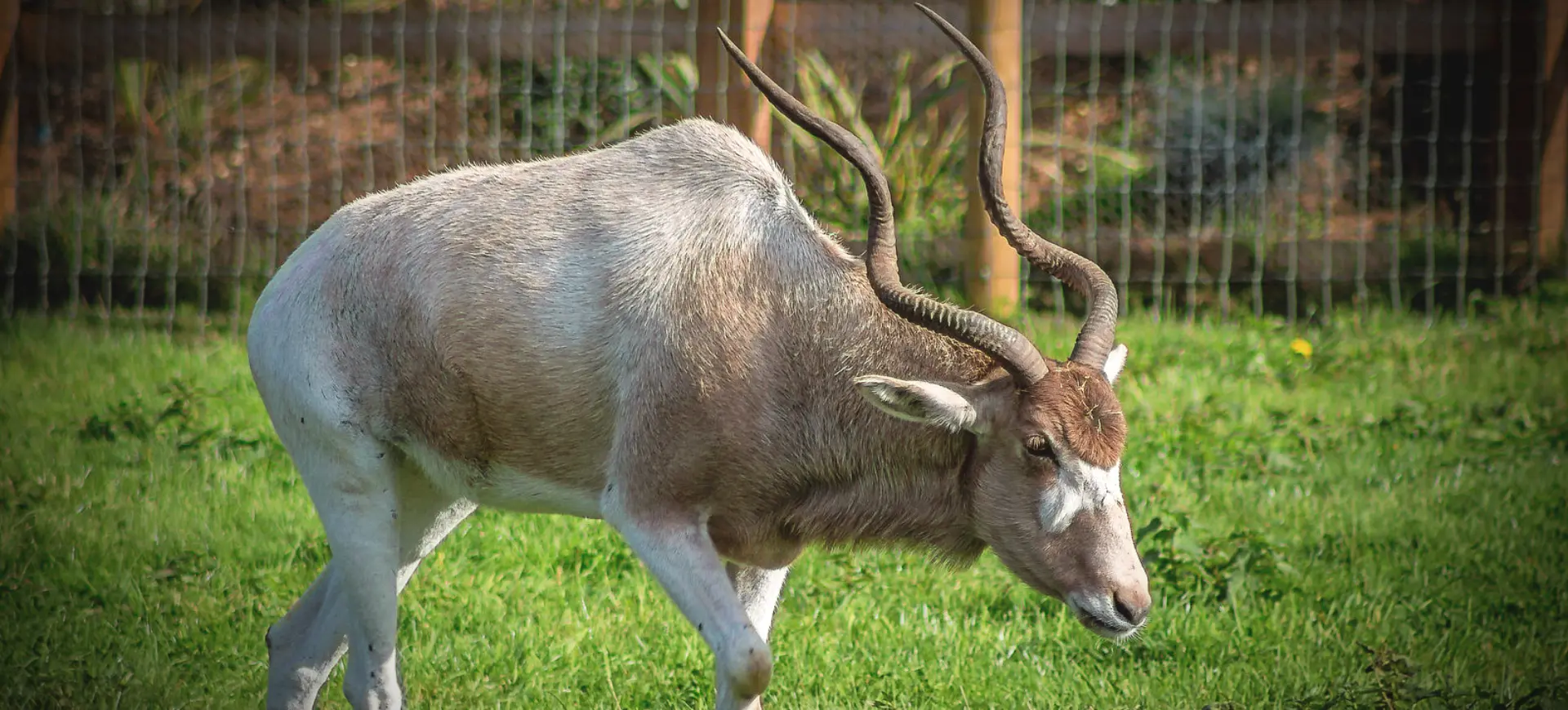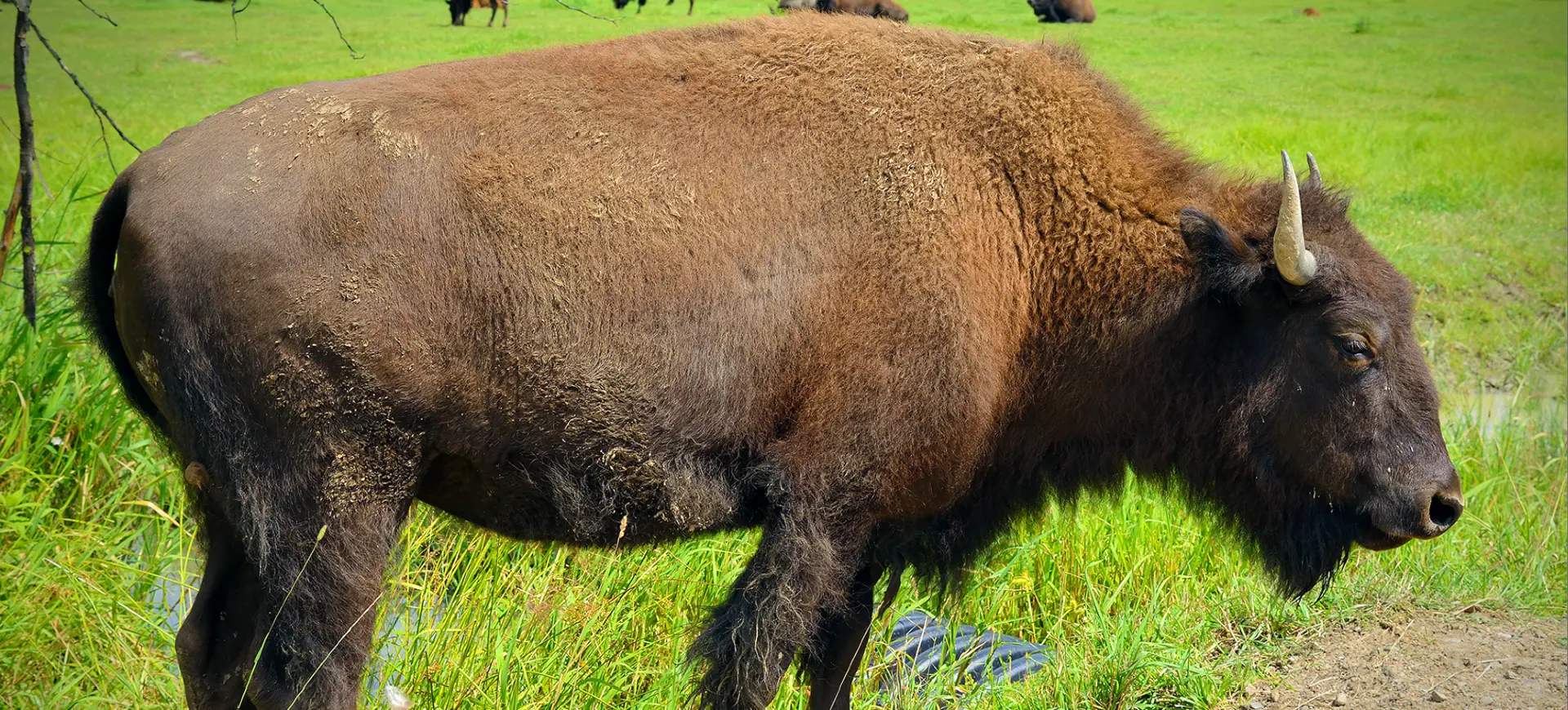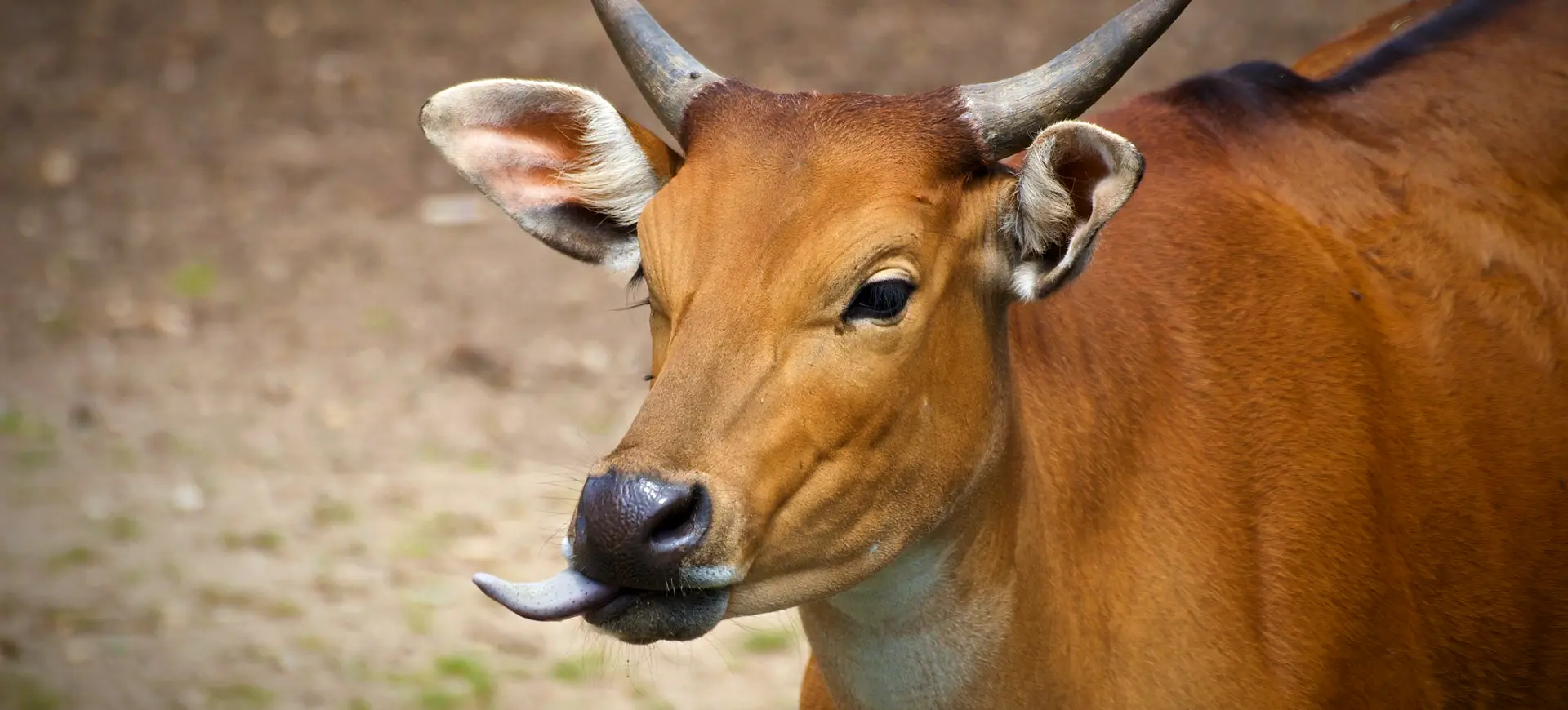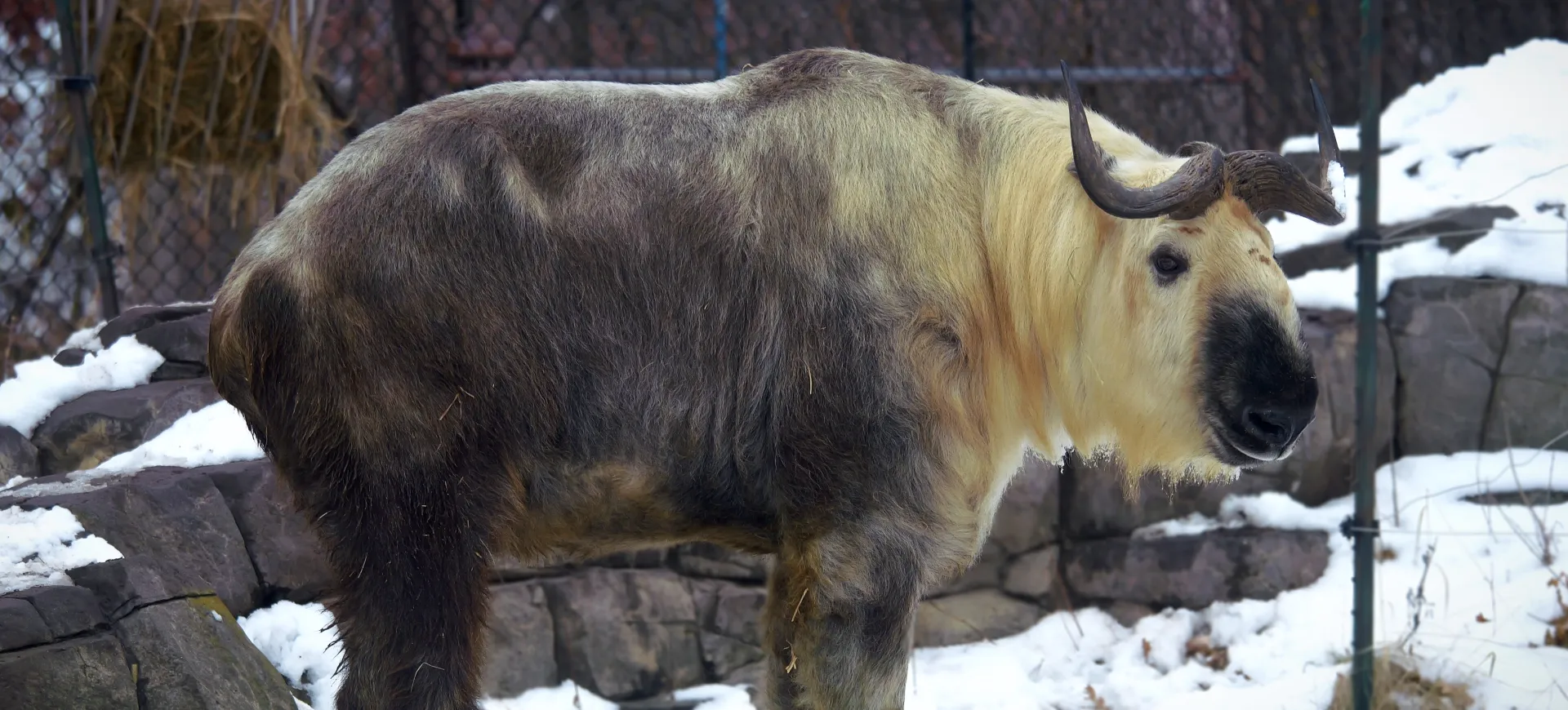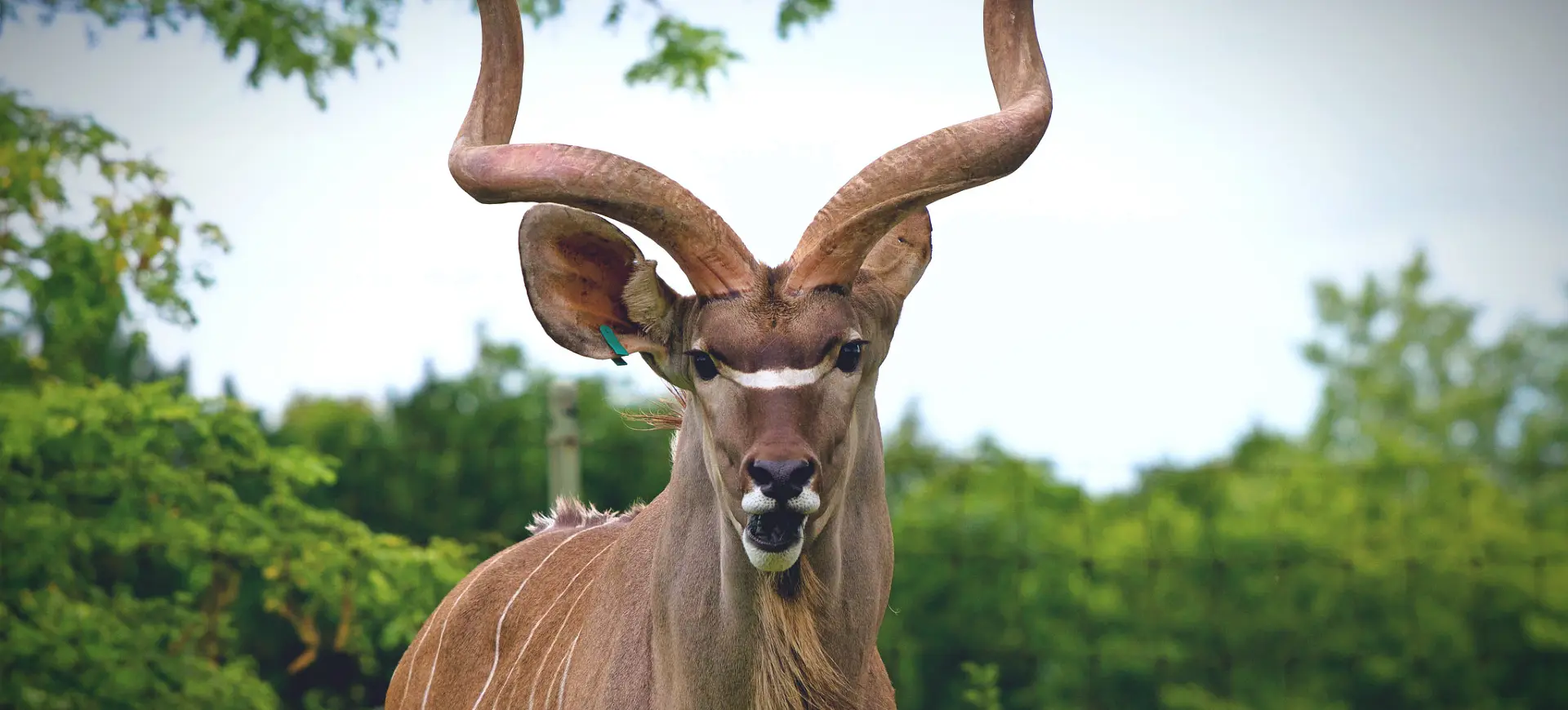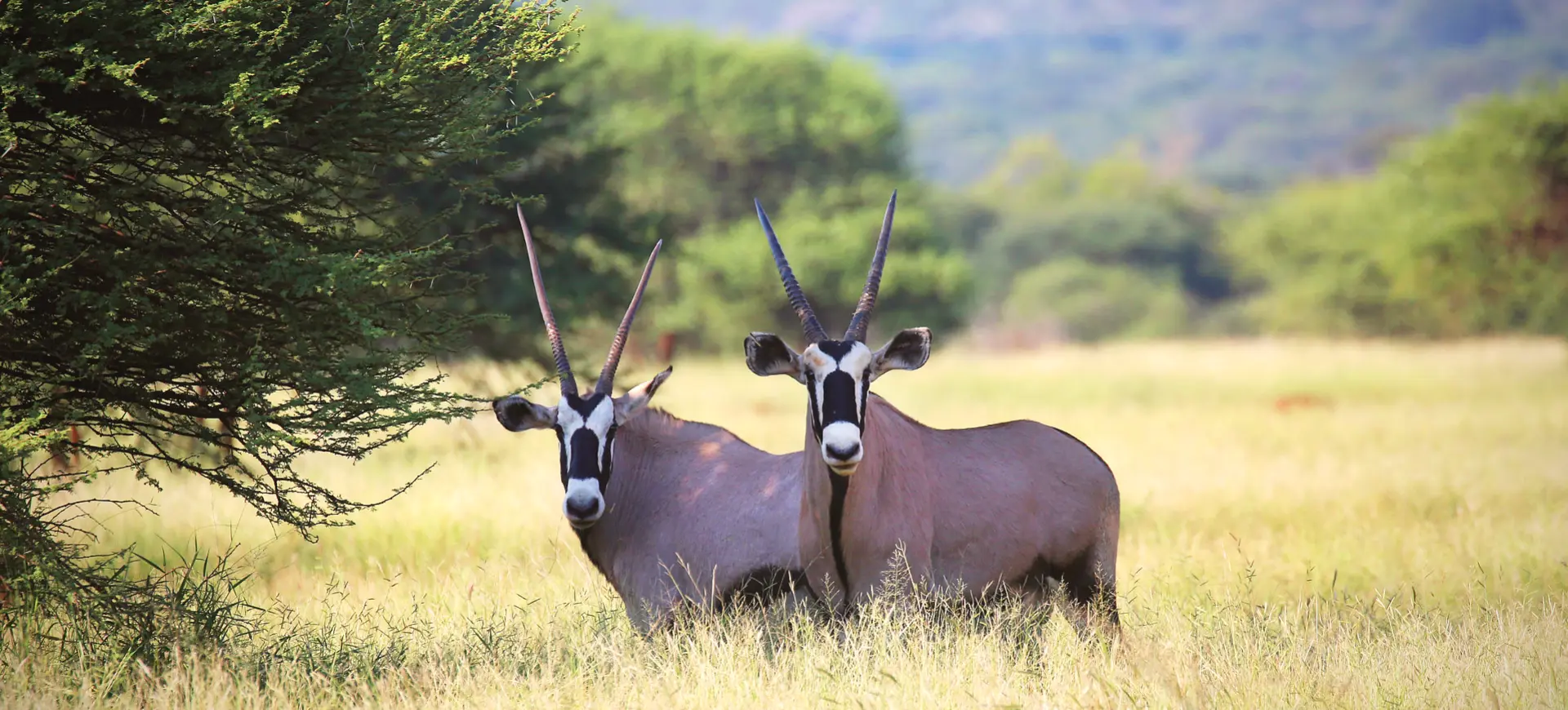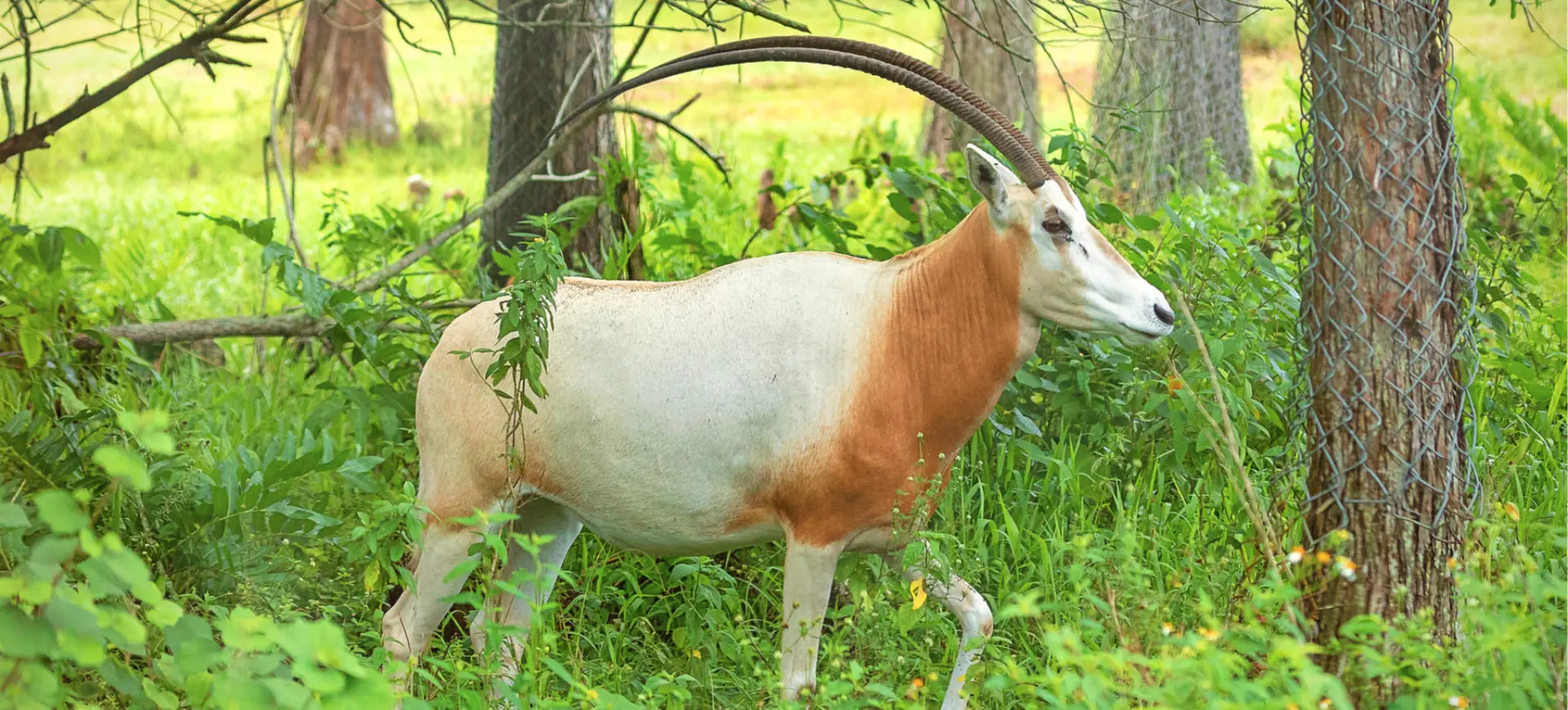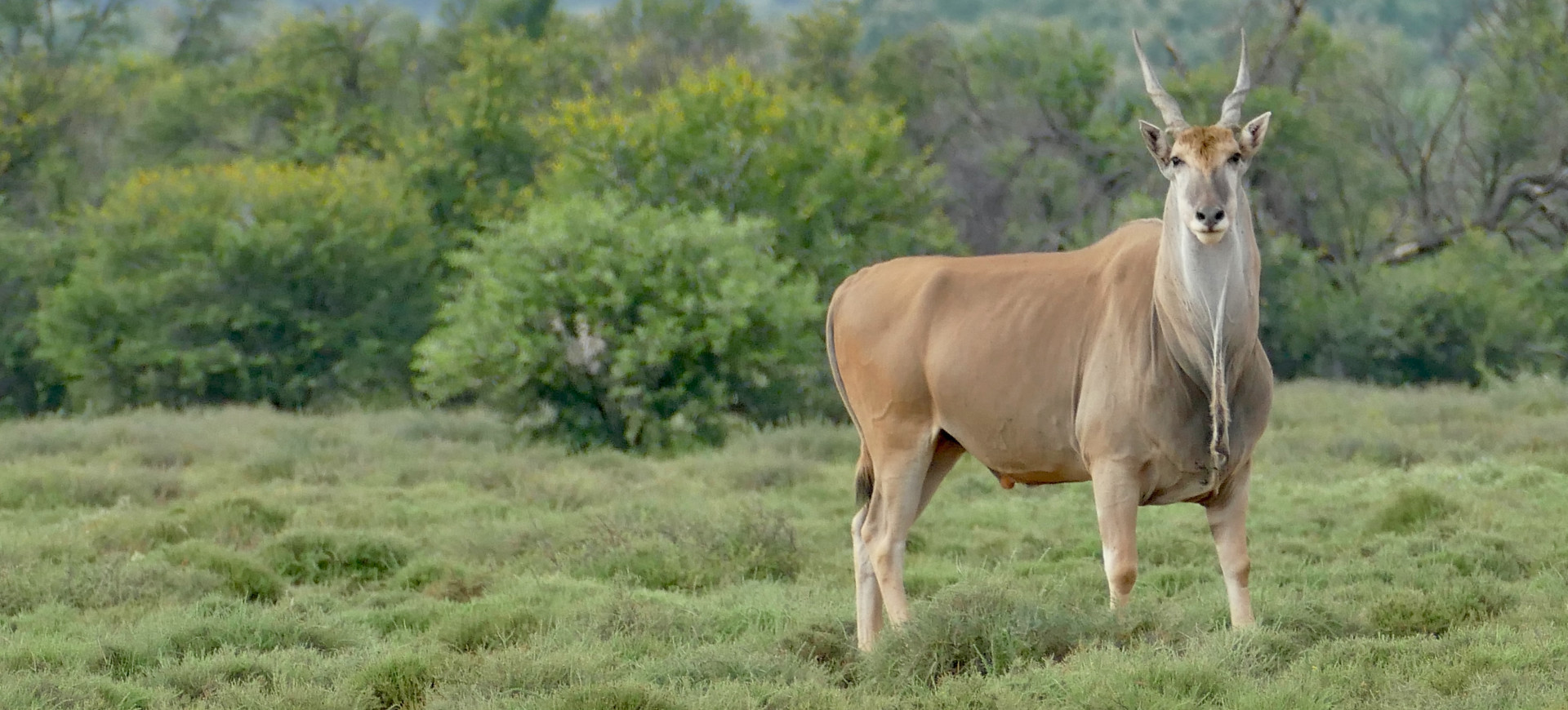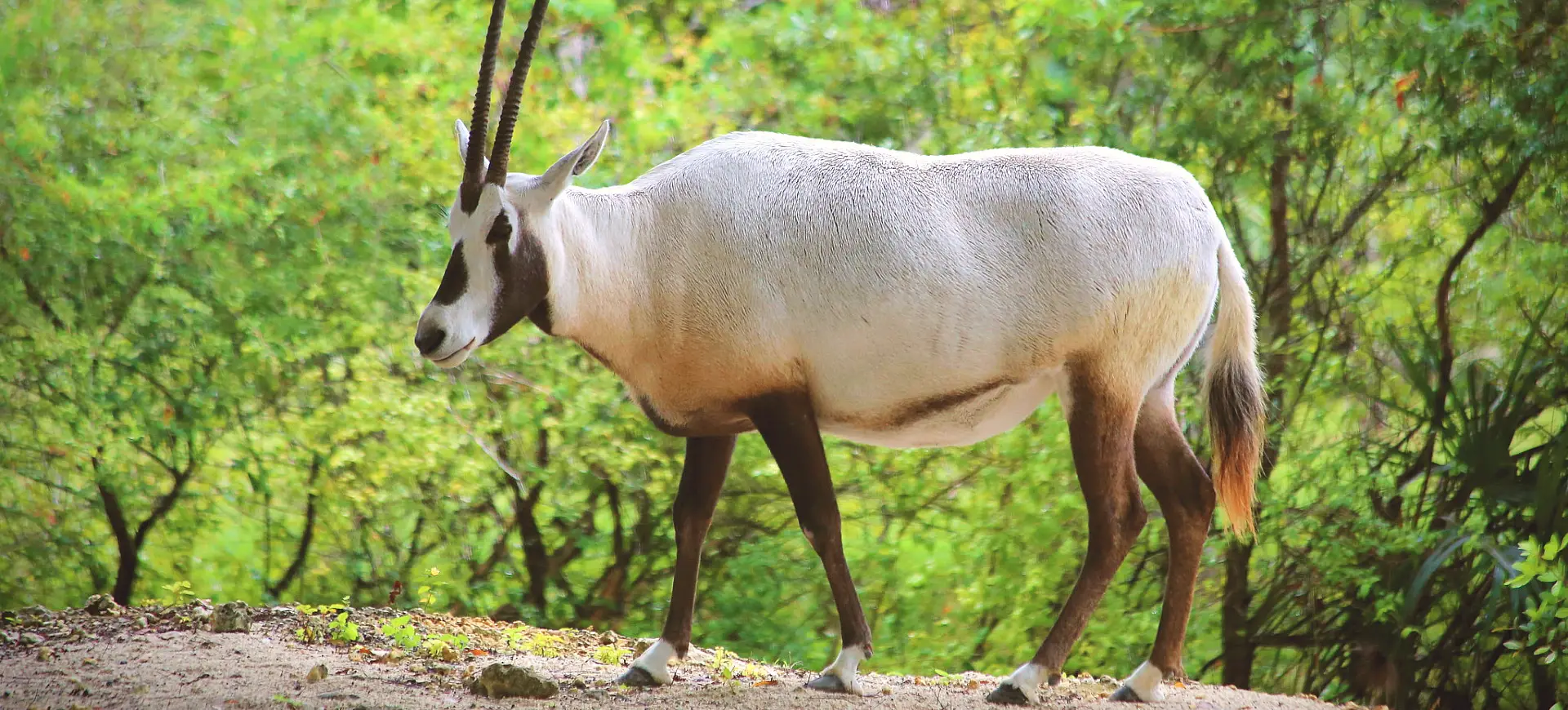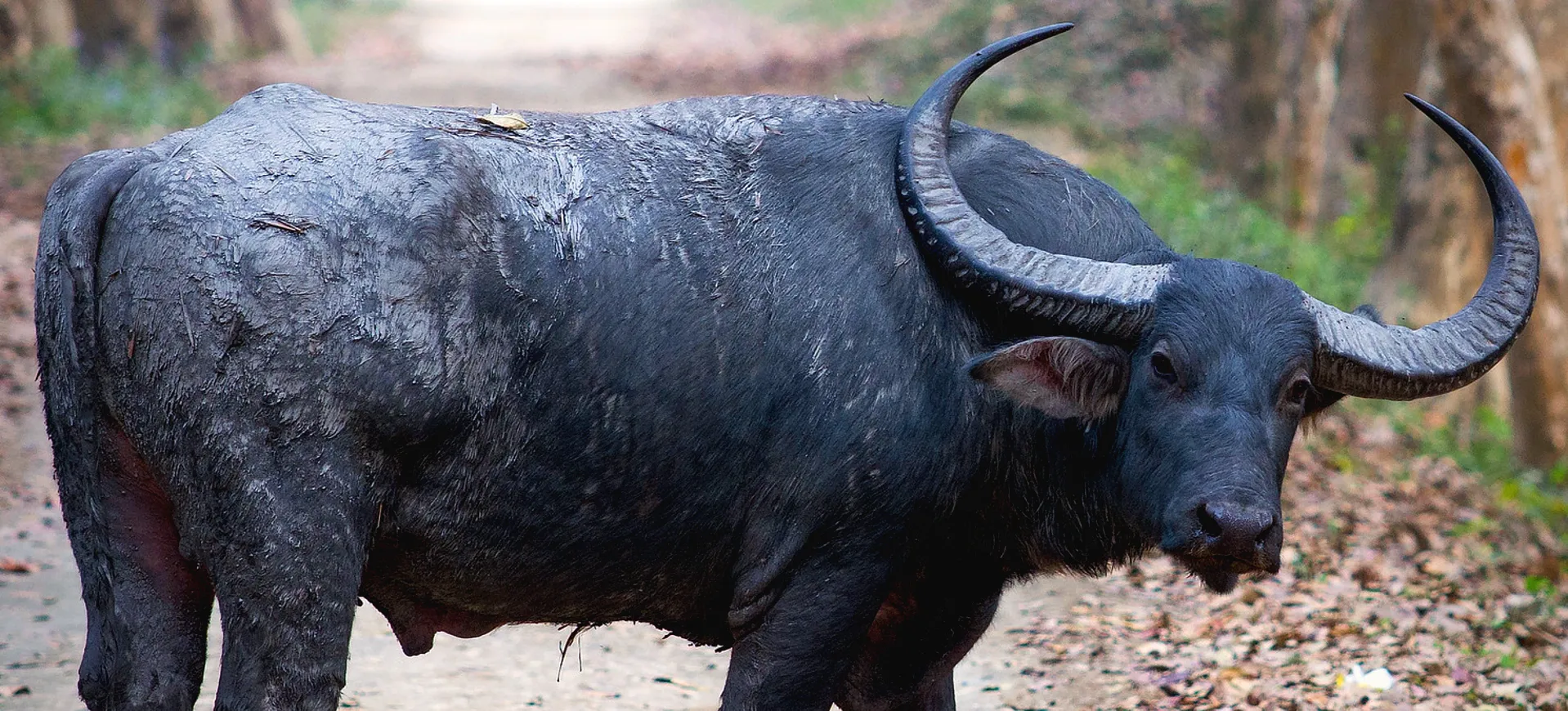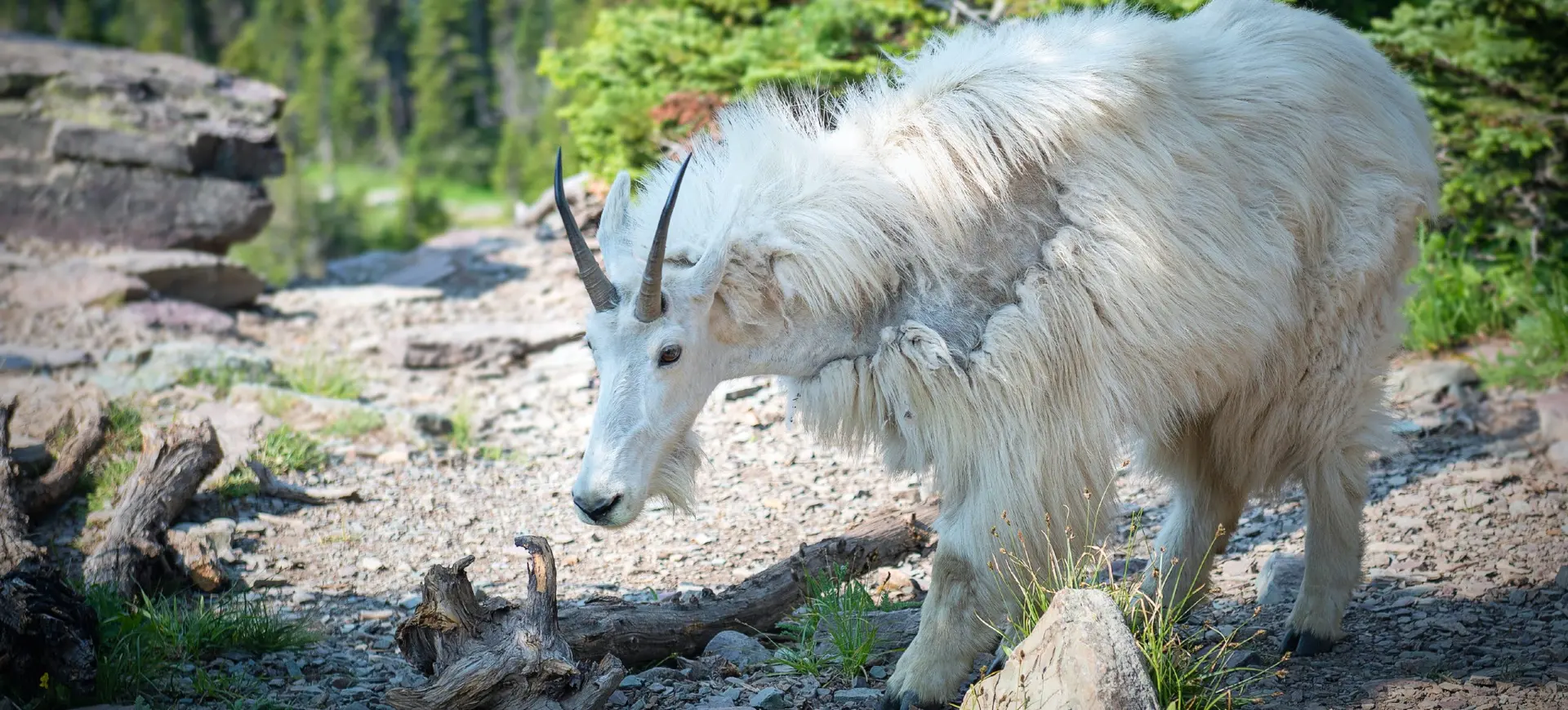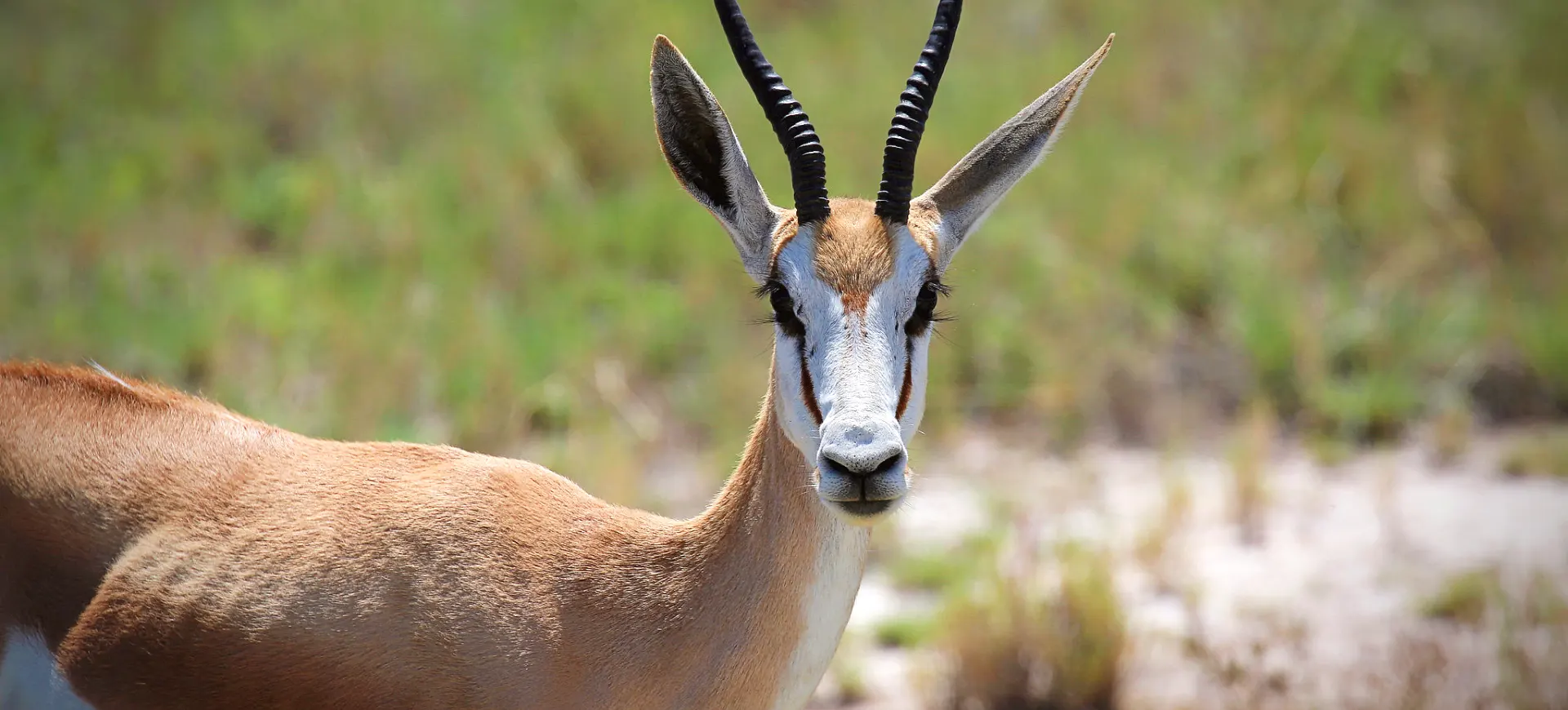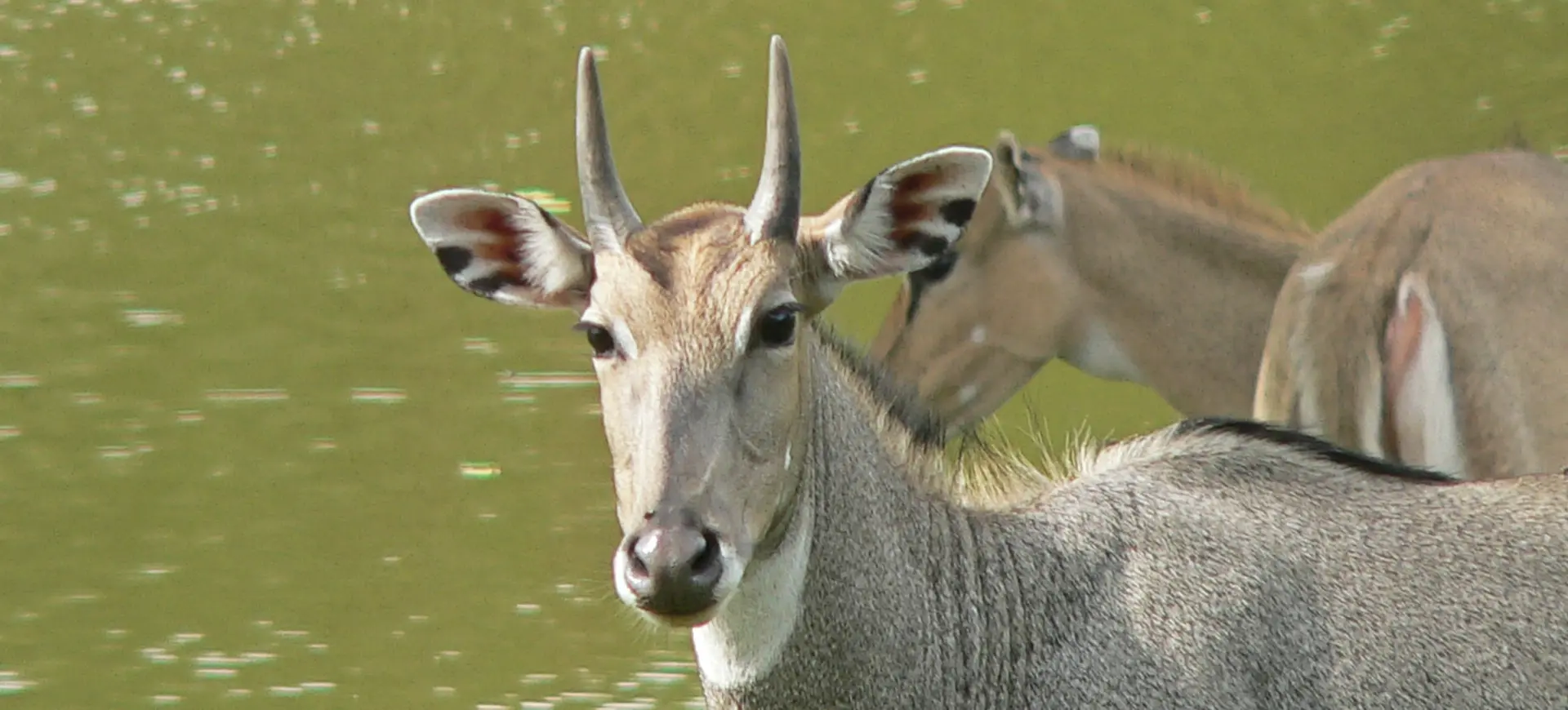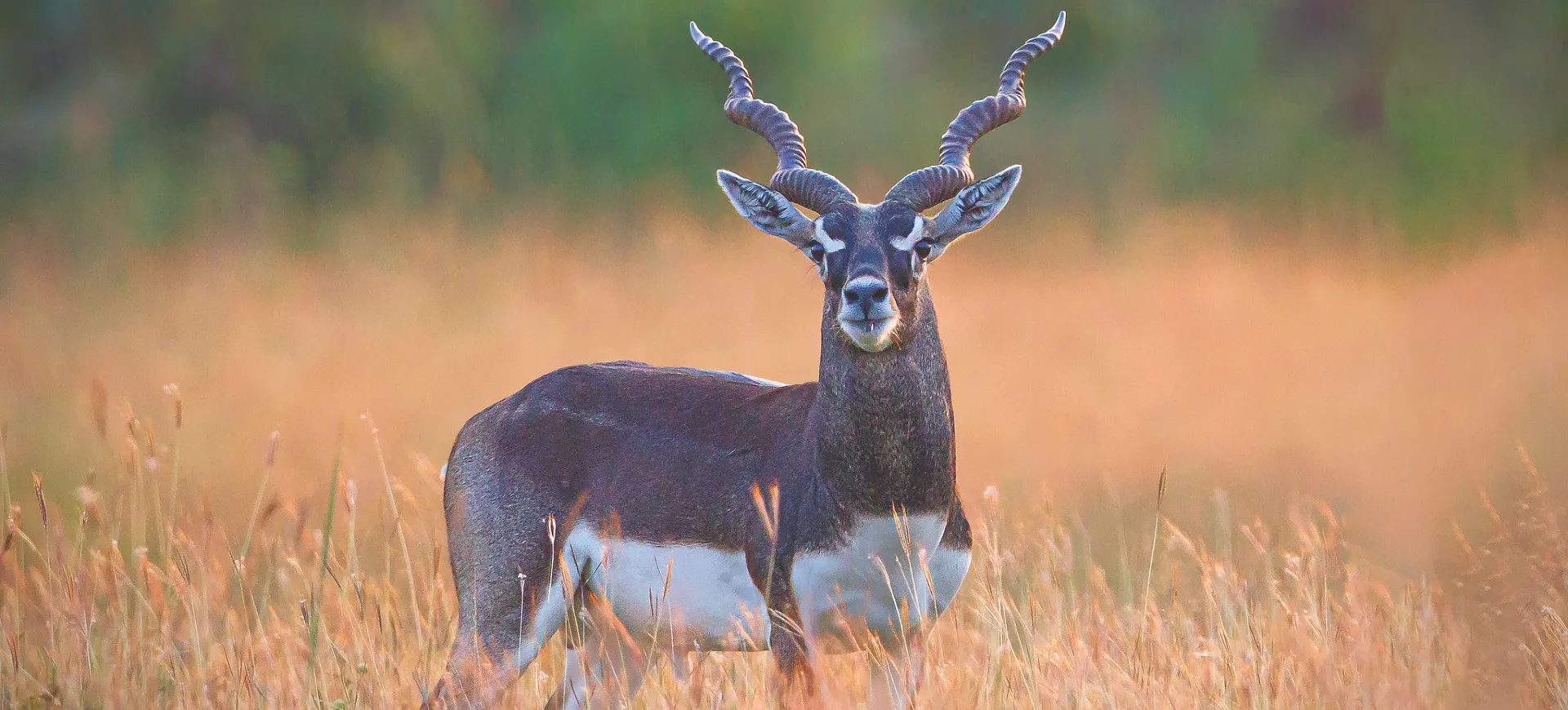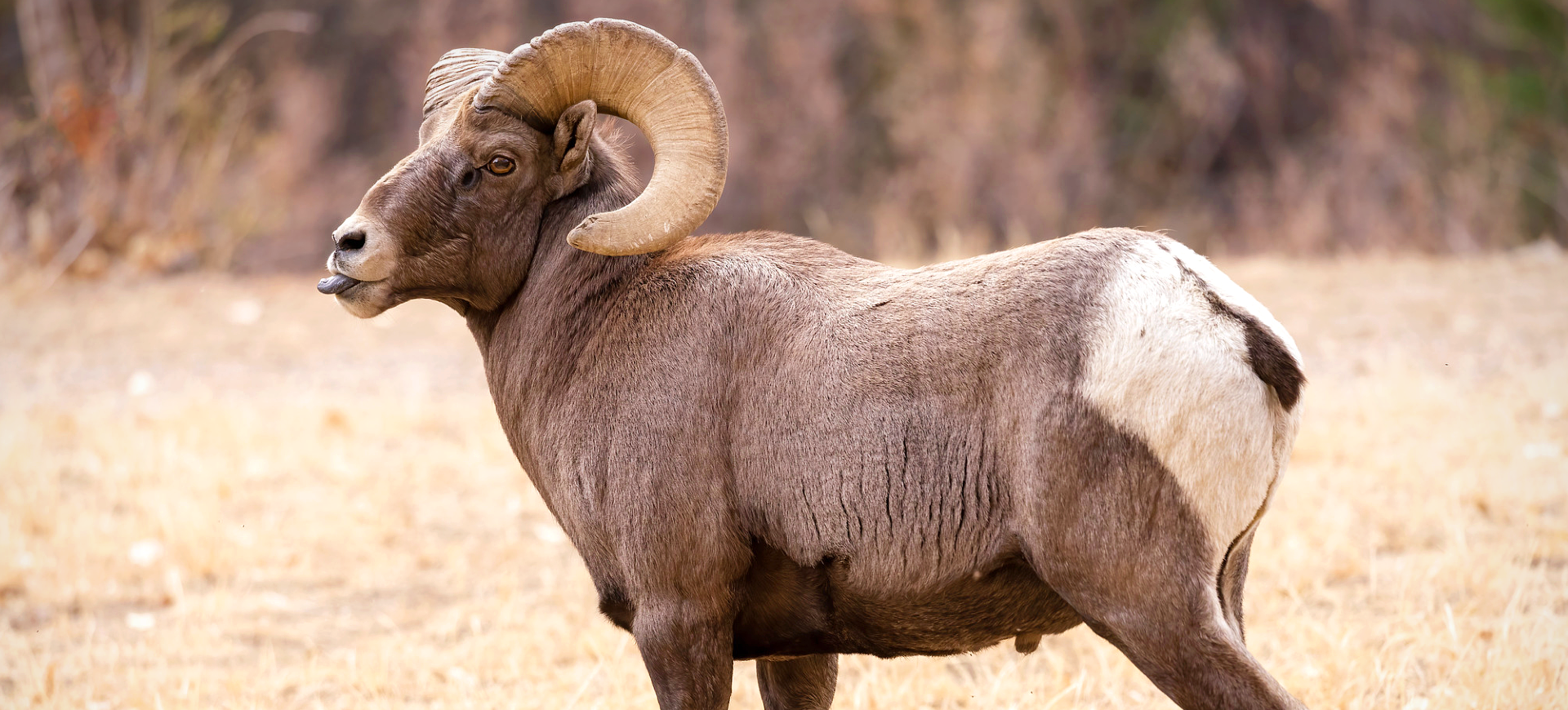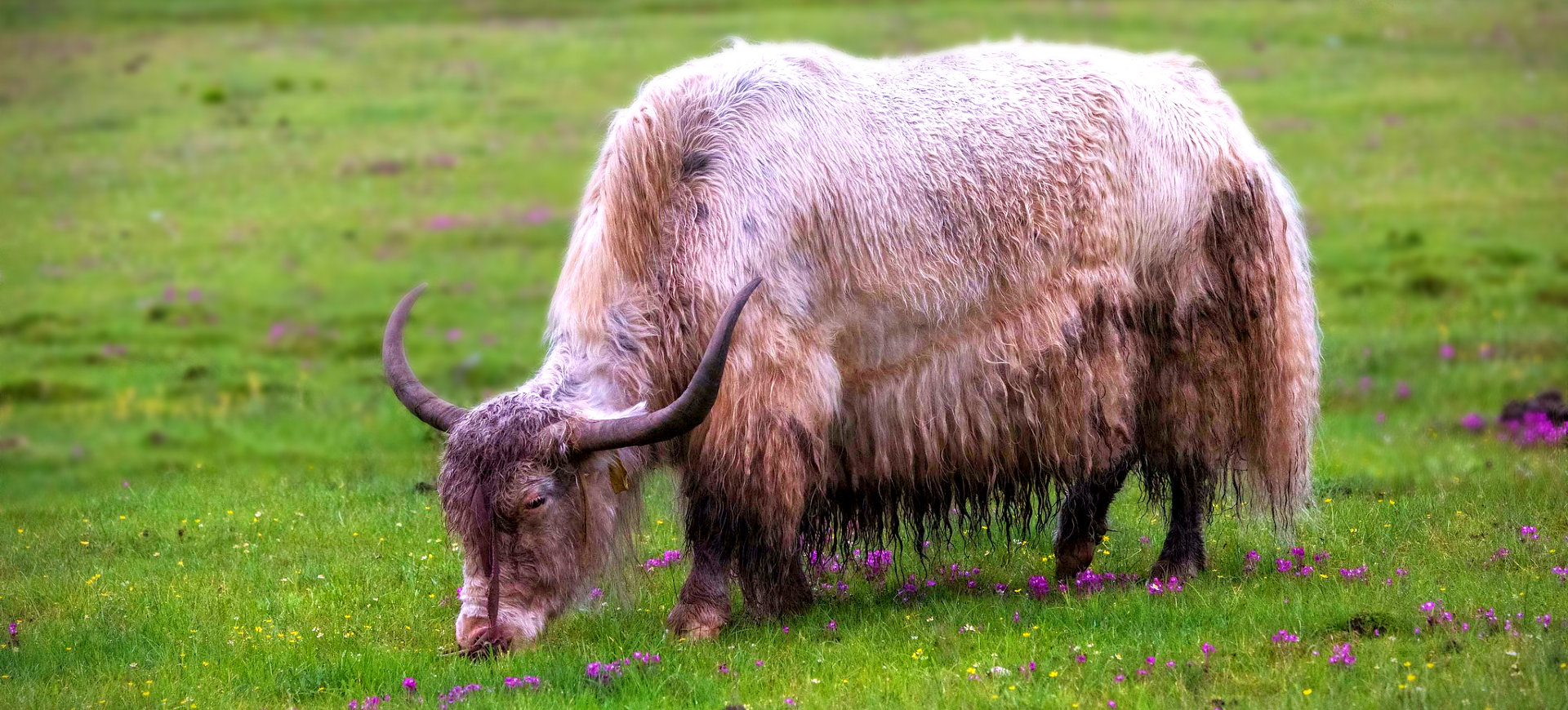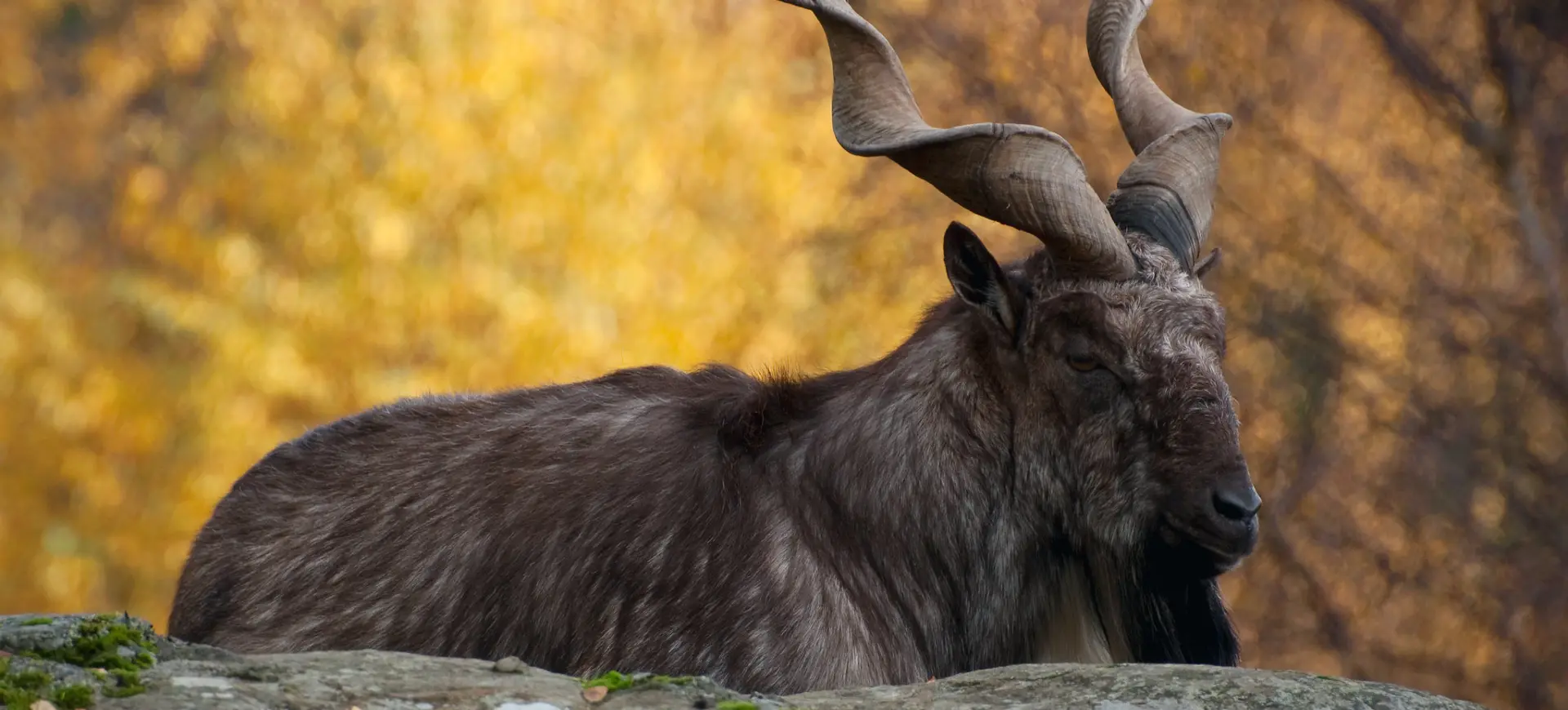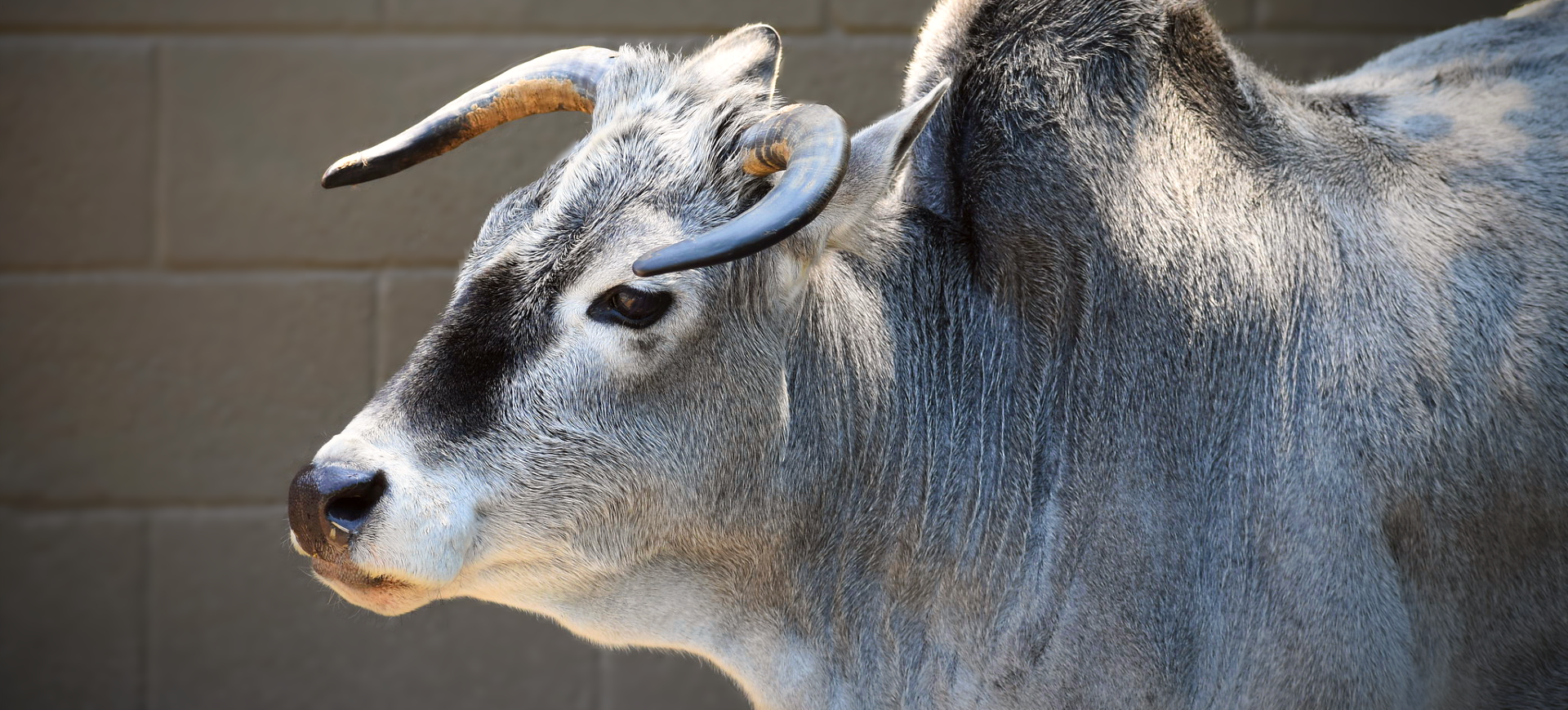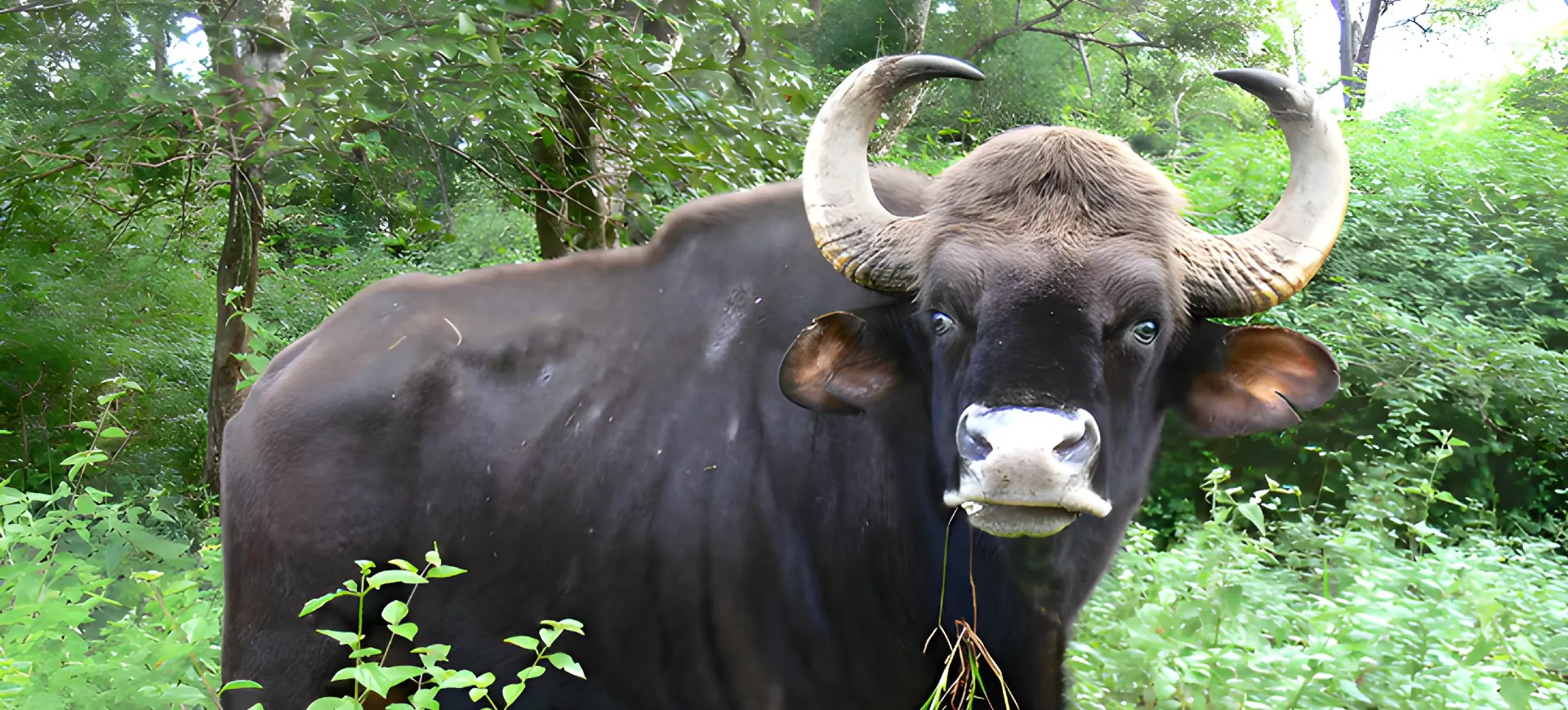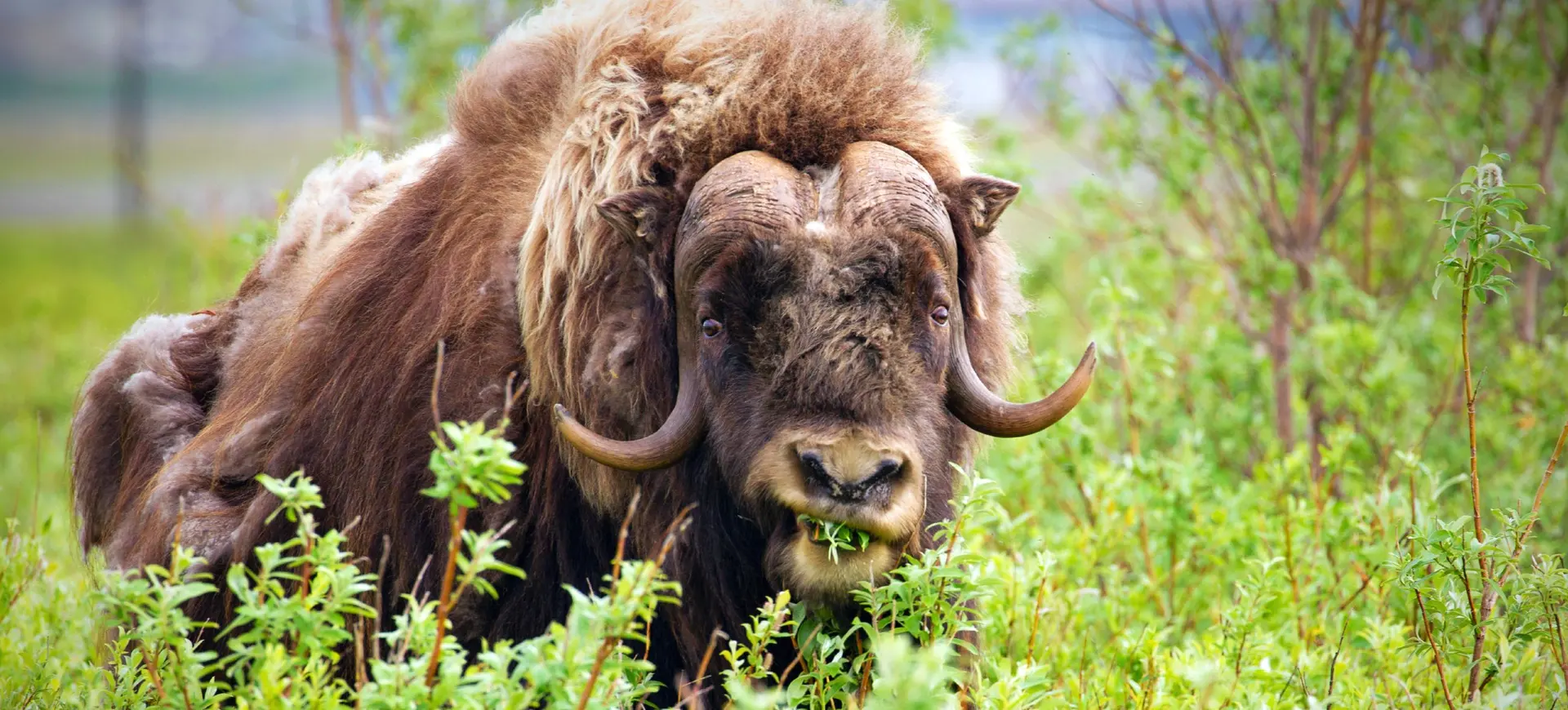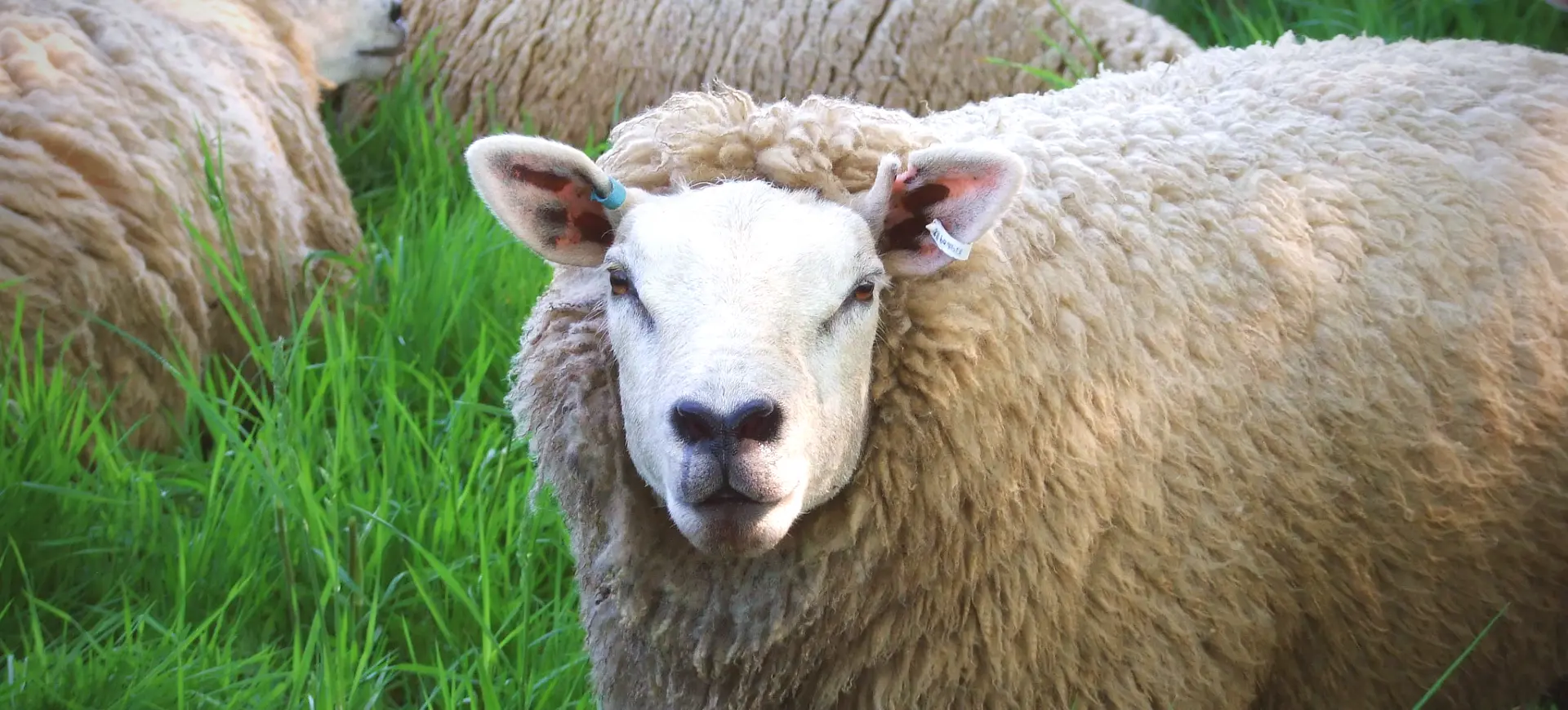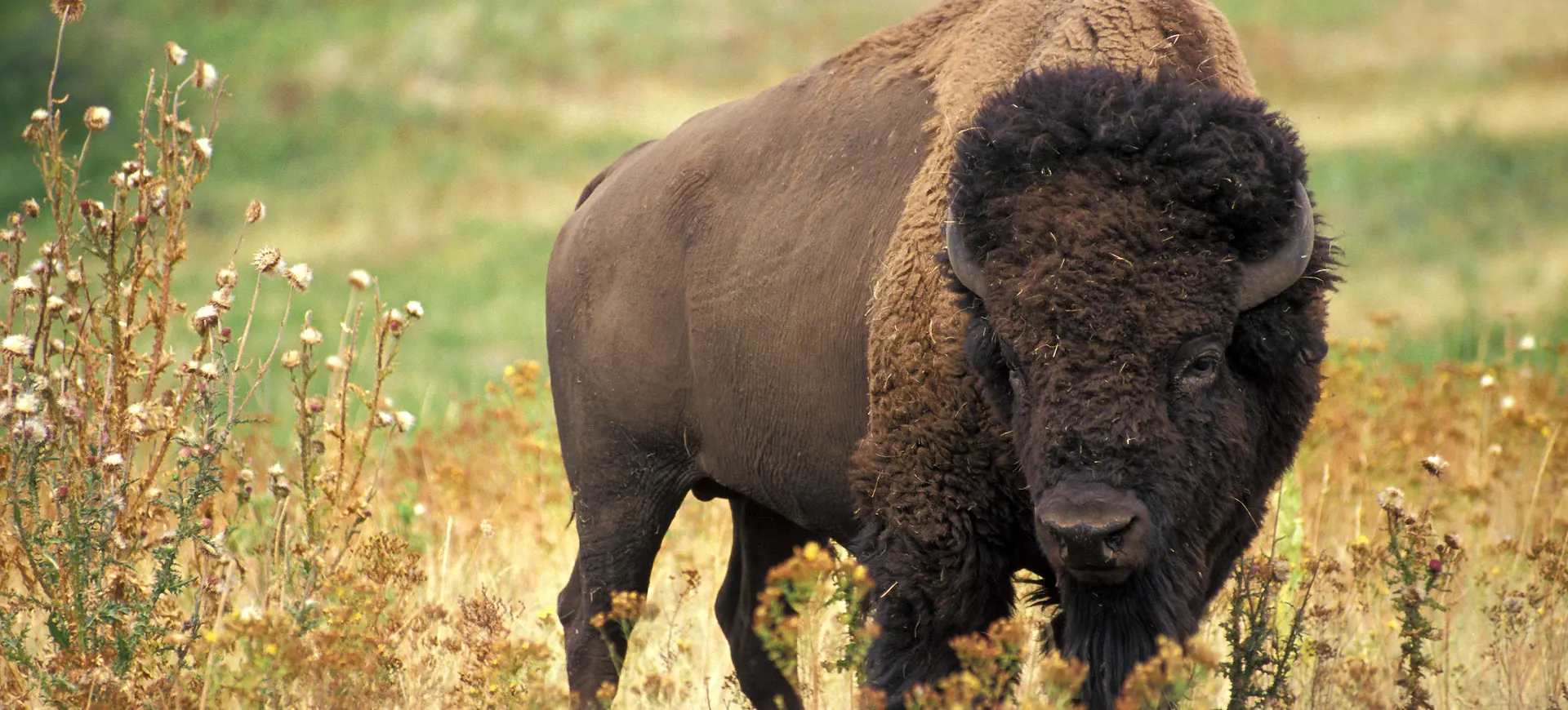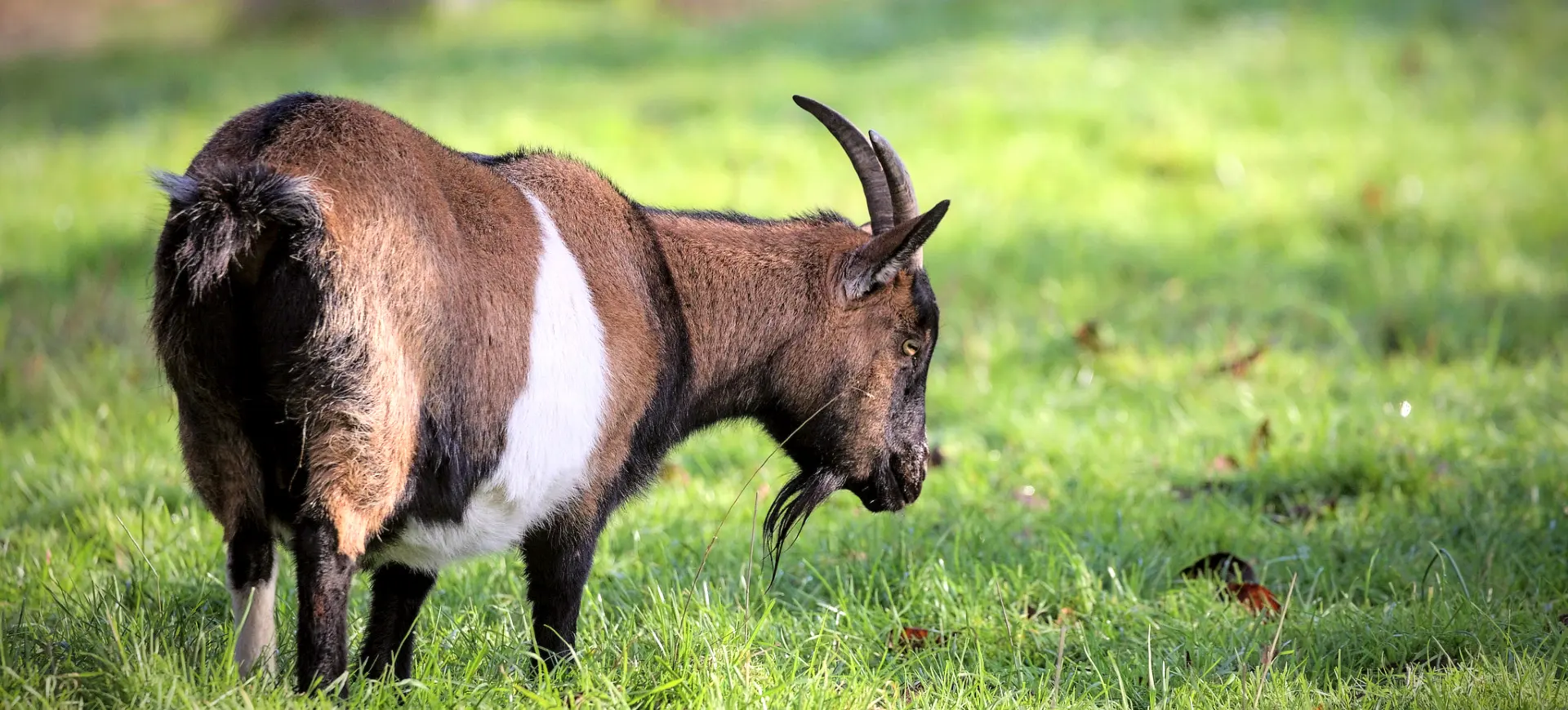Overview
The blue wildebeest (Connochaetes taurinus), also known as the common wildebeest or brindled gnu, is a large, migratory antelope native to the grasslands and savannas of Africa. It is well known for its annual migration, in which vast herds travel across the Serengeti-Mara ecosystem in search of fresh grazing lands. These herbivores are highly social and form large herds, often mingling with zebras and other grazing species for protection against predators. Their primary predators include lions, hyenas, cheetahs, and crocodiles, especially during river crossings.
Blue wildebeests have a robust, muscular build with a sloping back and long, sturdy legs adapted for endurance running. Their coats range from grayish-blue to dark brown, with vertical dark stripes along the shoulders and flanks, giving them a brindled appearance. Both males and females possess curved horns that grow outward and upward, though males’ horns are generally thicker and larger. Calves are born with a sandy-colored coat that darkens as they mature, providing camouflage in the open plains.
These ungulates are crucial in maintaining the grassland ecosystem by facilitating nutrient cycling and shaping vegetation patterns. Their migratory behavior influences predator-prey dynamics and supports biodiversity by providing food for carnivores. Despite threats from habitat fragmentation and human activities, their populations remain stable in many regions due to protected areas and conservation efforts. Blue wildebeests are considered a keystone species, as their movements and grazing significantly impact the health of savanna habitats.
Taxonomy
Kingdom
Phylum
Class
Order
Family
Genus
Species
Type
Current distribution:
Blue wildebeests are widely distributed across sub-Saharan Africa, with large populations in Tanzania, Kenya, Botswana, Namibia, South Africa, Zambia, and Zimbabwe. Their most famous population participates in the Great Migration, where over 1.5 million individuals move between the Serengeti in Tanzania and the Maasai Mara in Kenya. Other non-migratory populations exist in southern Africa, particularly in Kruger National Park and Etosha National Park. Although habitat loss and poaching have reduced some local populations, they remain widespread and stable in many protected areas.
Introduced populations exist in private reserves and game ranches in South Africa, where they are often managed for ecotourism and controlled hunting. Some populations have been translocated to other African regions for conservation and tourism. The greatest threats to their distribution are land conversion for agriculture, fencing that disrupts migration, and illegal hunting. Despite these challenges, their adaptability and large numbers ensure their continued presence in much of their historical range.
Physical Description:
Blue Wildebeest are robust animals with a disproportionate physique. The front of the body is heavily built, featuring a large, box-like head and strong shoulders, while the hindquarters are relatively light. This structure gives the Wildebeest its distinctive, forward-leaning stance. The body is covered in short, dense fur with a striking blue-grey to silvery sheen, with darker vertical stripes decorating the neck and forequarters.
The males, being larger than the females, are formidable, with a strong neck that sports a long, dense black mane extending from the back of the neck to the middle of the back. Both sexes have a beard of stiff, black hair hanging from the throat and neck. The horns of the Wildebeest are broad and shaped like parentheses, extending outwards and then curving inwards and slightly backward.

Lifespan: Wild: ~15 Years || Captivity: ~20 Years

Weight: Male: 330–600 lbs (150–270 kg) || Female: 260–595 lbs (118–270 kg)

Length: Male: 83-102 in (211-259 cm) || Female: 67-98 in (170-249 cm)

Height: Male: 54-60 in (137-152 cm) || Female: 52-55 in (132-140 cm)

Top Speed: 50 mph (80 km/h)
Characteristic:
Native Habitat:
Blue Wildebeest are native to the plains and acacia savannas of Eastern and Southern Africa. These areas provide the short grasses these animals prefer to graze on and access water sources. They inhabit a variety of grassland and open woodland environments, typically in areas that blend open pastures for grazing and tree cover for shade and protection against predators.
The need for readily accessible water largely drives their habitat selection, as Wildebeest require regular drinks and will rarely stray far from water sources. Consequently, the distribution of Blue Wildebeest is closely linked with the availability of watering holes and the rainfall patterns across their range.
Biomes:
Biogeographical Realms:
Continents:
Countries:
Diet:
Diet & Feeding Habits:
The Blue Wildebeest is predominantly a grazer, feeding mainly on the small grasses growing on the African plains. They have evolved with a special adaptation: a broad muzzle that allows them to take large bites and efficiently graze on these short grasses. This dietary preference determines their migratory habits, as they follow the seasonal patterns of grass availability and nutritional quality.
While primarily a grazer, the Blue Wildebeest is not strictly a specialist. During the dry seasons, when short grasses are scarce, they browse foliage, shoots, and other plant matter to supplement their diet. This dietary flexibility is key to the Wildebeest’s survival during food scarcity.
Mating Behavior:
Mating Description:
The mating system of Blue Wildebeest is referred to as a ‘lekking system.’ During the mating season or rut, males establish small territories, or leks, that they defend vigorously against rival males. These territories are typically around 3000 square meters and are located in areas with abundant resources, such as food and water, attractive to females.
Females move freely among the leks, and the males display by engaging in elaborate behaviors, such as pawing the ground, horning the ground, low-stretch displays, and high-stretch displays, all designed to entice females to mate. The rut is noisy and energetic, often involving considerable fighting between males. After mating, the female will leave the male’s territory, and the male will attempt to attract a new mate.
Reproduction Season:
Birth Type:
Pregnancy Duration:
Female Name:
Male Name:
Baby Name:
Social Structure Description:
Blue Wildebeest live in a complex, multi-tiered social system. They form herds of varying sizes, from small family groups to massive aggregations during the annual migration. A basic social unit is a small group of adult females and their offspring, while males may form bachelor groups or live solitarily.
During the mating season, dominant males establish and defend territories to attract females. These territorial boundaries dissolve Outside the mating season, and the Wildebeest live in large mixed-sex herds. Despite their seemingly chaotic social structure, studies have shown that Wildebeest herds are not random aggregations but structured groups where individuals associate preferentially with relatives.
Groups:
Conservation Status:
Population Trend:
The Blue Wildebeest is one of the most abundant large mammals in Africa, with an estimated population between 1.5 and 2 million individuals in the wild. The population is believed to be stable, with no substantial change recorded in recent surveys. The most significant population resides within the Serengeti ecosystem, where the spectacular annual migration occurs.
However, smaller, fragmented populations exist throughout Southern and Eastern Africa. These smaller populations are more vulnerable to local extinction due to habitat fragmentation, human encroachment, and other anthropogenic factors. On a brighter note, the Blue Wildebeest has also adapted well to protected areas. It is common in many of Africa’s wildlife reserves, where they contribute significantly to tourism and biodiversity conservation.
Population Threats:
The primary threat to the Blue Wildebeest is habitat loss and fragmentation due to human activities, such as agriculture, settlement expansion, and infrastructure development. As migratory animals, Wildebeest require large, unobstructed landscapes to follow their seasonal movements, and barriers can disrupt these routes, leading to population decline.
Another significant threat is poaching for bushmeat, particularly in areas outside protected reserves. The impact of diseases, often transmitted from domestic livestock, also poses a threat. Lastly, climate change could potentially disrupt the delicate balance of the ecosystems they inhabit, especially by altering rainfall patterns, which in turn influences the growth of the grasses they depend upon.
Conservation Efforts:
Blue Wildebeest conservation is predominantly focused on maintaining and protecting their habitats. This includes establishing and managing protected areas and wildlife corridors to preserve the Wildebeest’s migratory routes. In many parts of their range, efforts are also being made to mitigate human-wildlife conflict.
Another critical aspect of Wildebeest conservation is poaching control, achieved through law enforcement, community engagement, and education. On a broader scale, initiatives such as the Great Green Wall in Africa aim to combat desertification and promote biodiversity, indirectly benefiting species like the Blue Wildebeest.
Additional Resources:
Fun Facts
- The Blue Wildebeest is also known as the Brindled Gnu due to the dark vertical stripes on its forequarters and neck.
- The name “Wildebeest” comes from the Dutch and Afrikaans for “wild beast” or “wild cow.”
- They can run at up to 50 mph (80 km/h) to escape predators.
- Blue Wildebeest males are known to engage in “necking” battles, where they combat each other with their muscular necks and sharp horns.
- Blue Wildebeest communicate using a range of sounds, including moos, grunts, and explosive snorts.
- They are known for their spectacular mass migration in the Serengeti, where over 1.5 million animals move together for fresh grazing.
- The Blue Wildebeest is one of Africa’s most successful grazing animals, and it is believed to play a crucial role in shaping the grassland biome.
- Despite their robust appearance, Blue Wildebeest are excellent swimmers.
- Newborn Wildebeest can run with the herd just a few minutes after birth.
- Blue Wildebeest have a mutualistic relationship with other species, like Zebras, as they eat different parts of the same type of grass and look for predators together.










